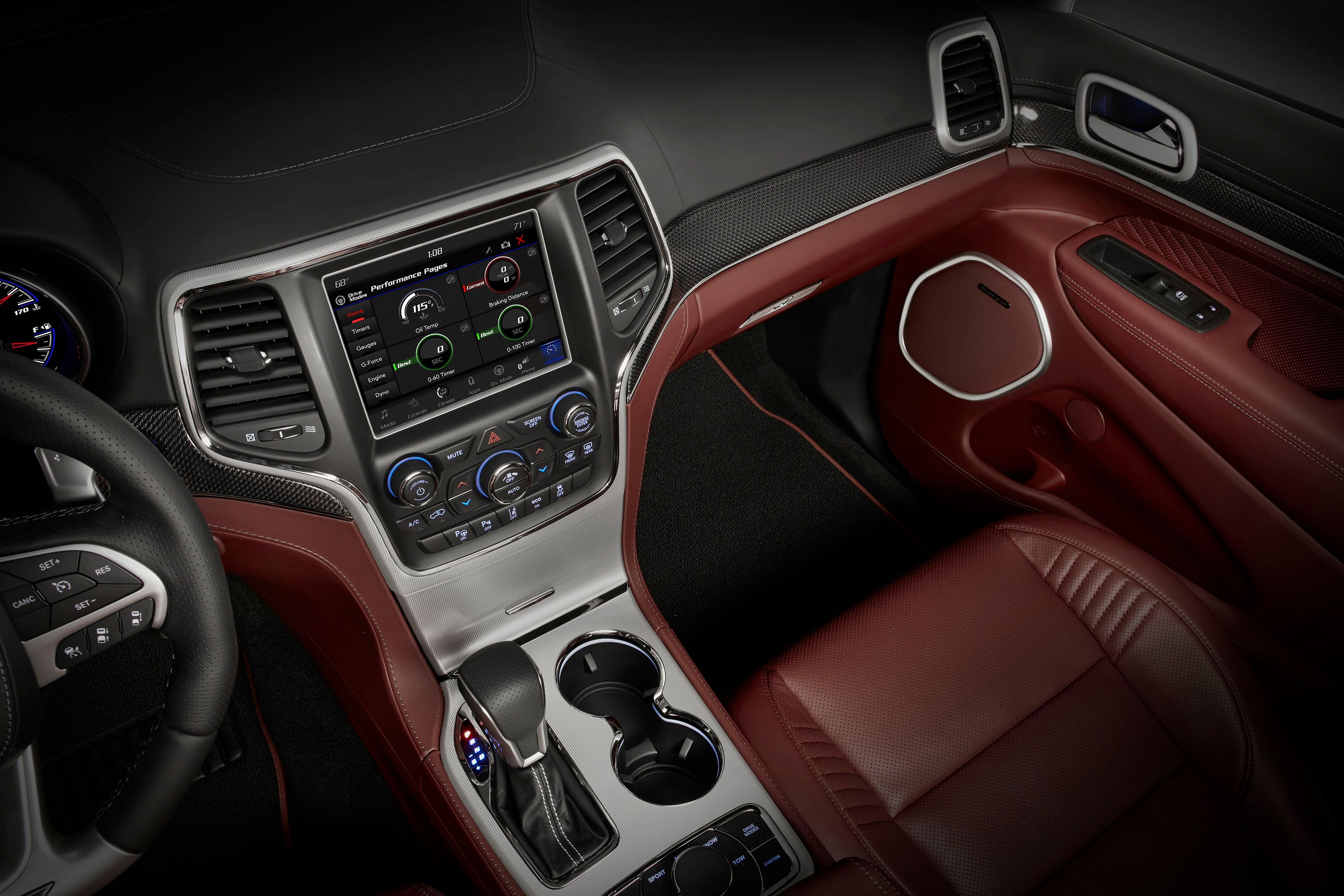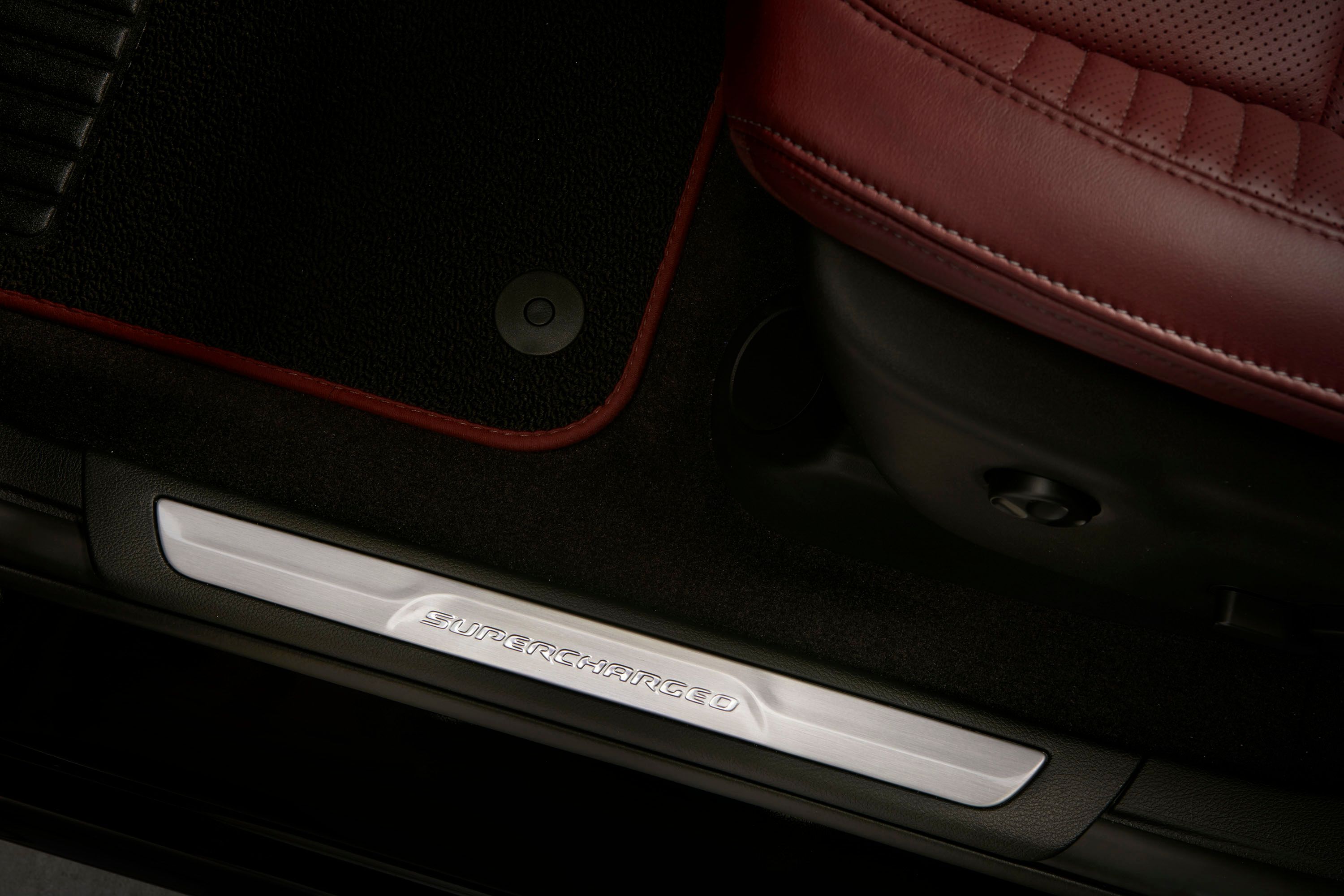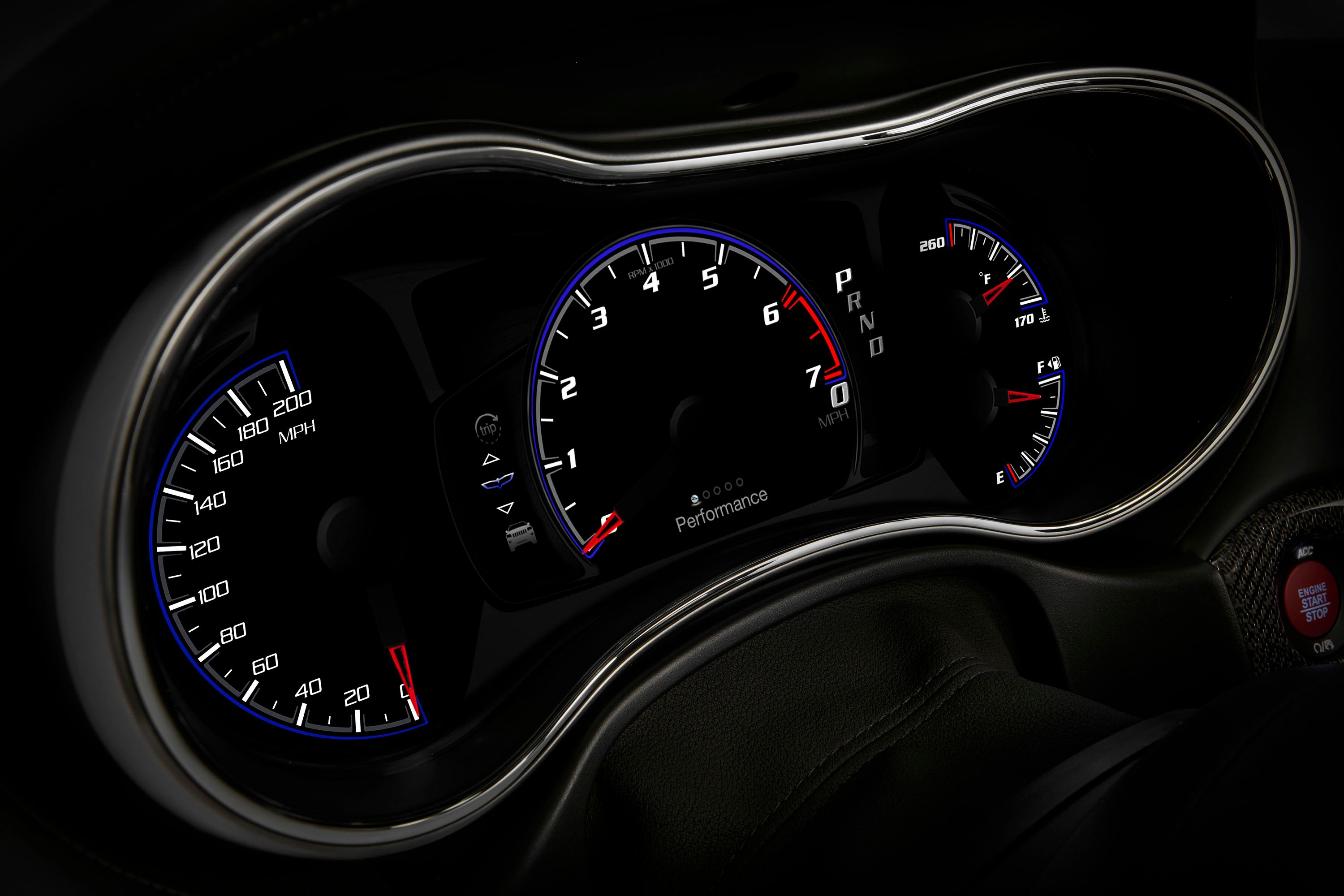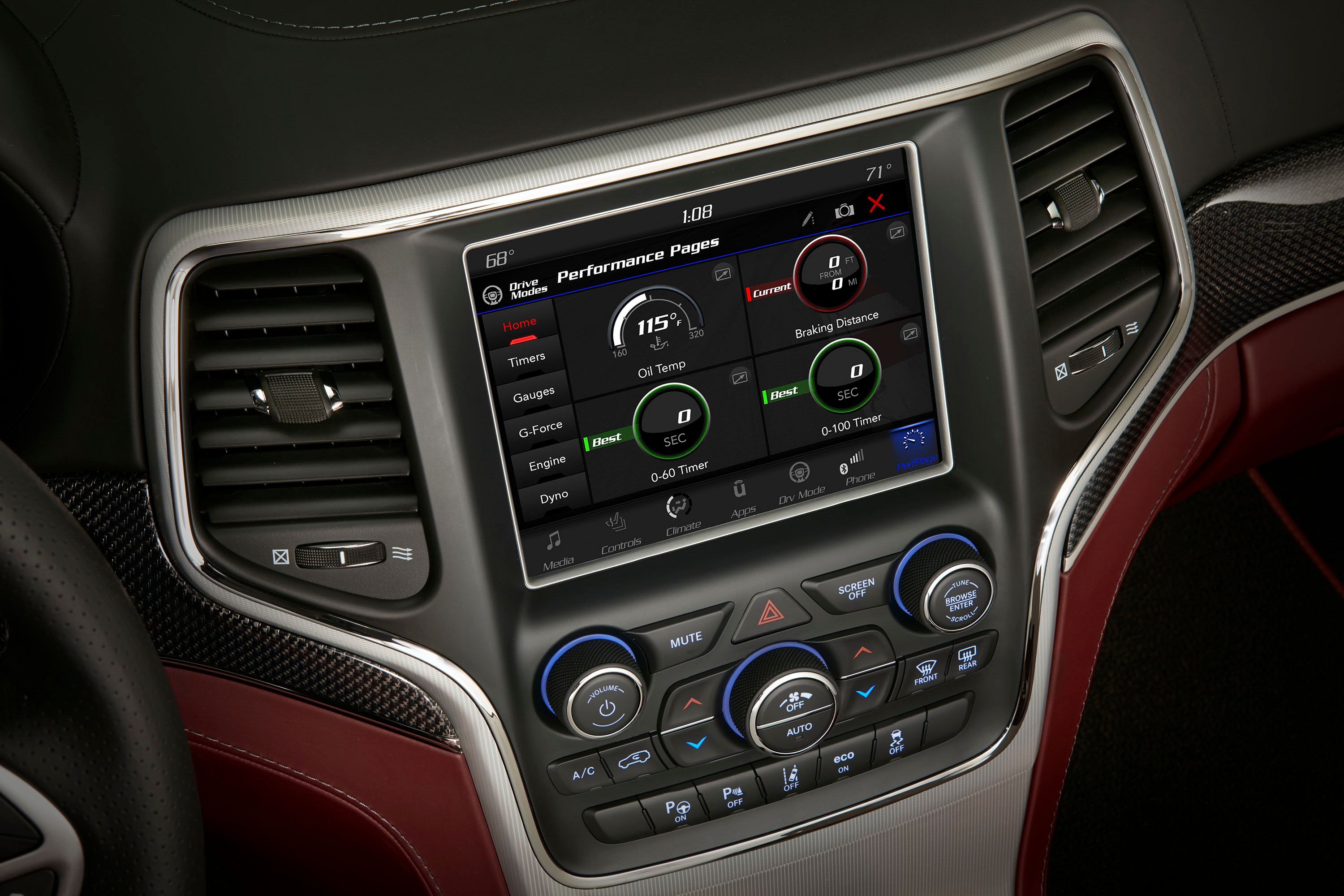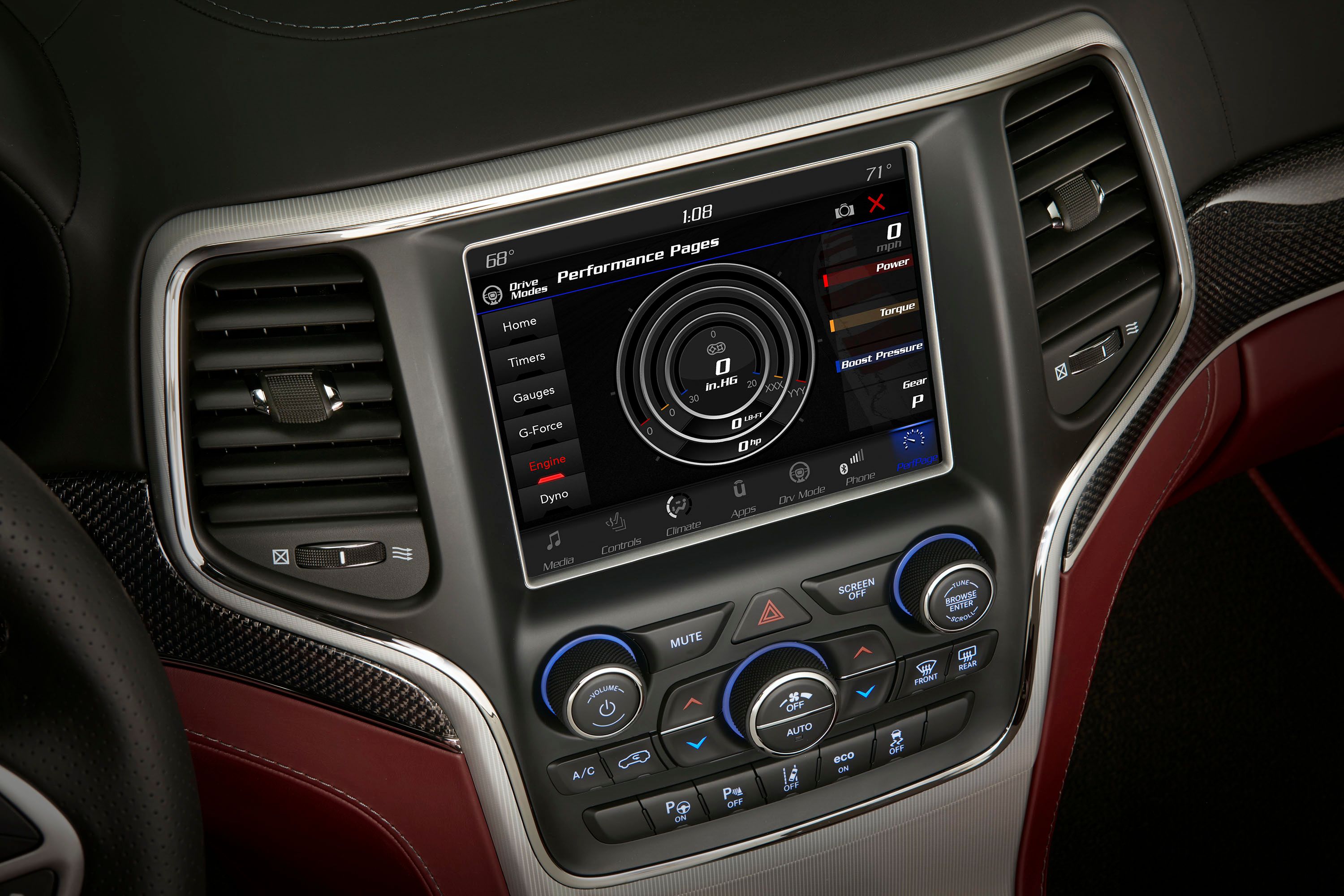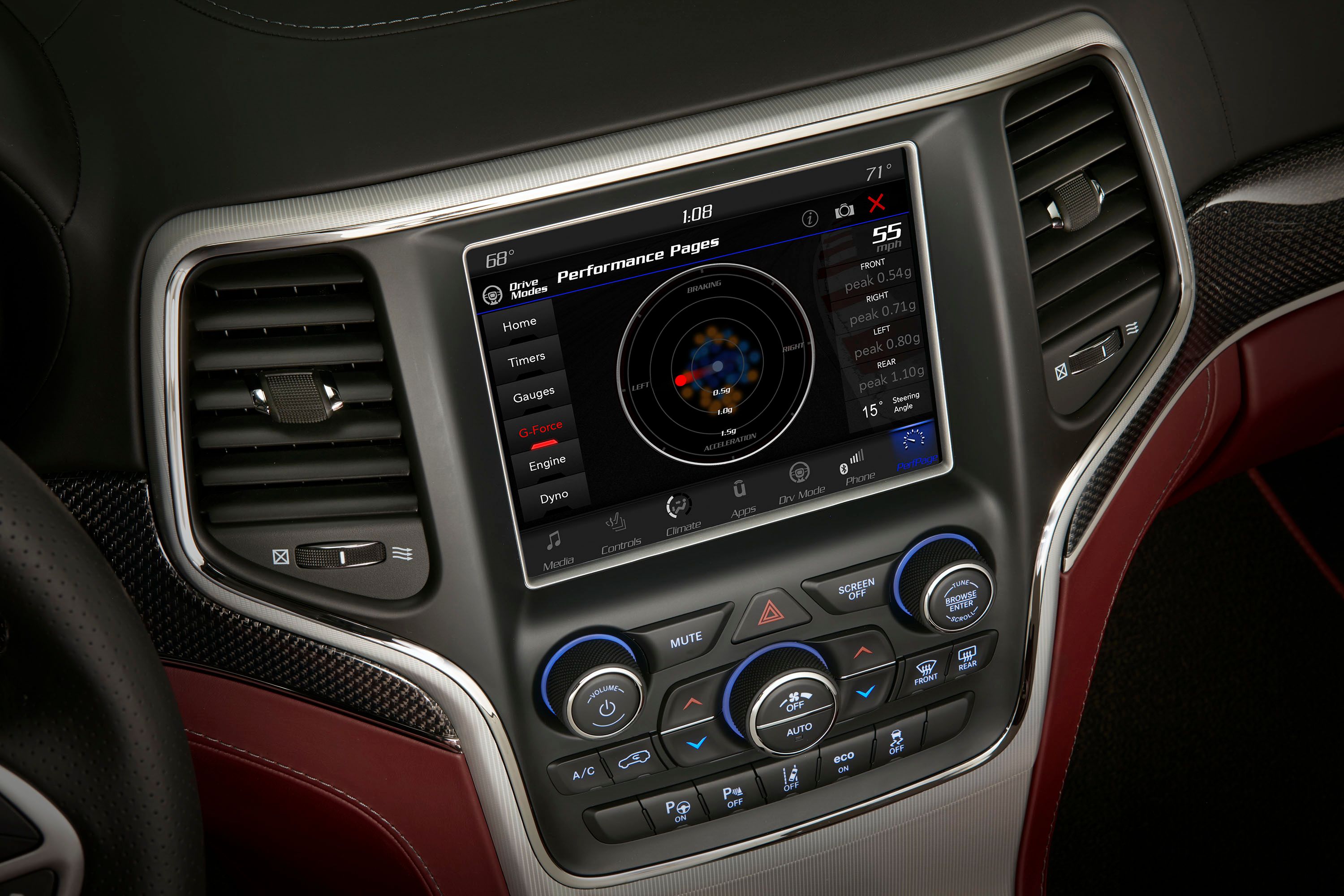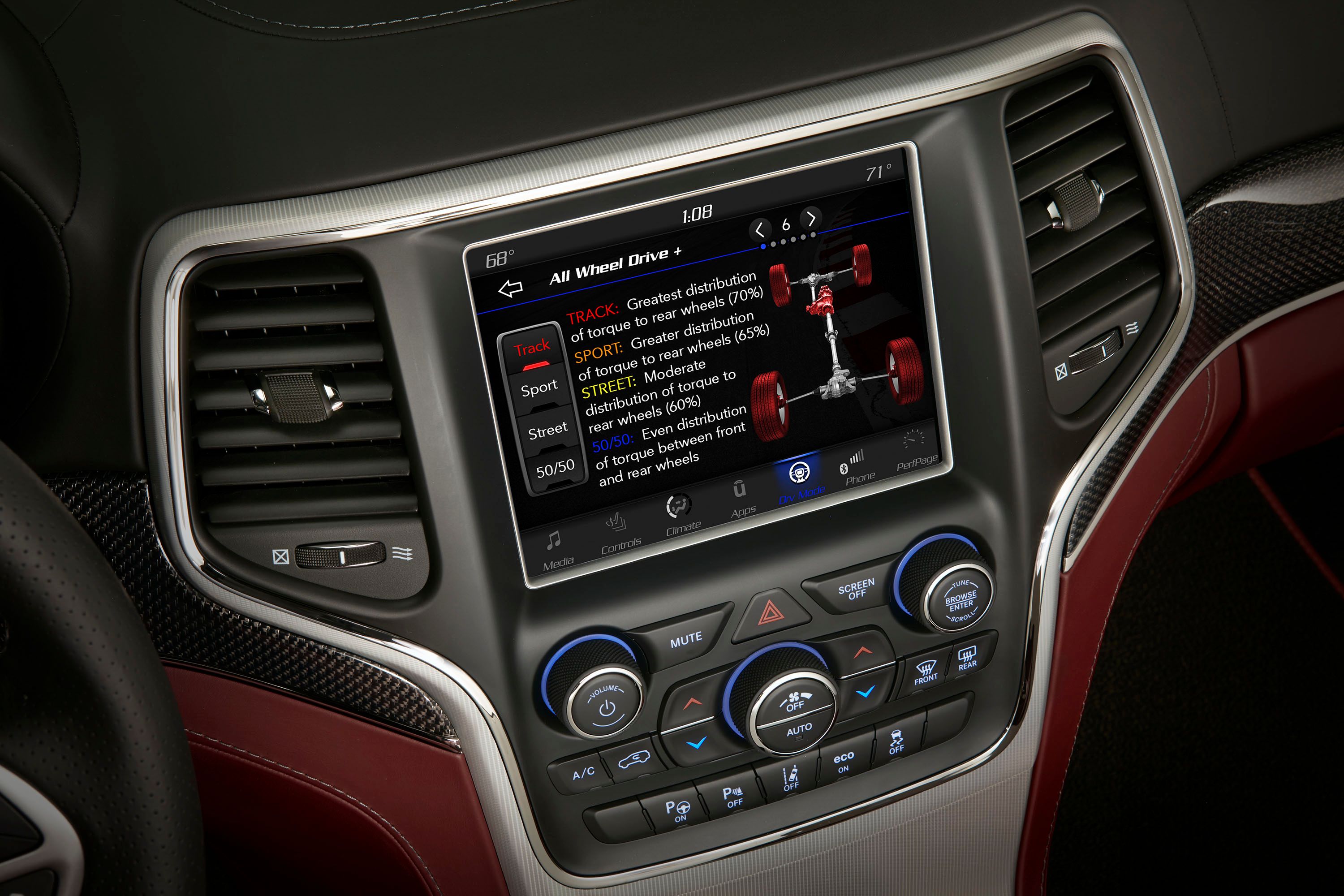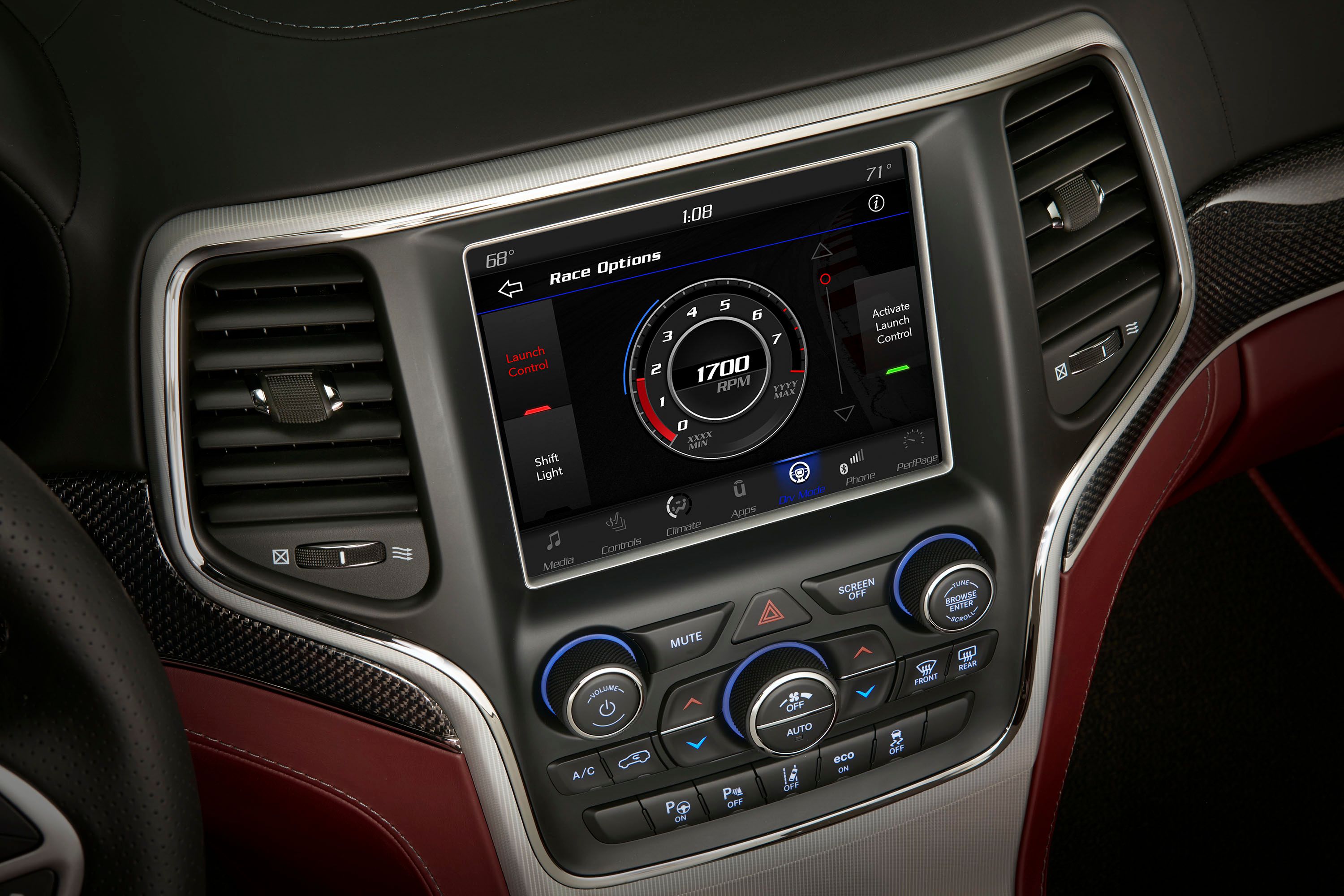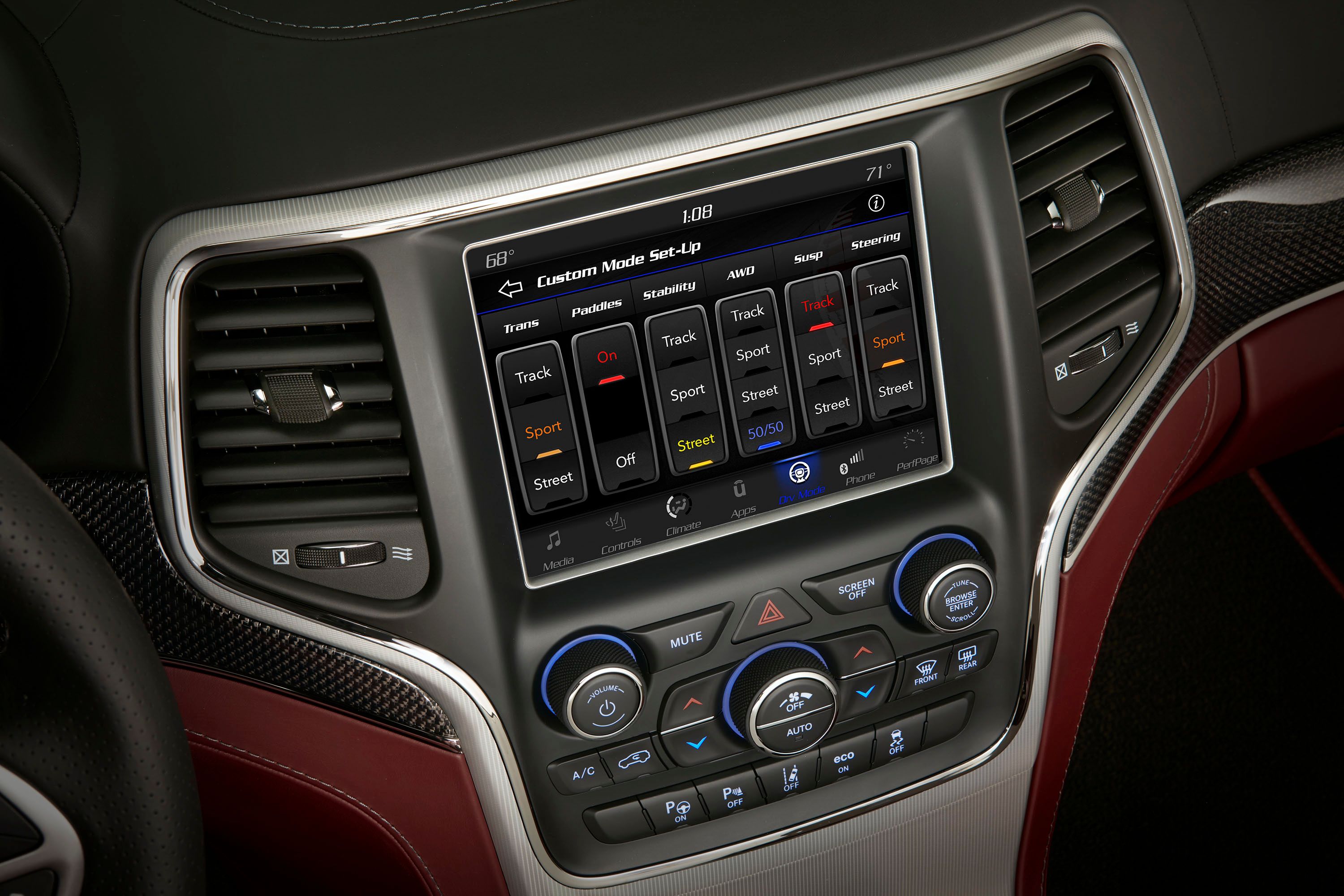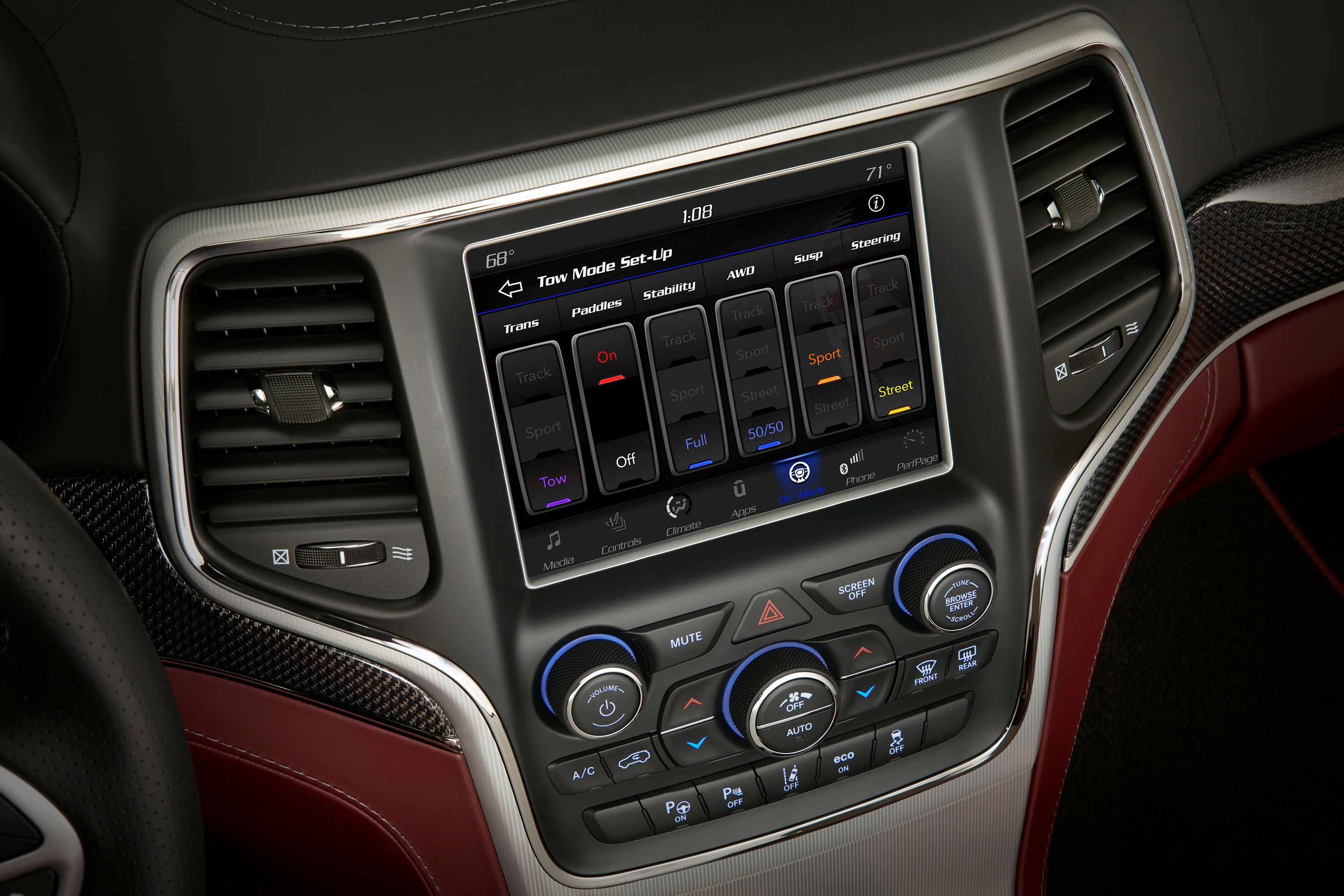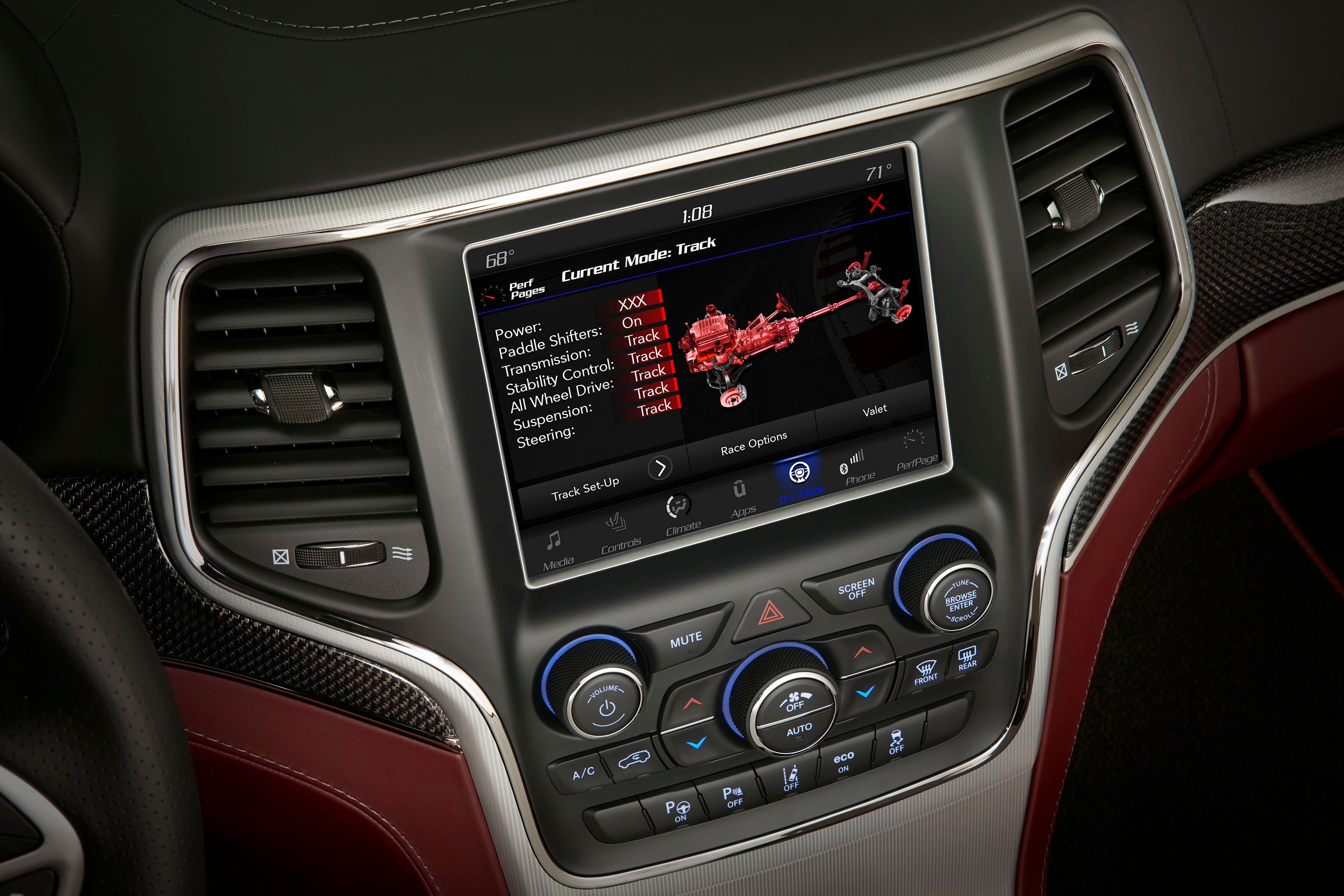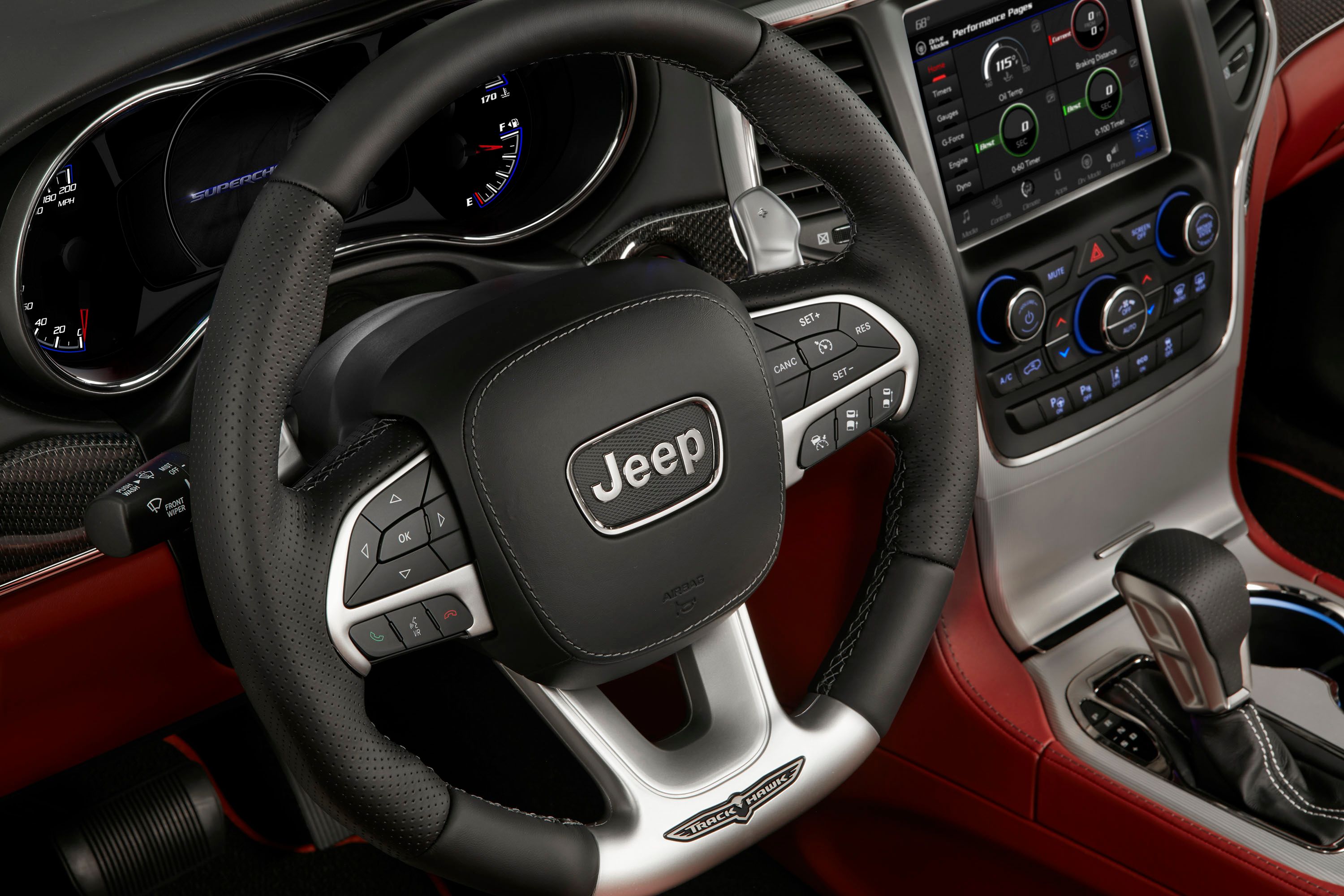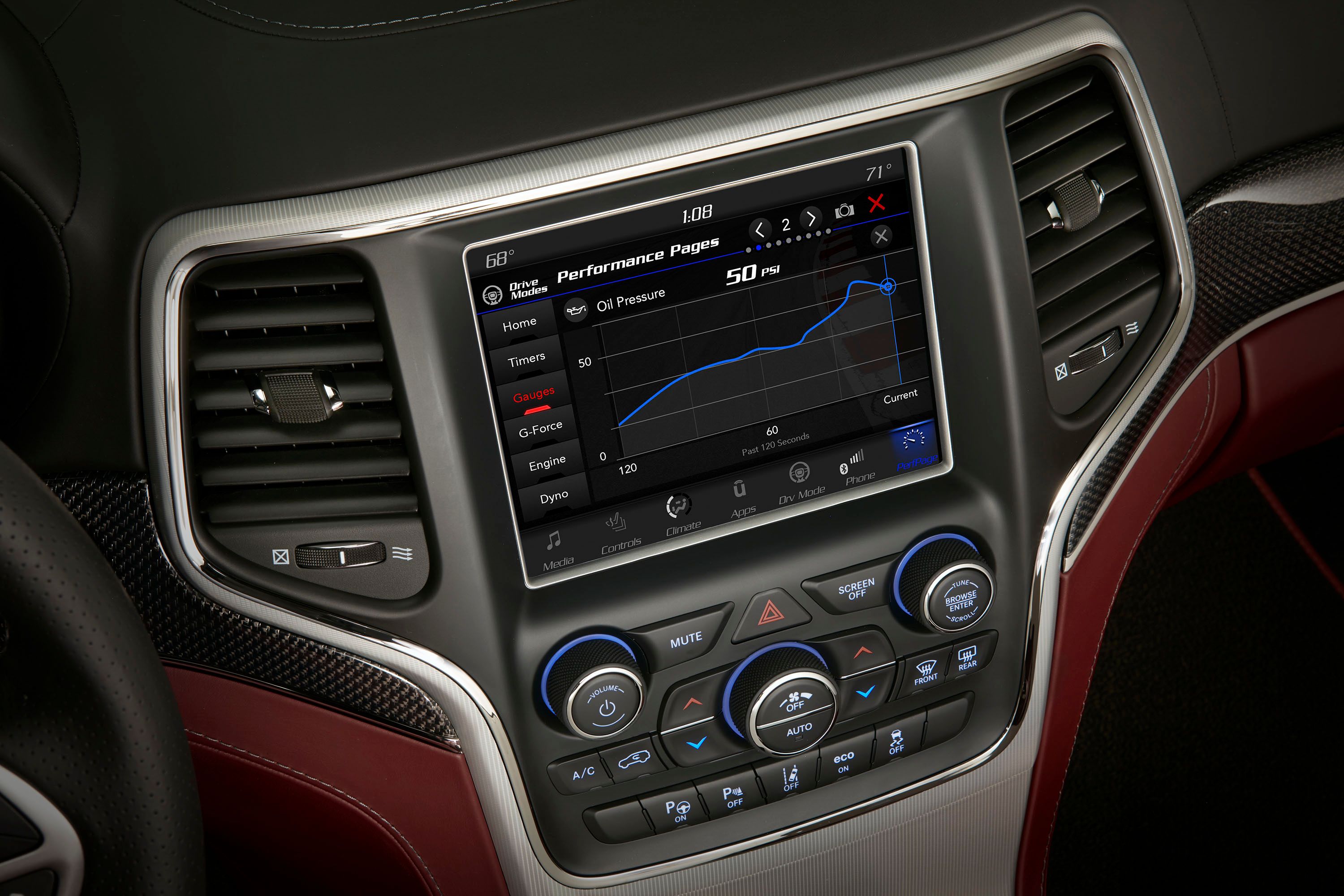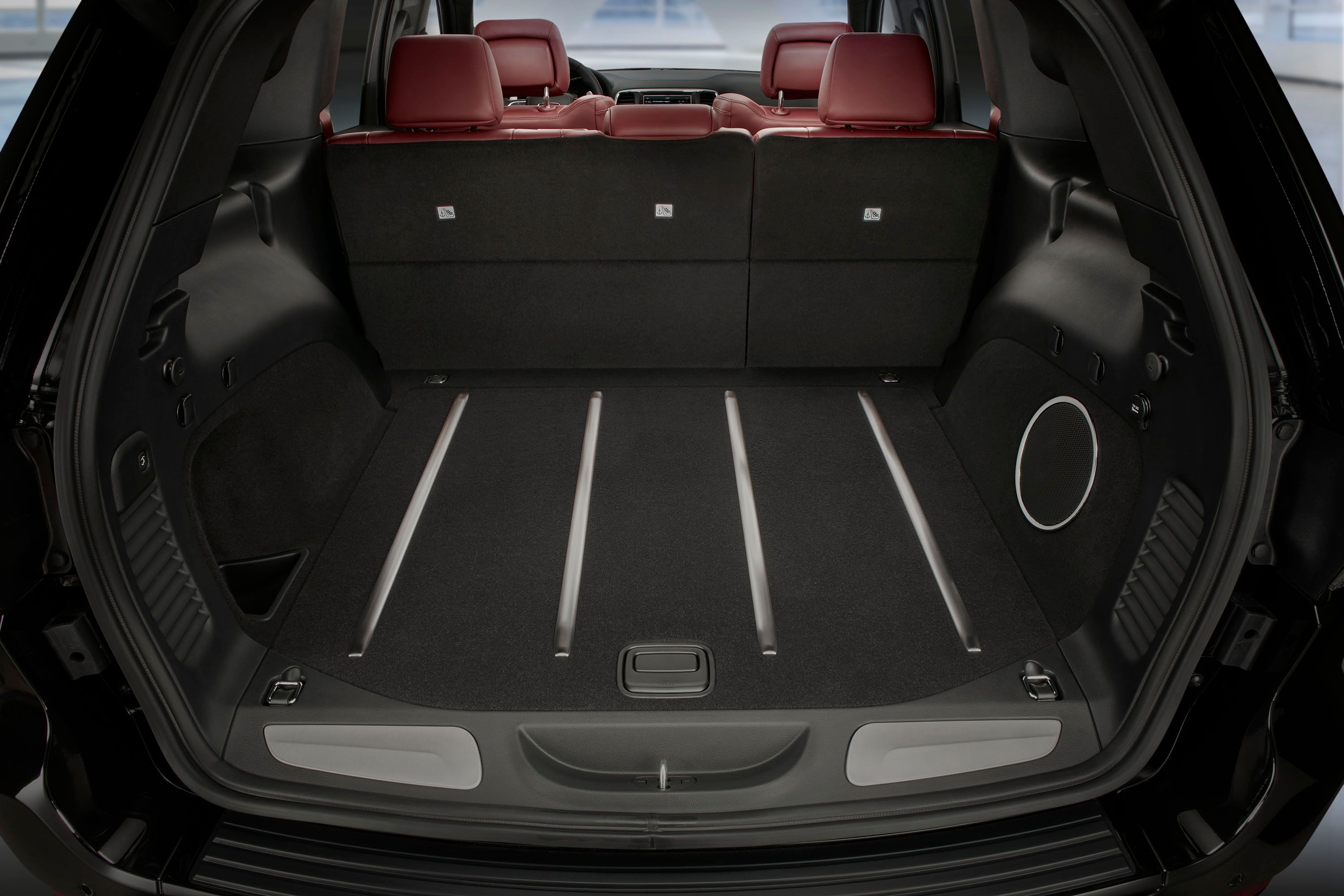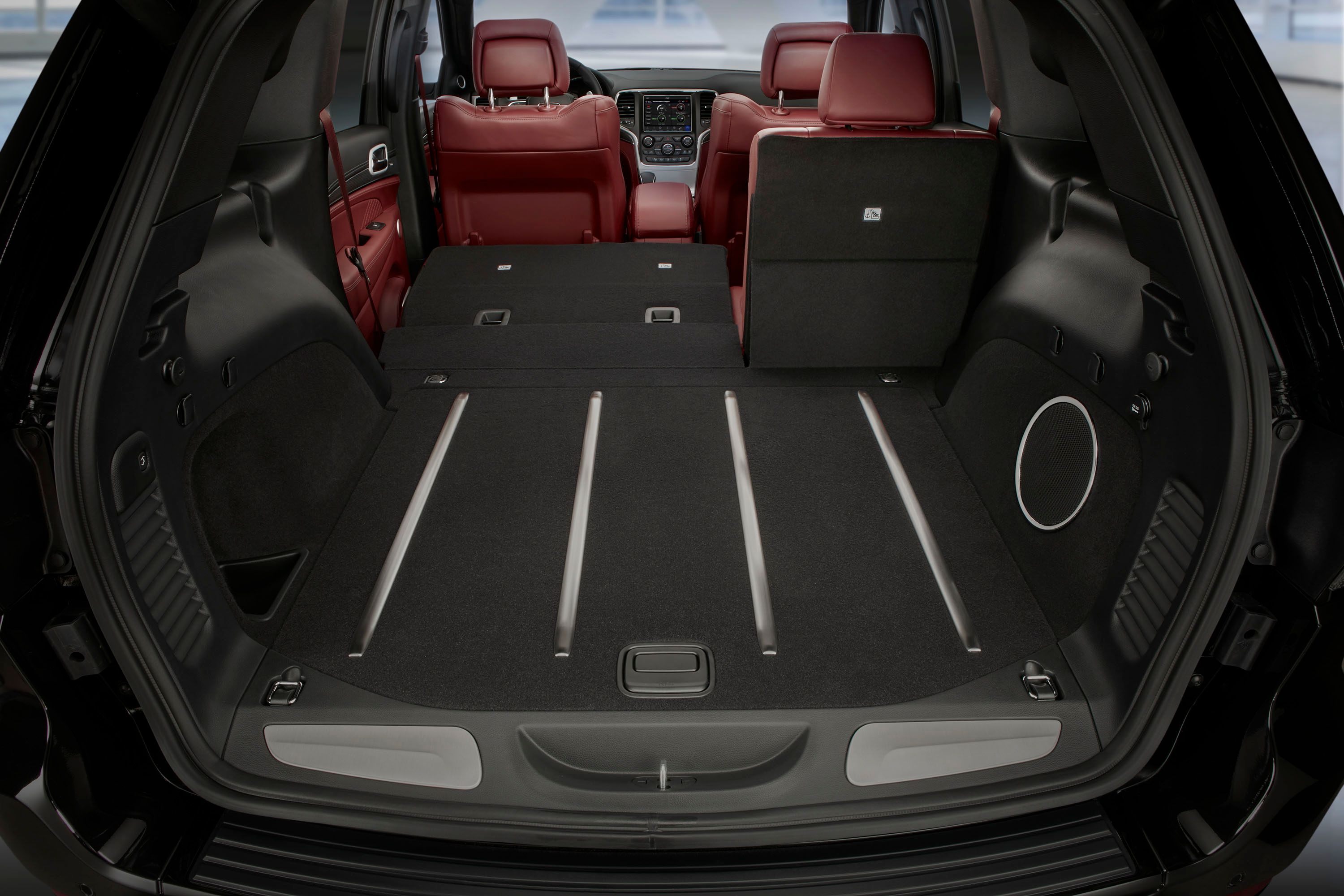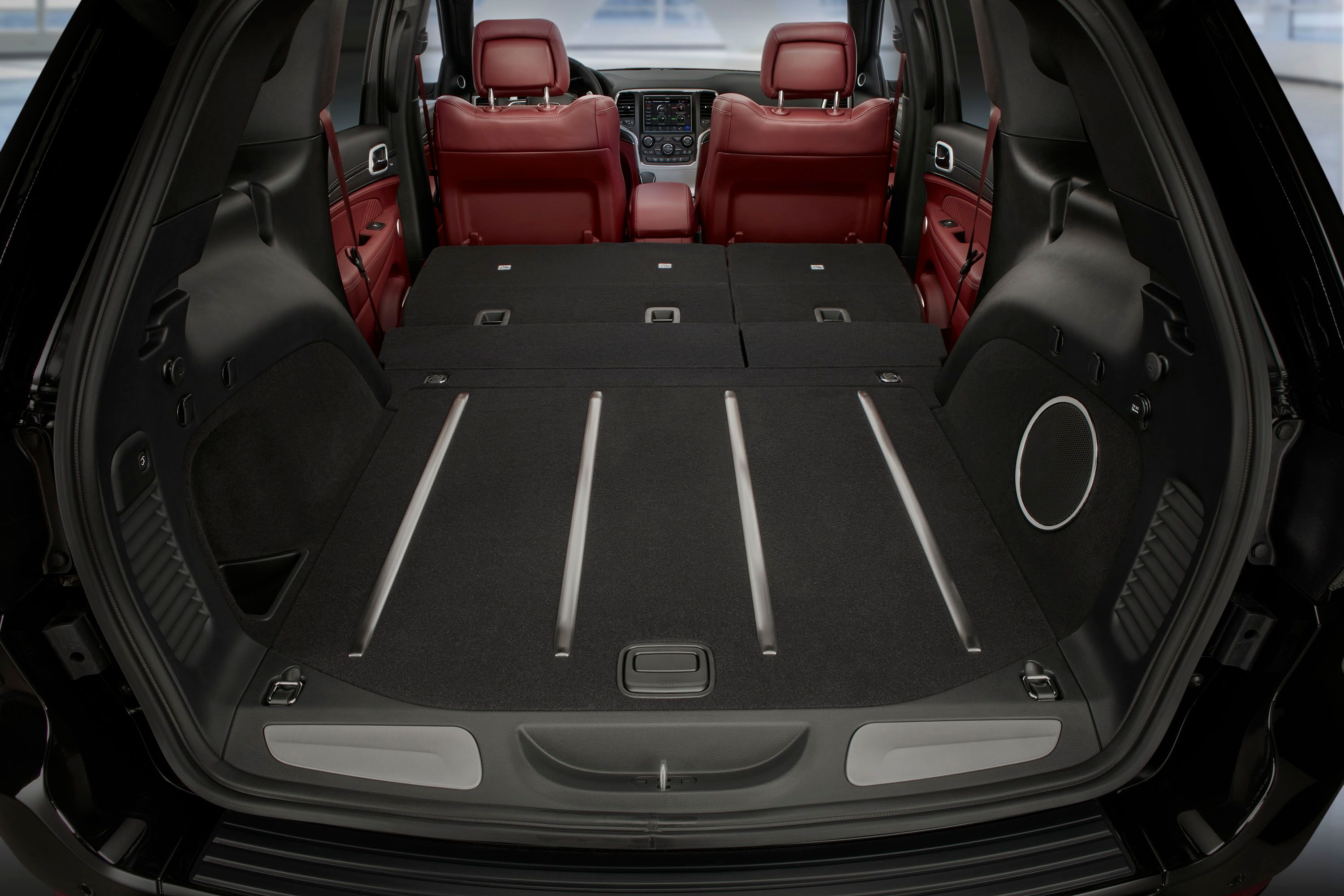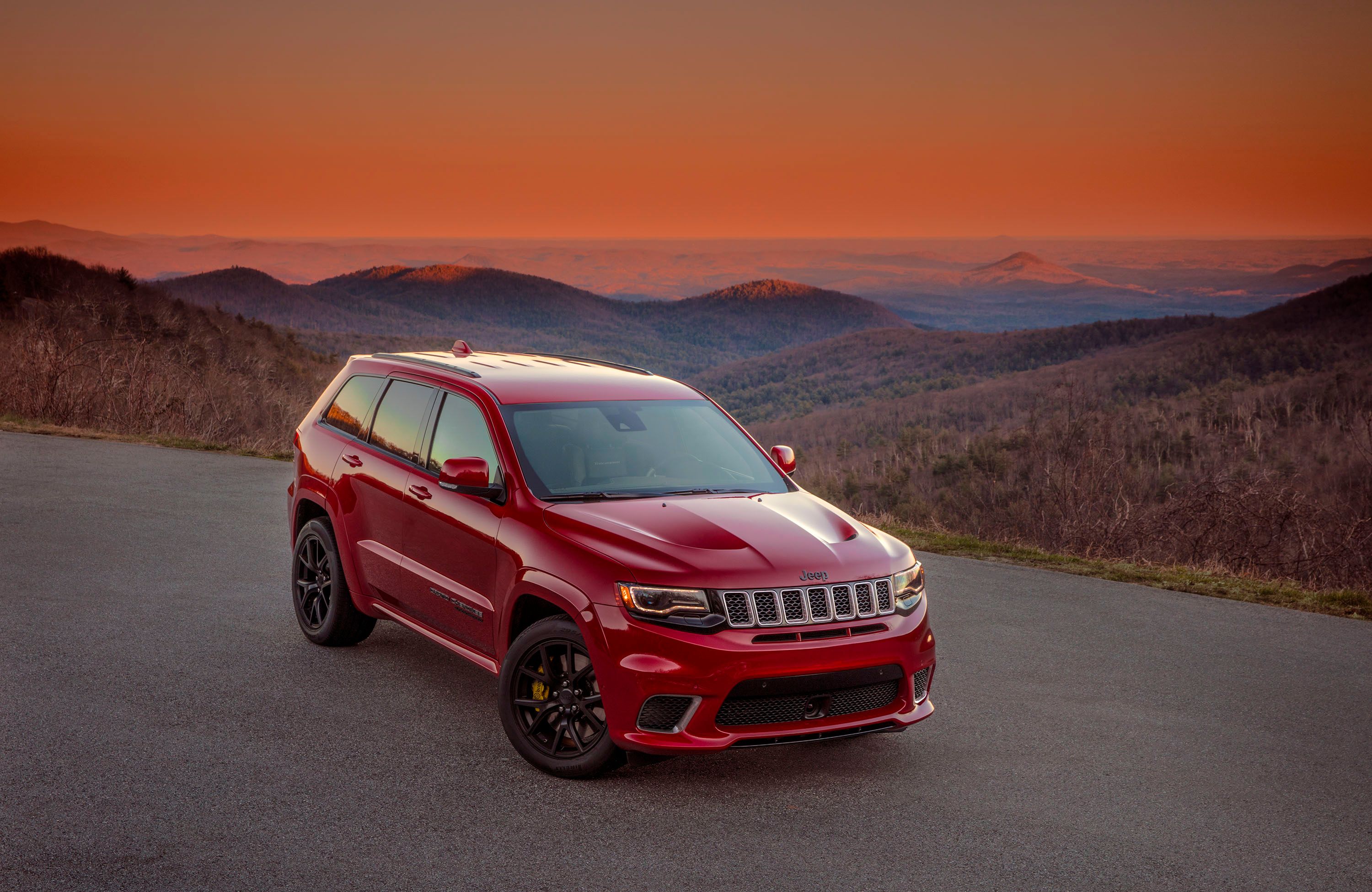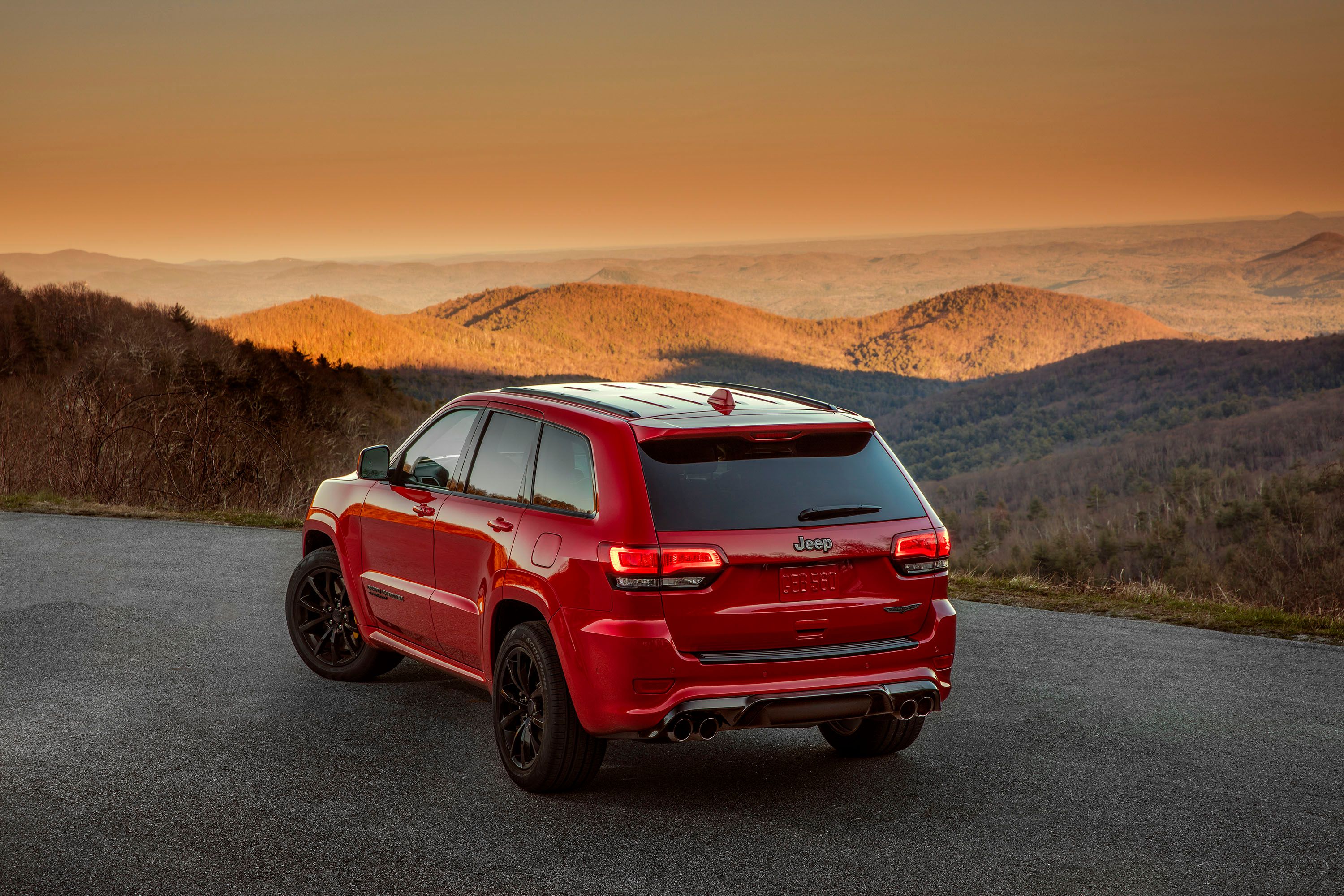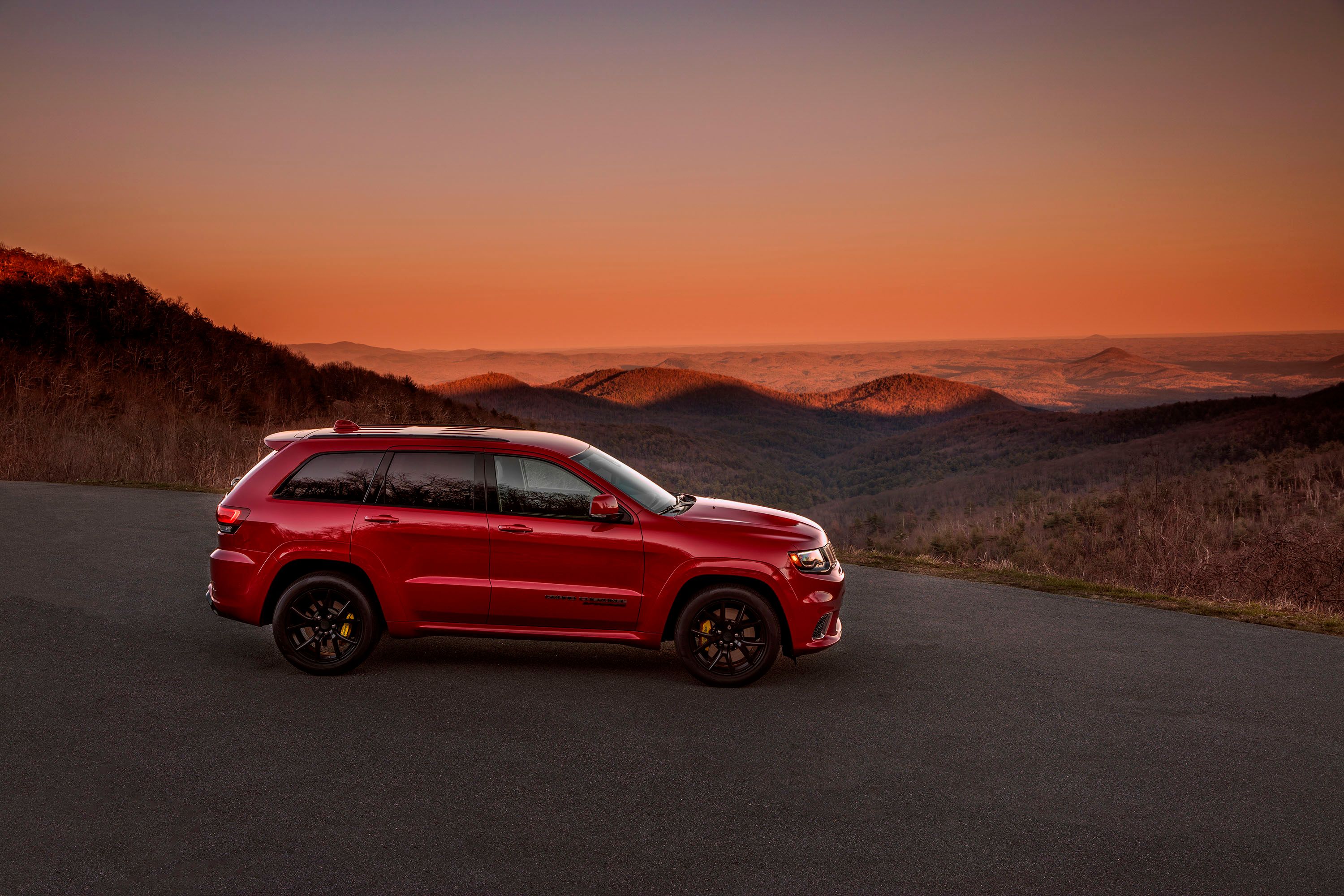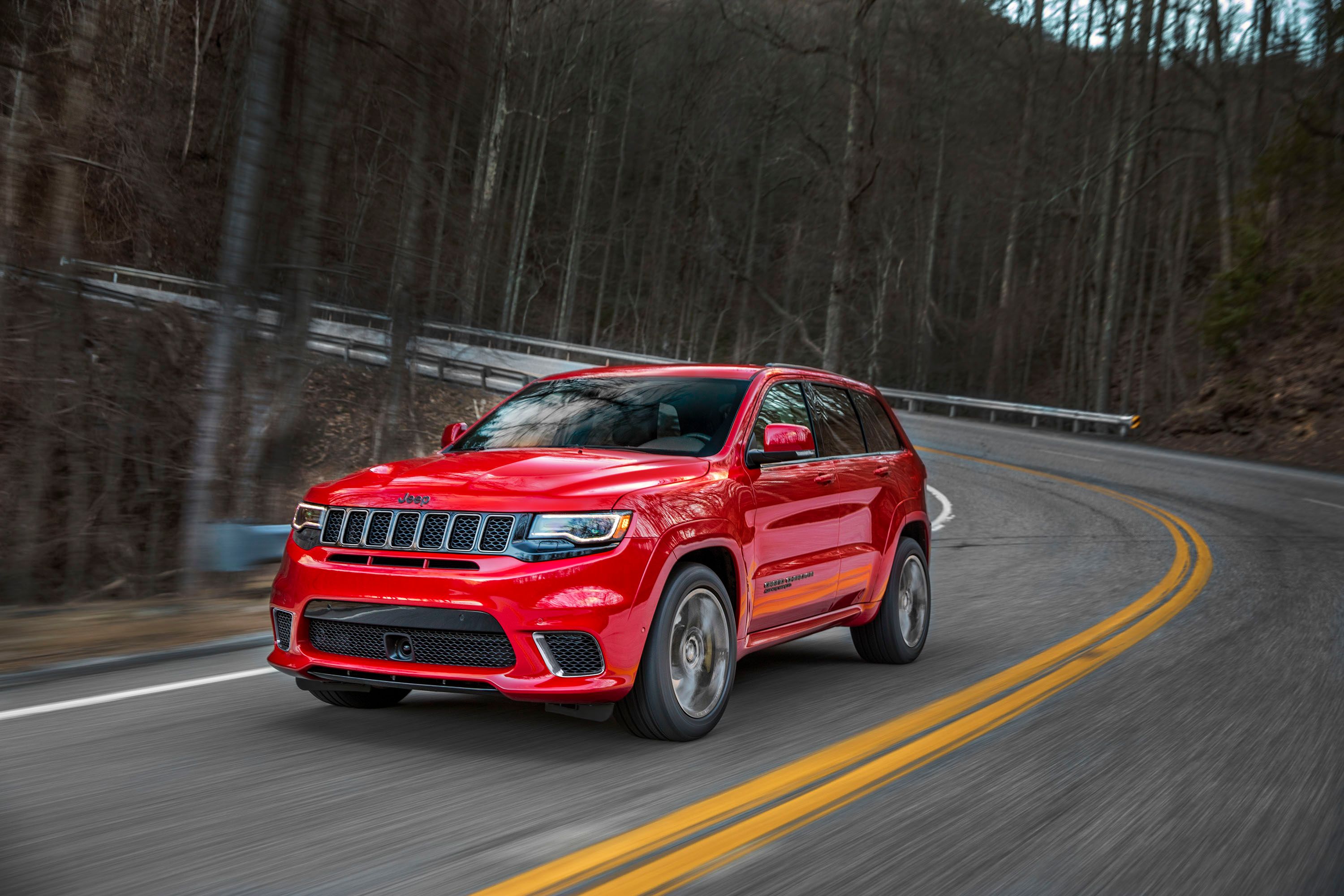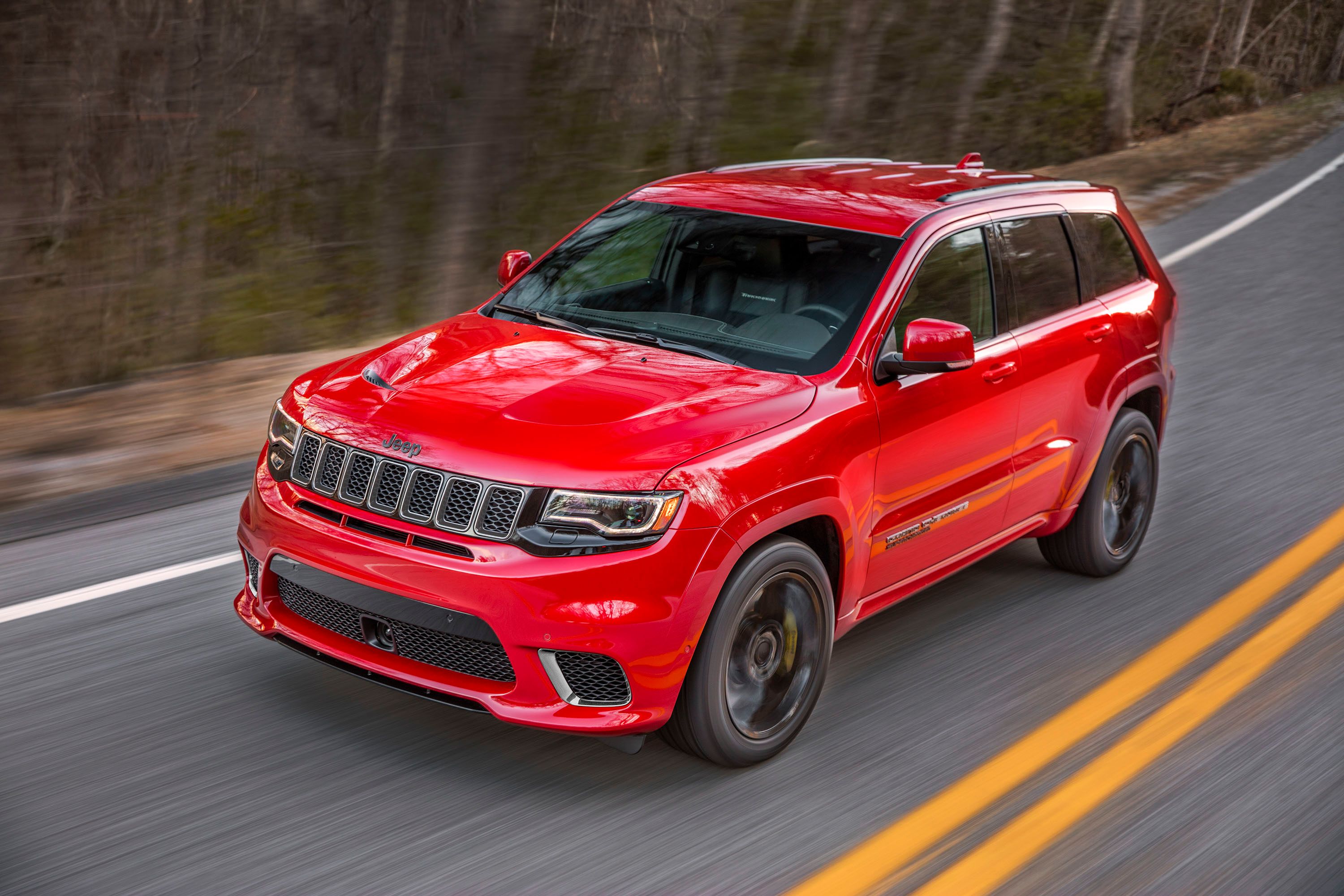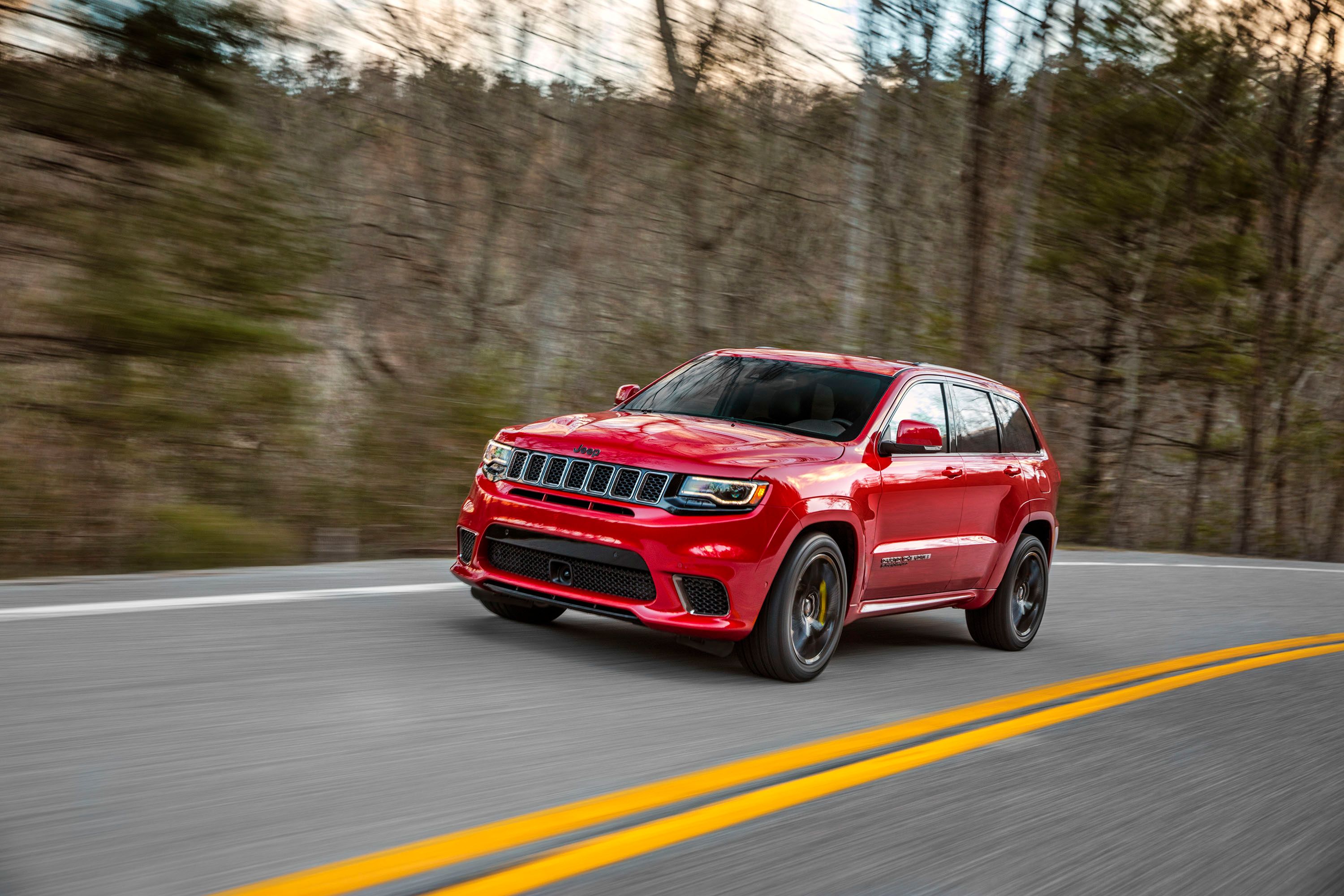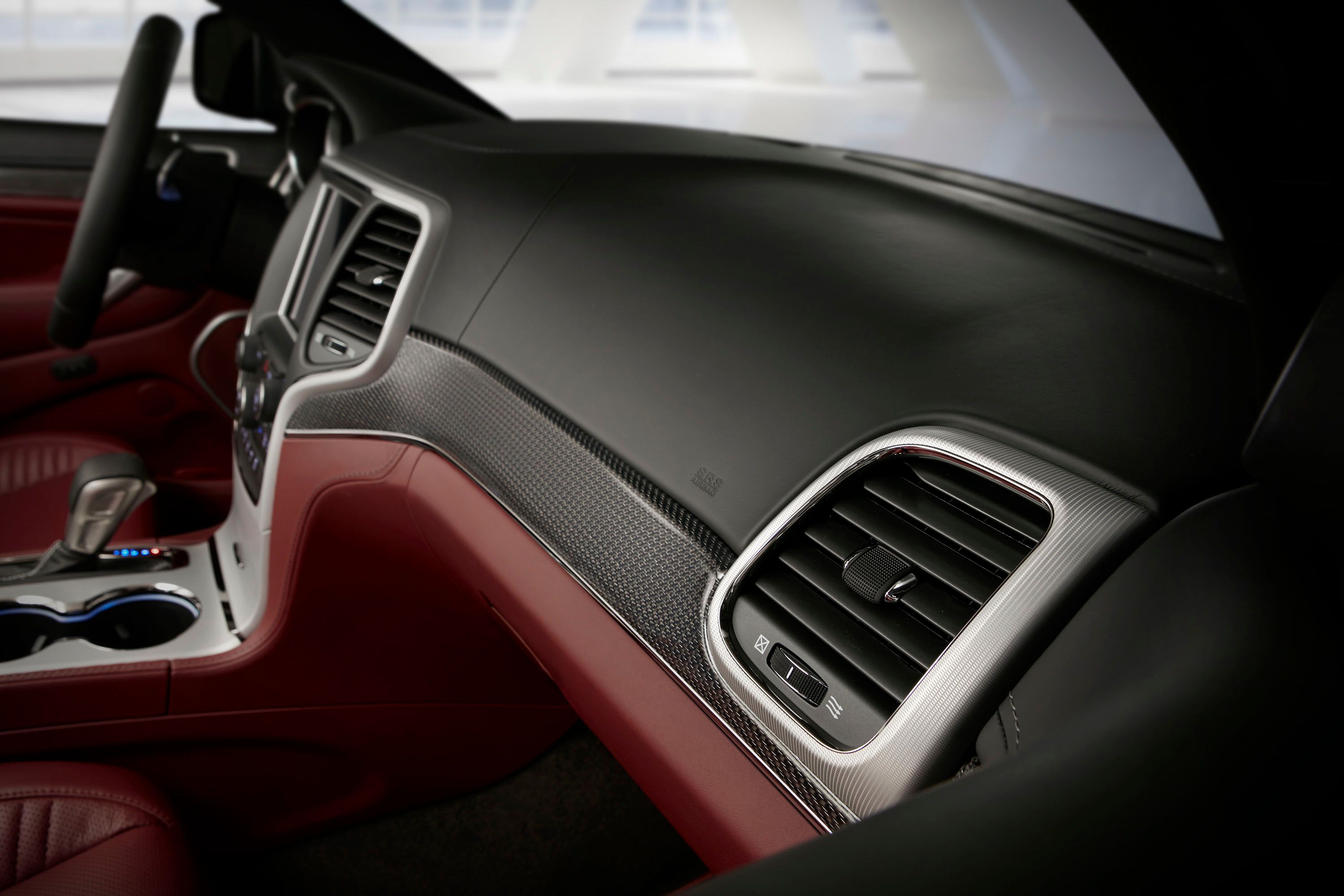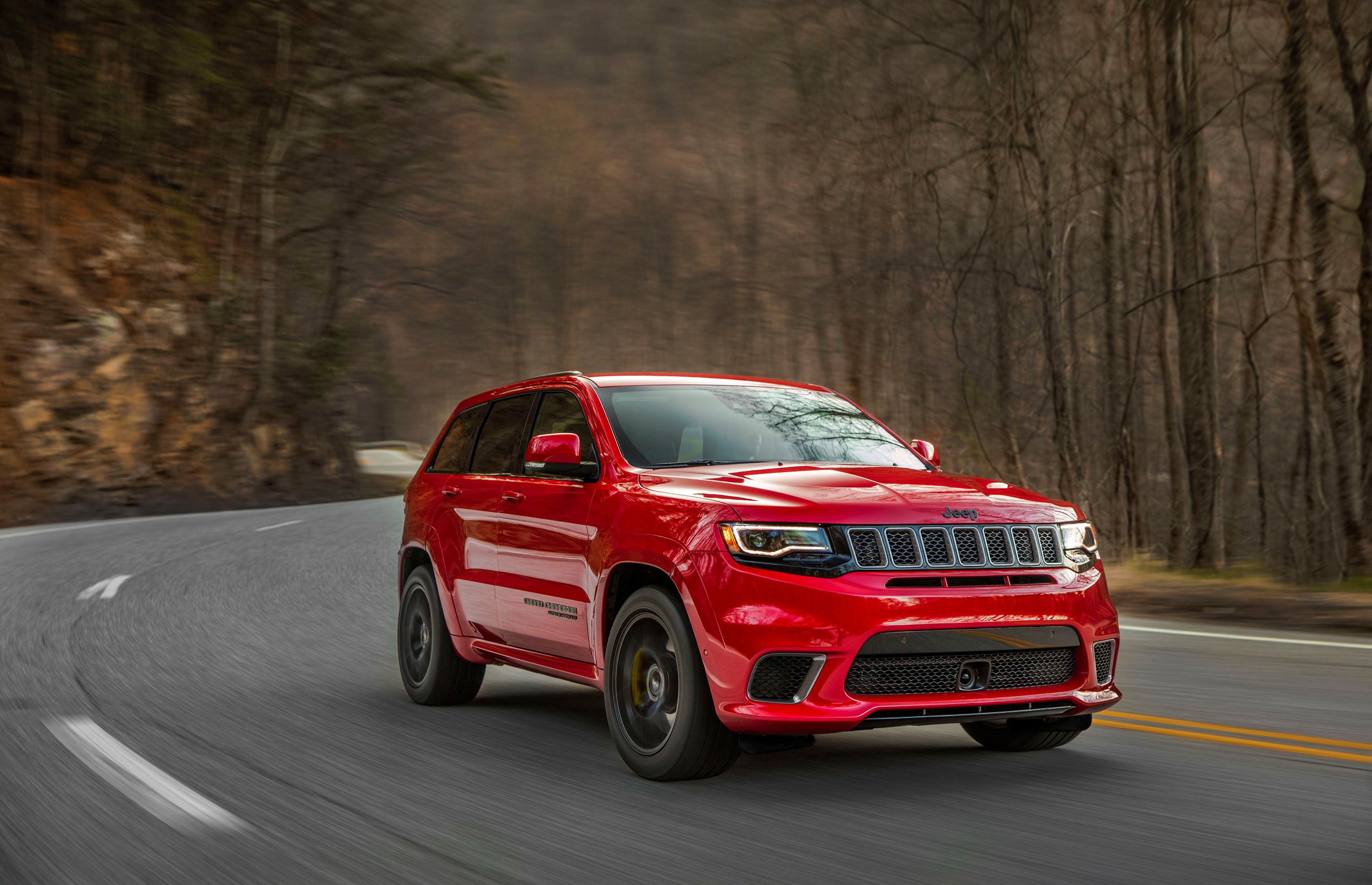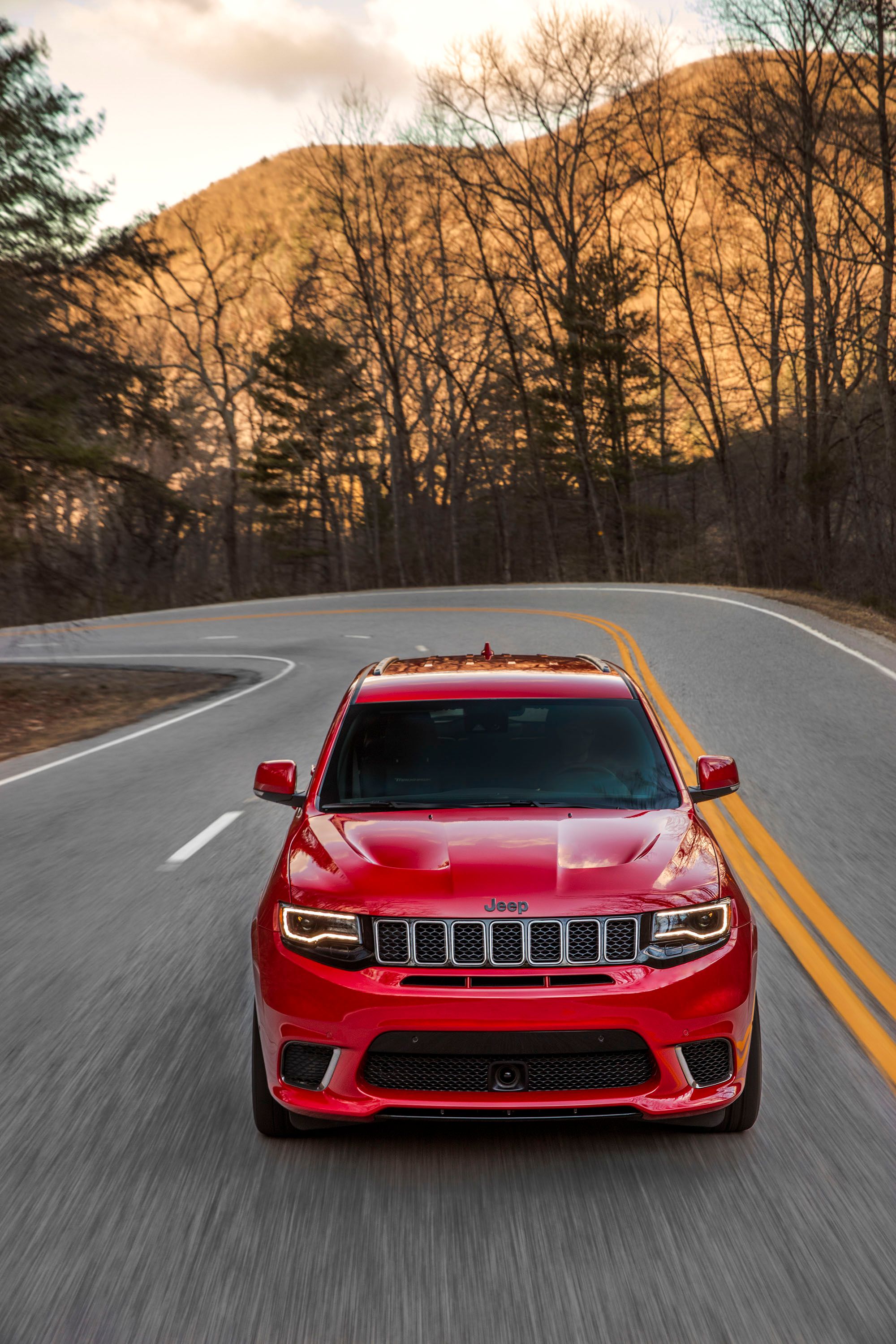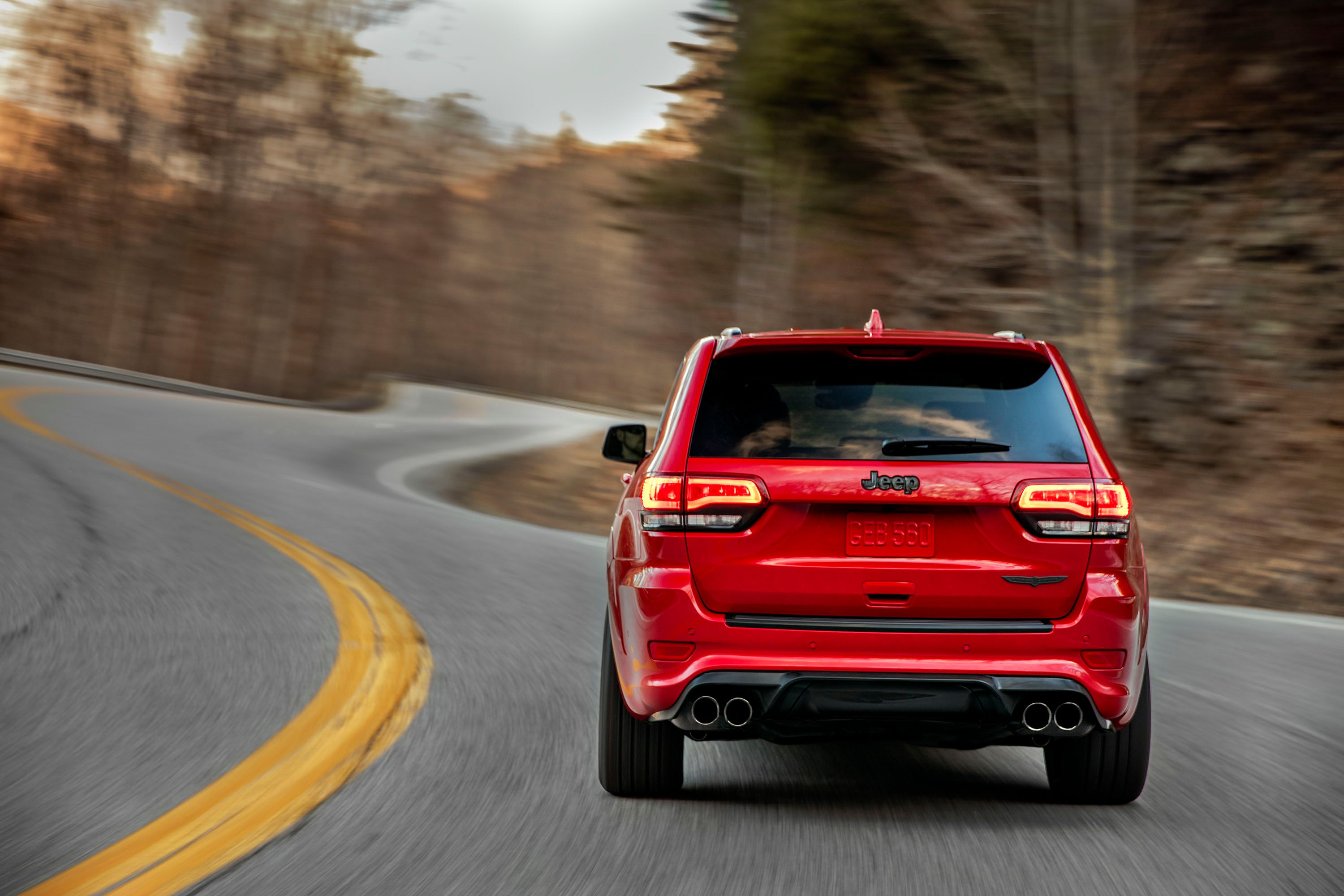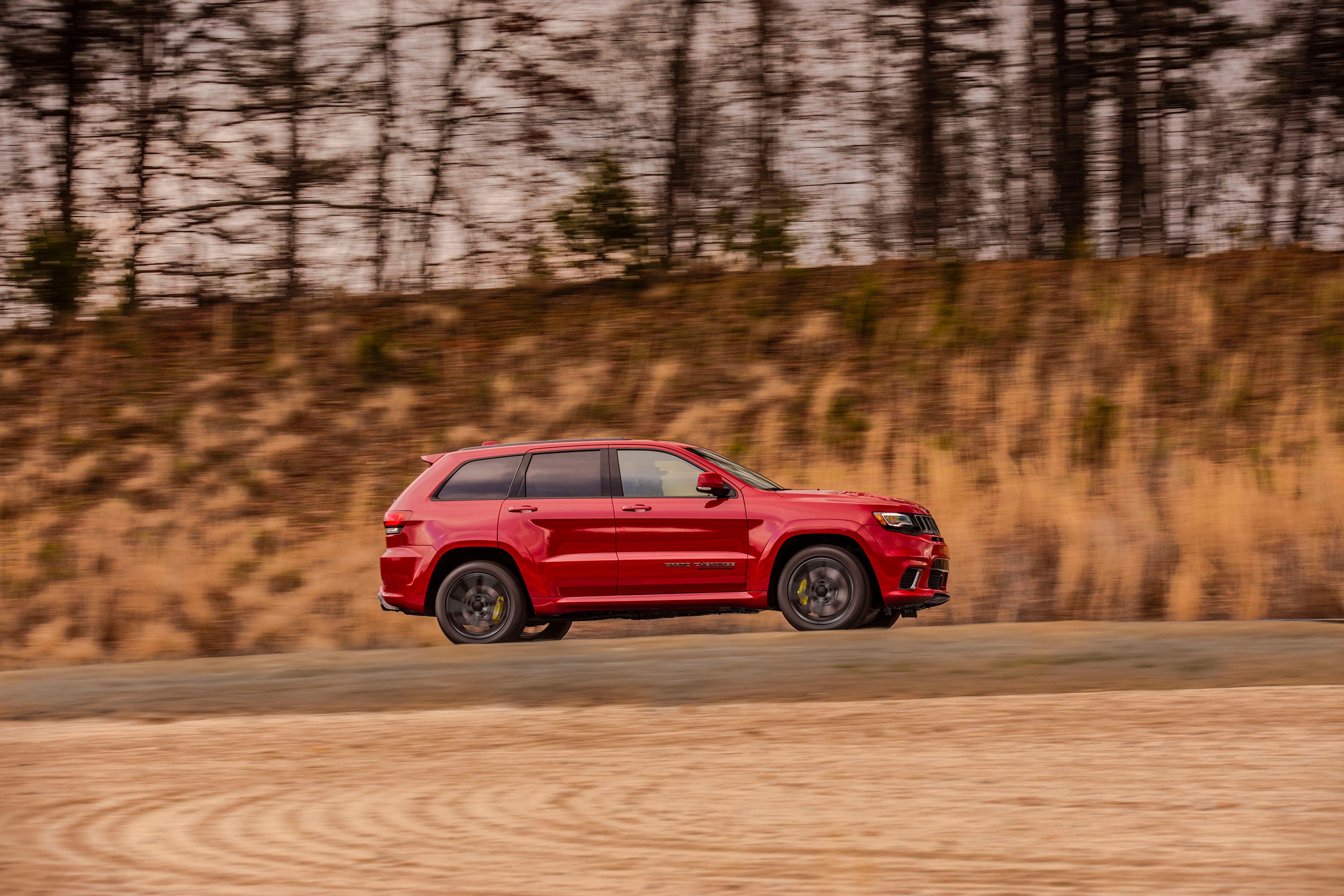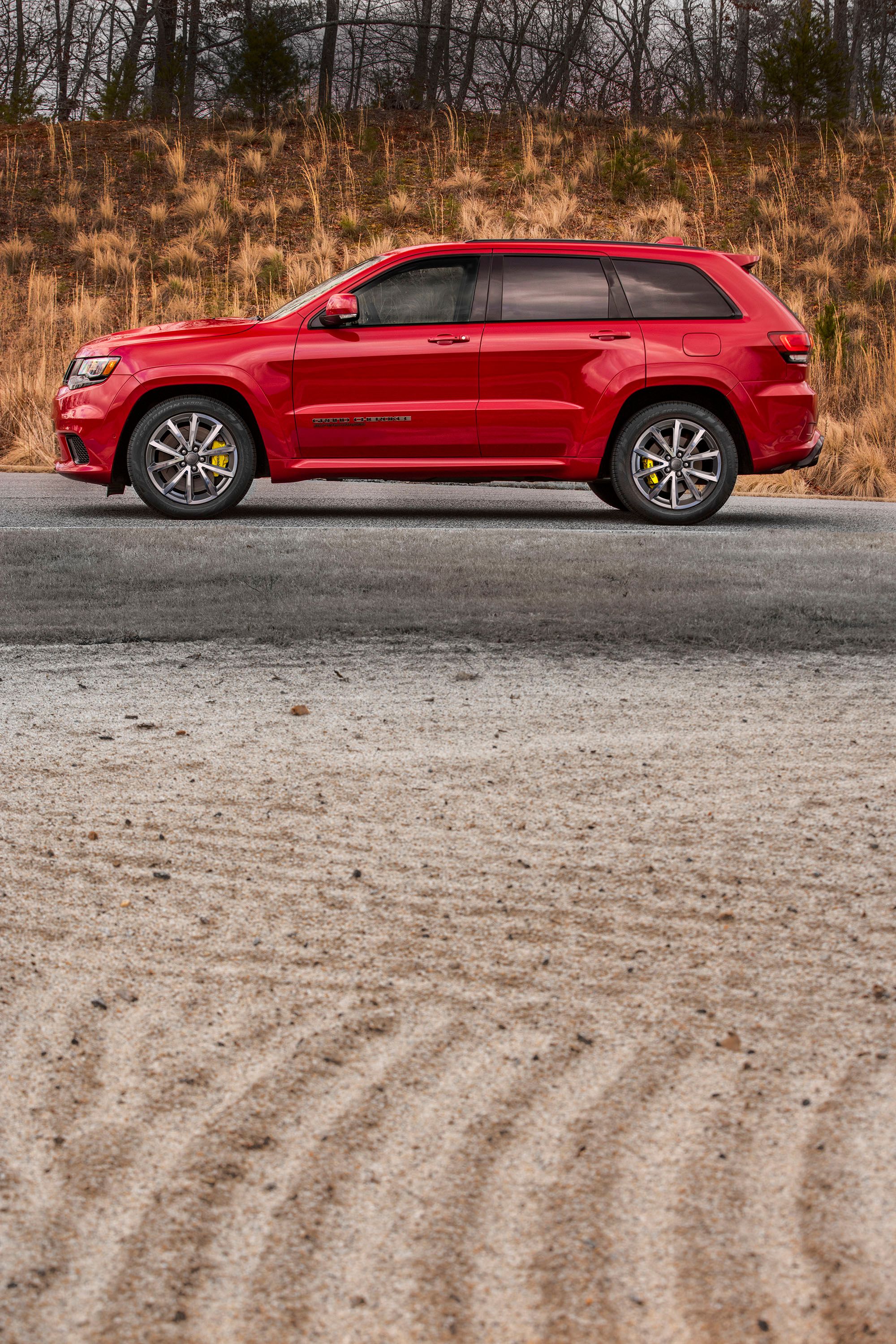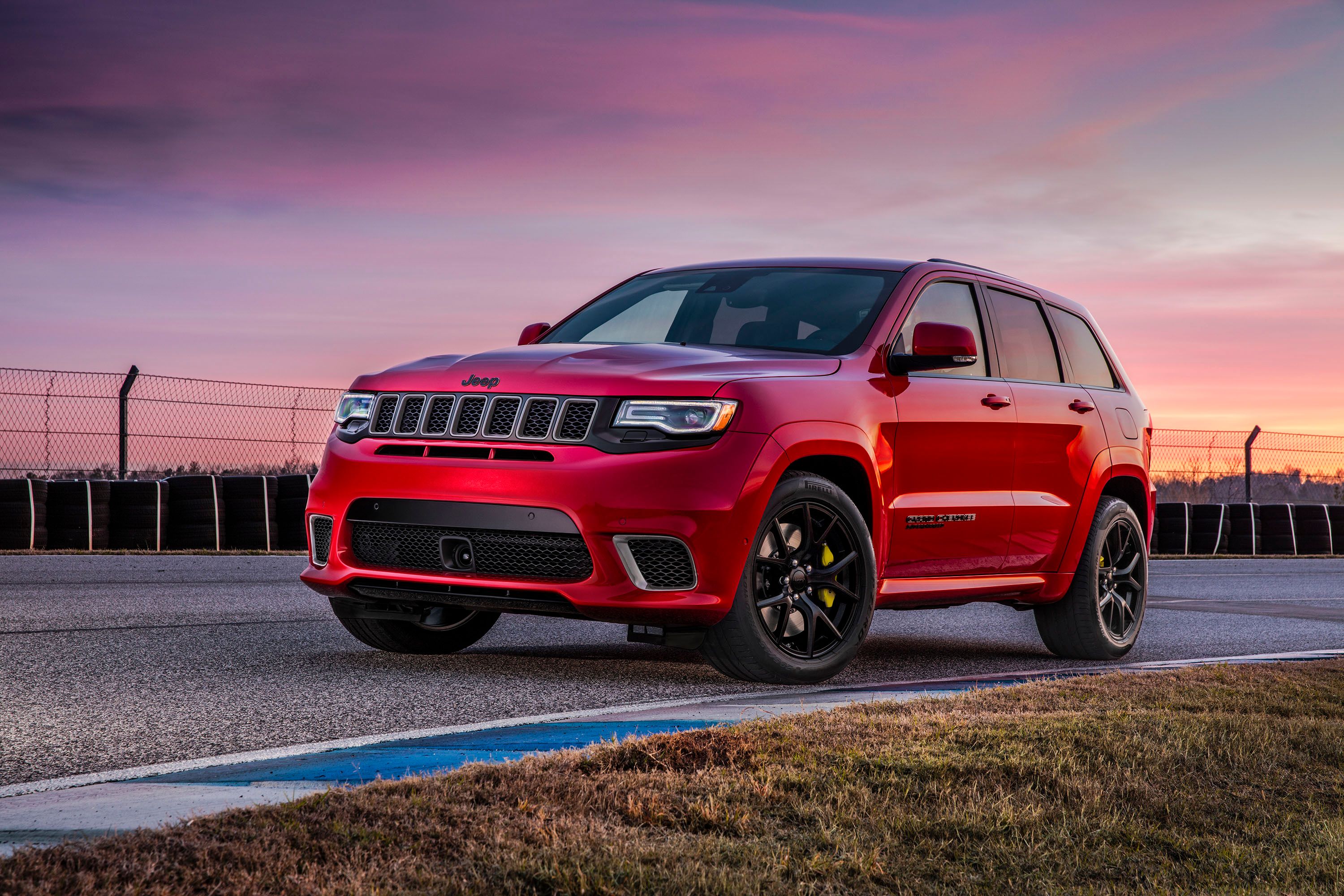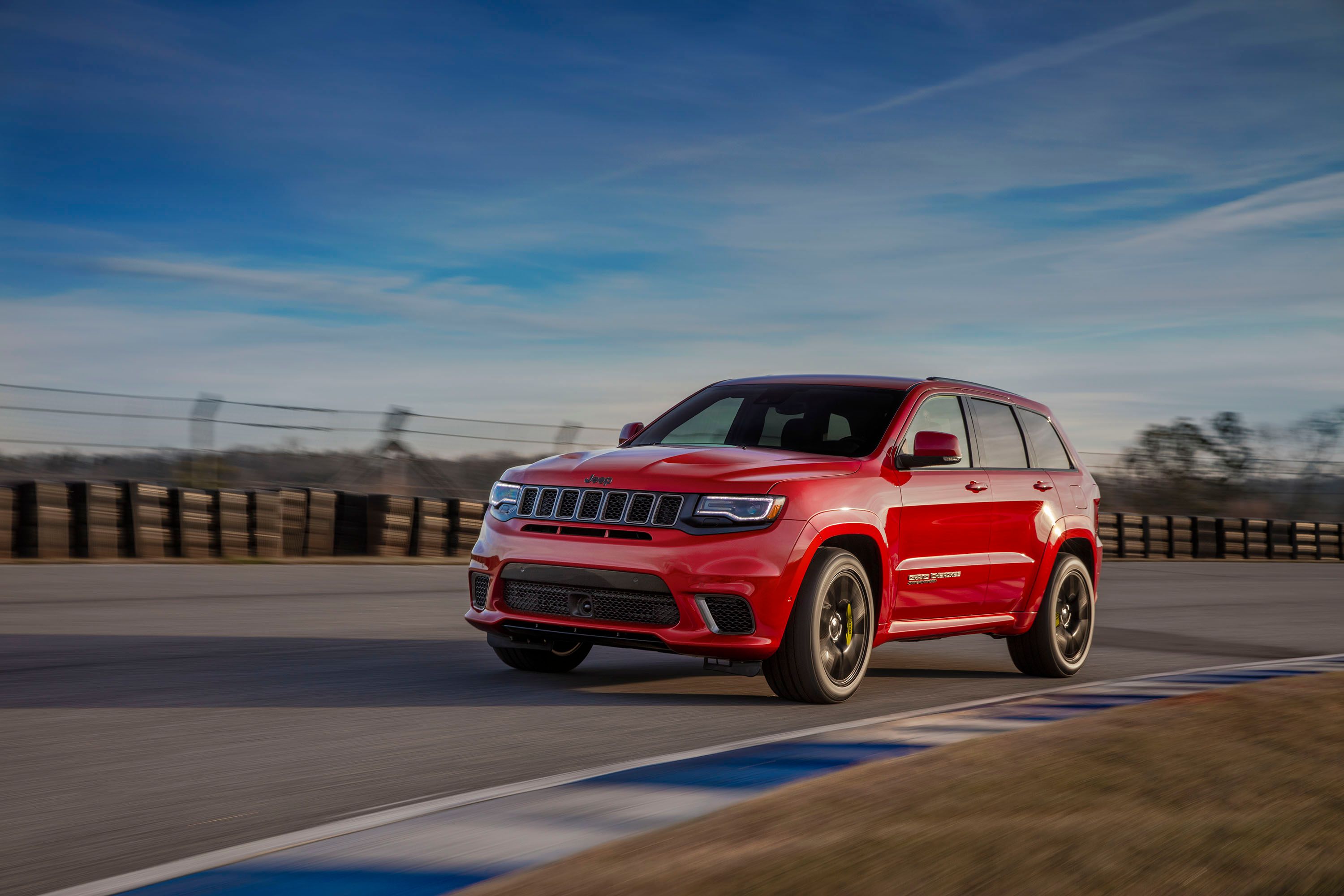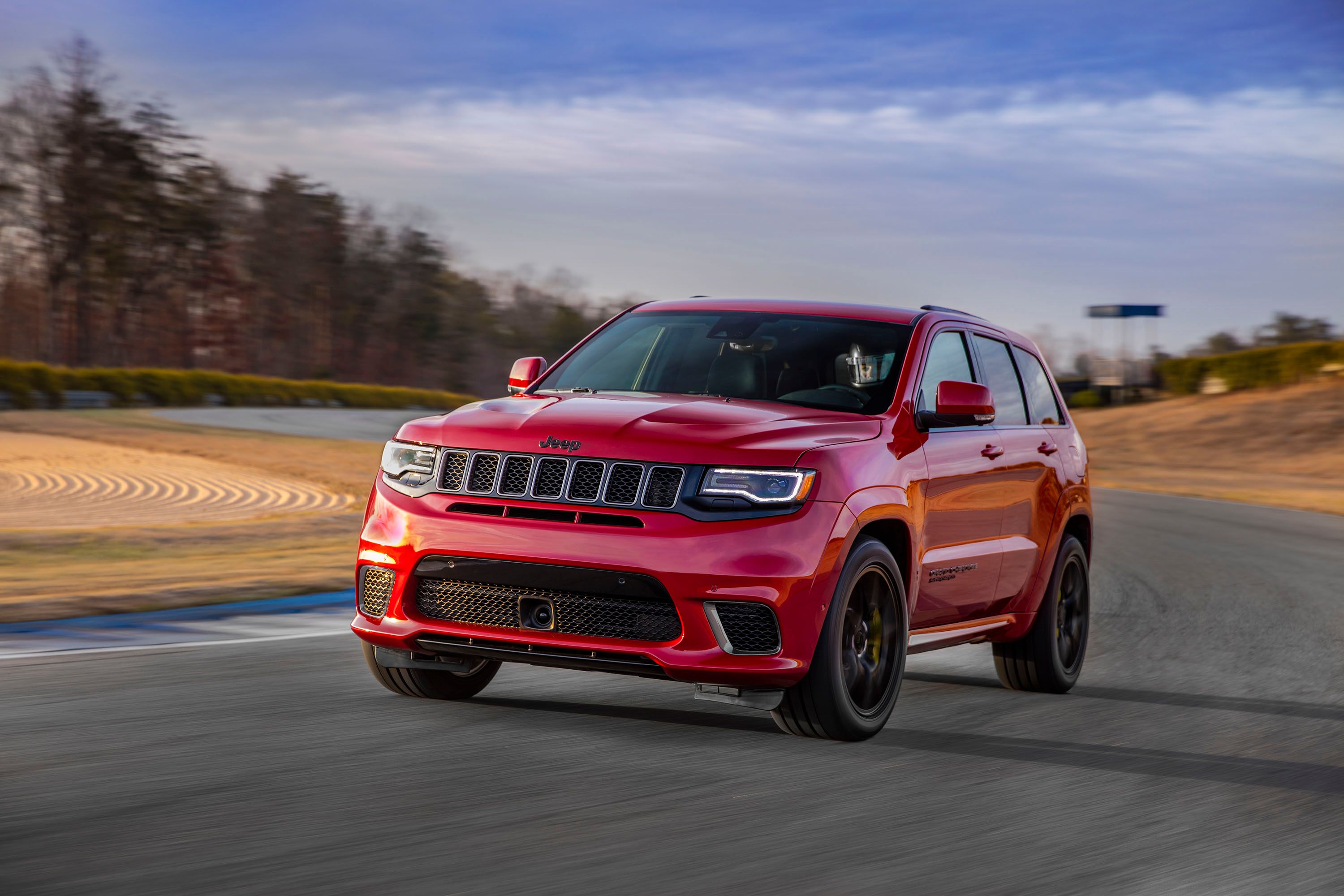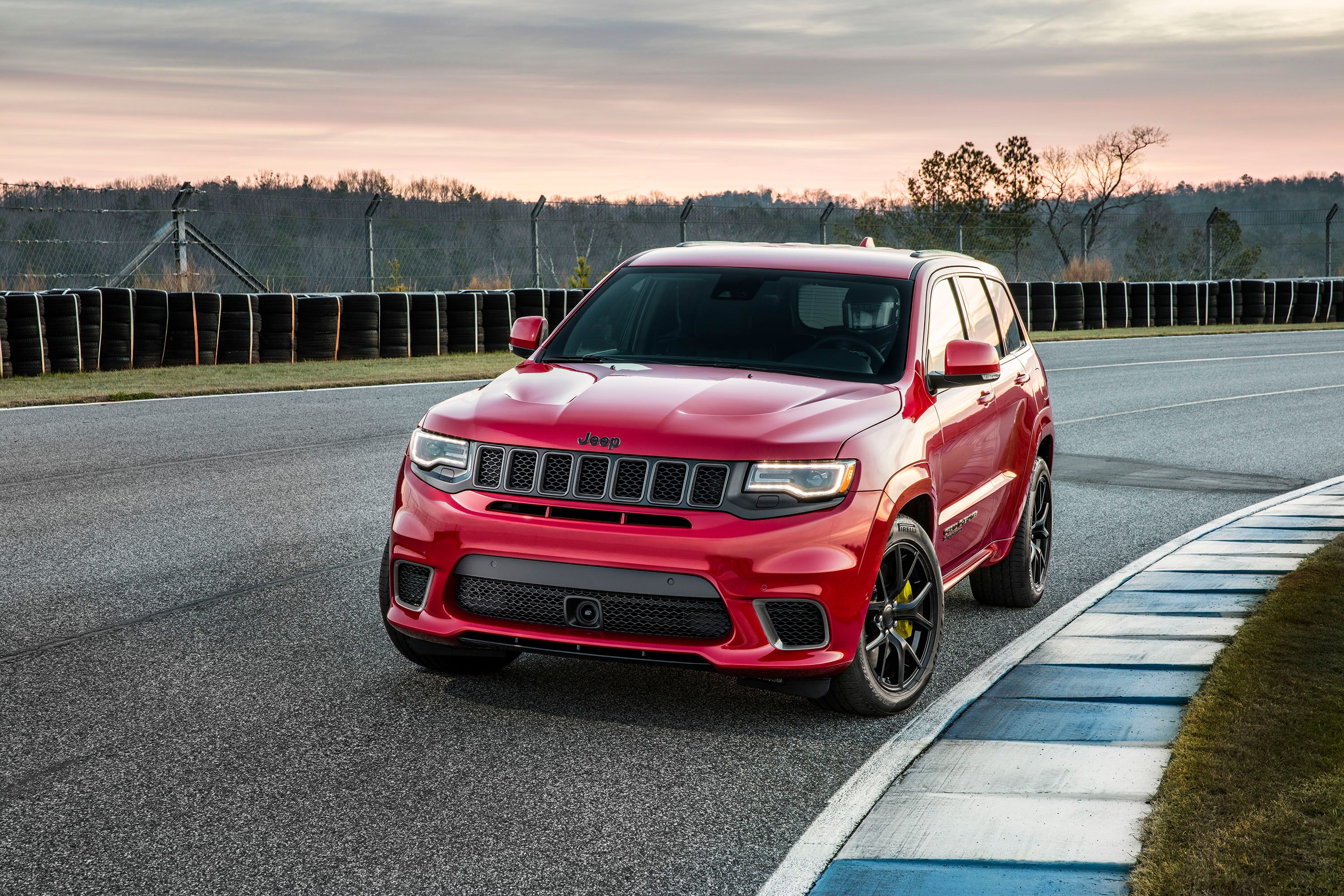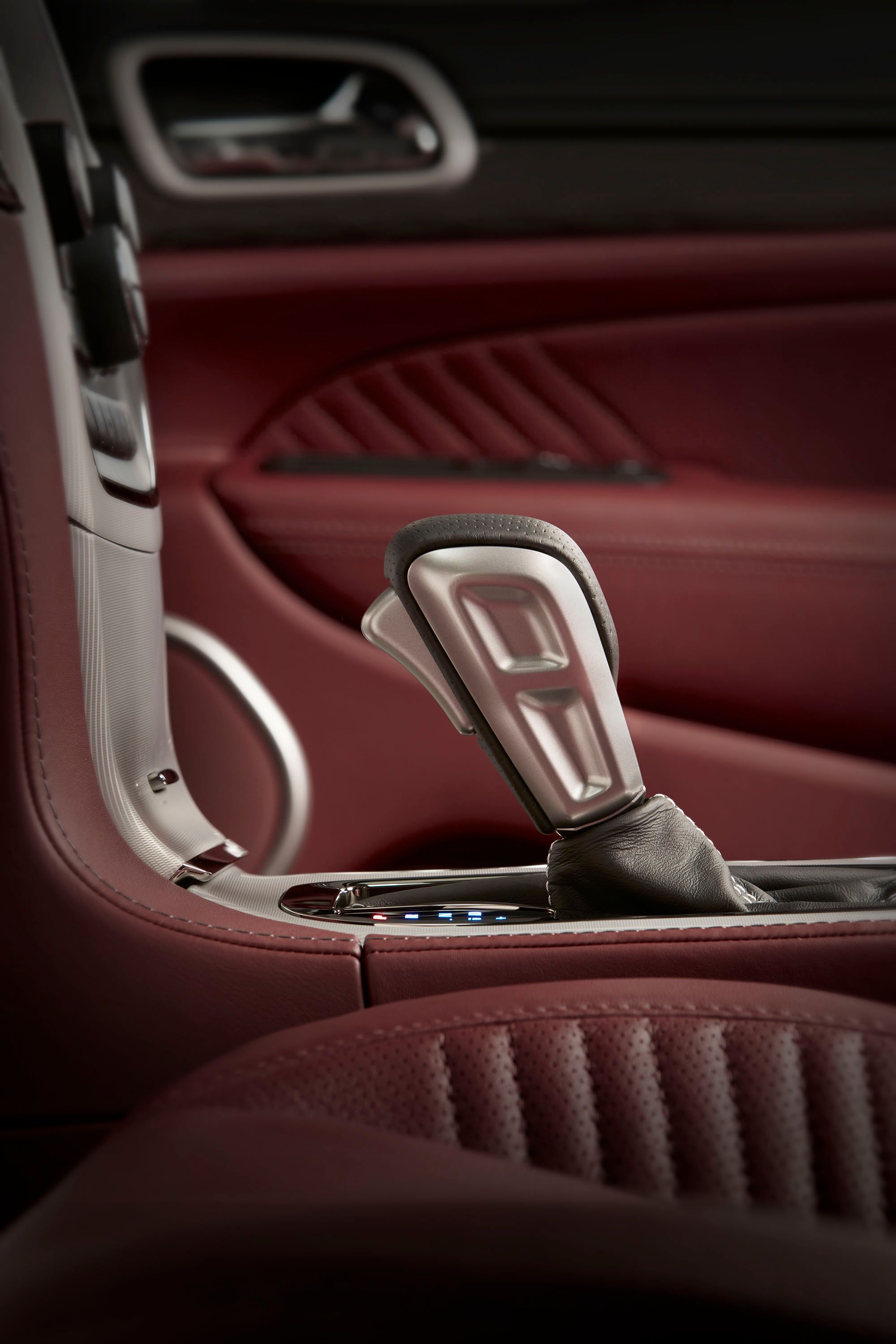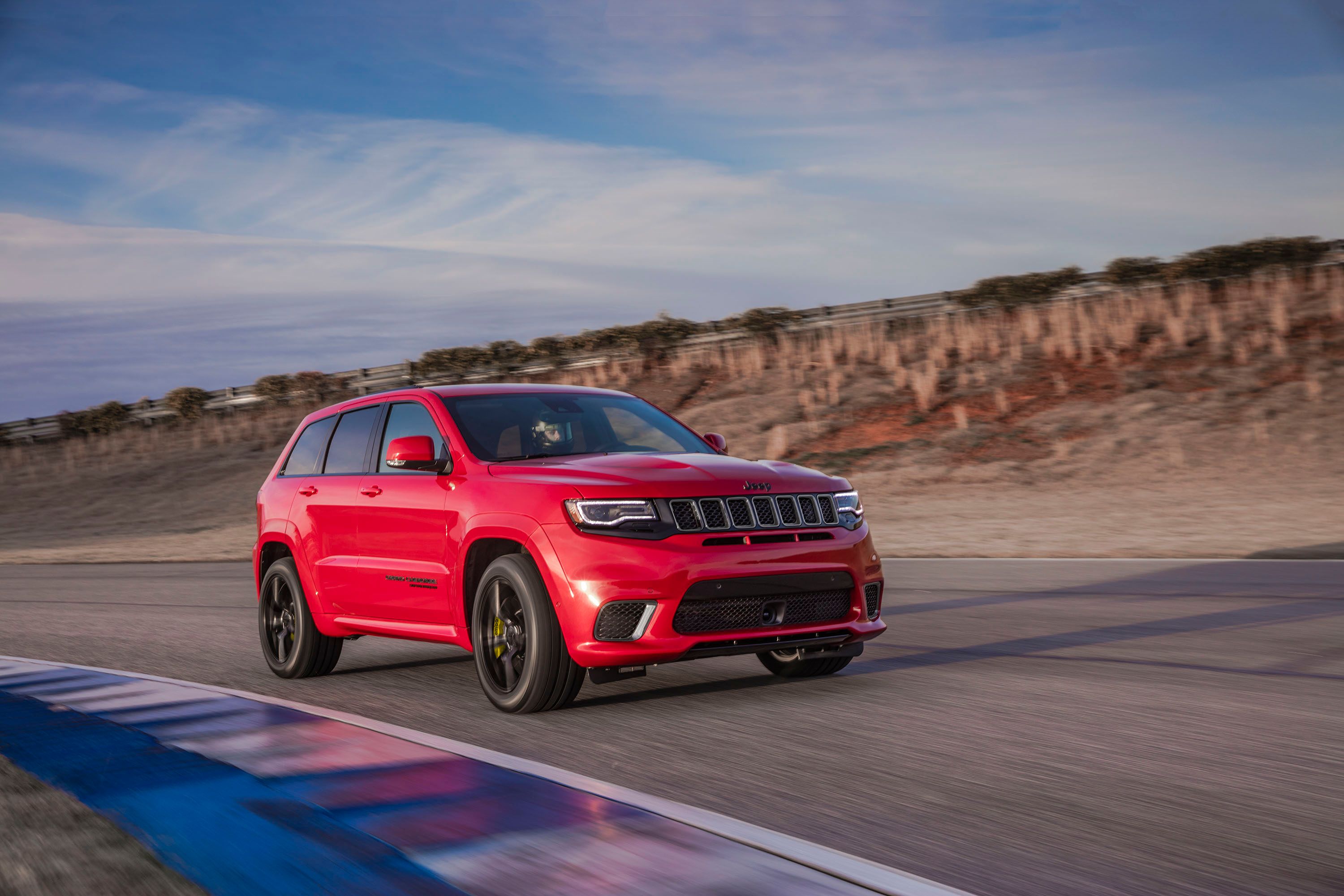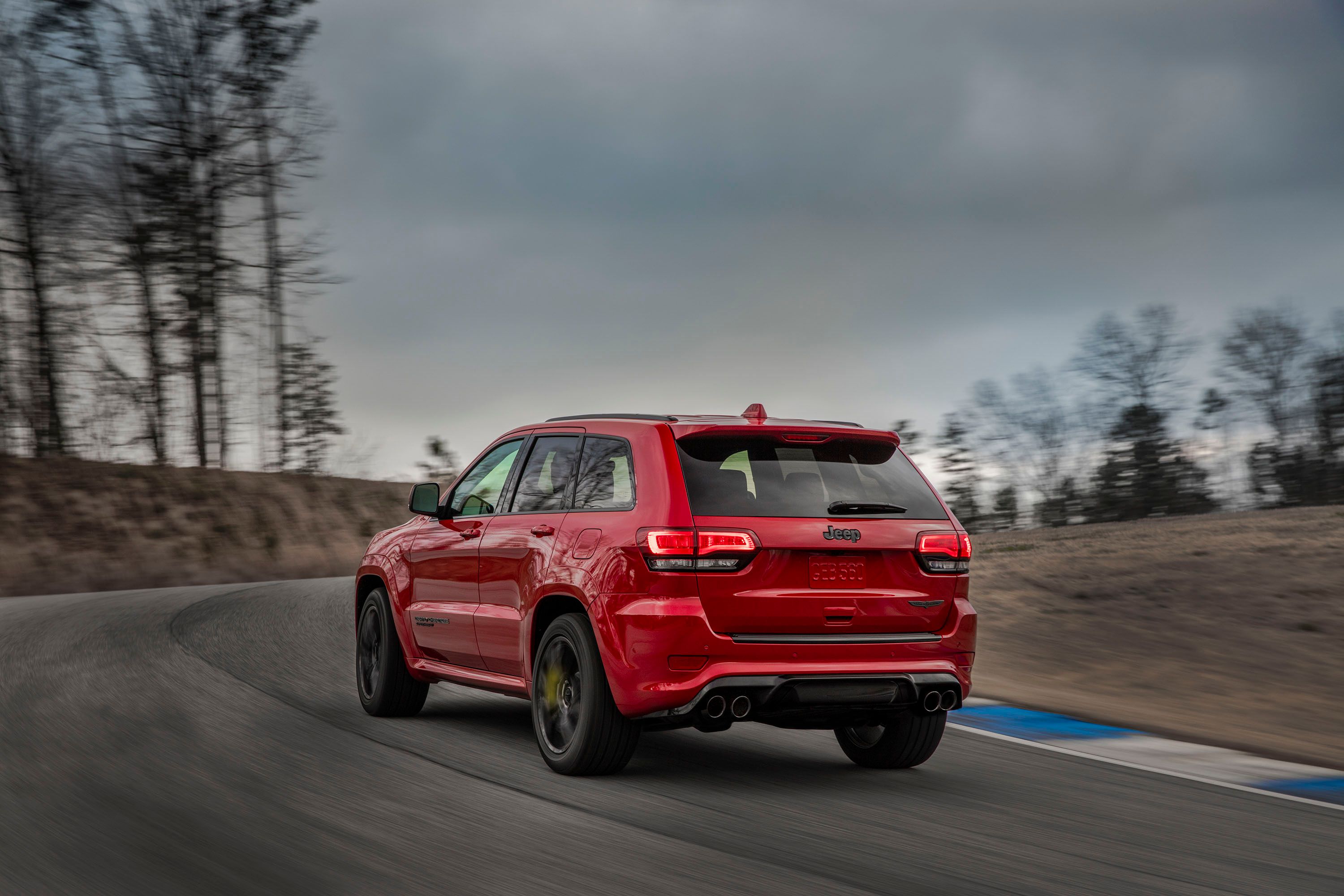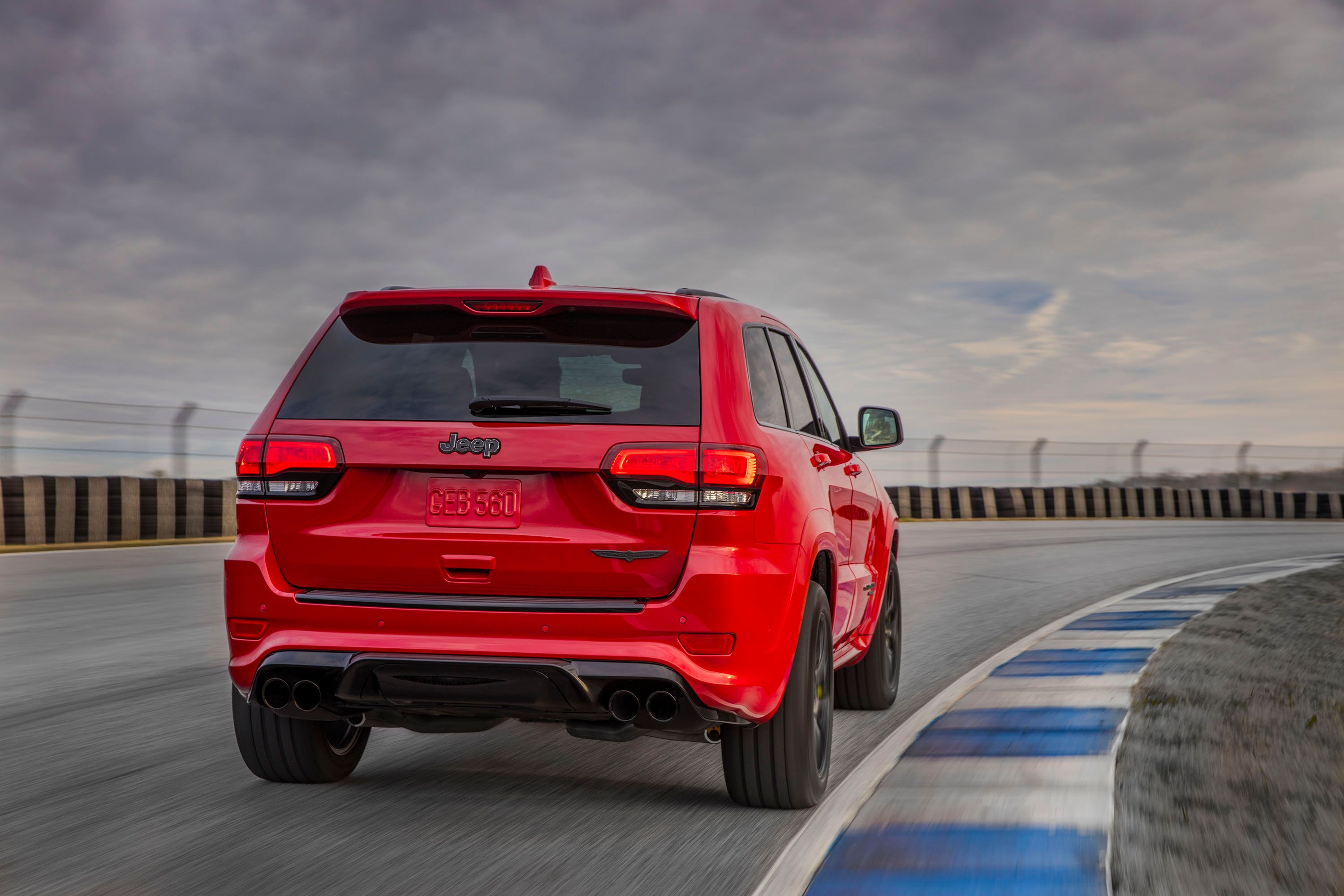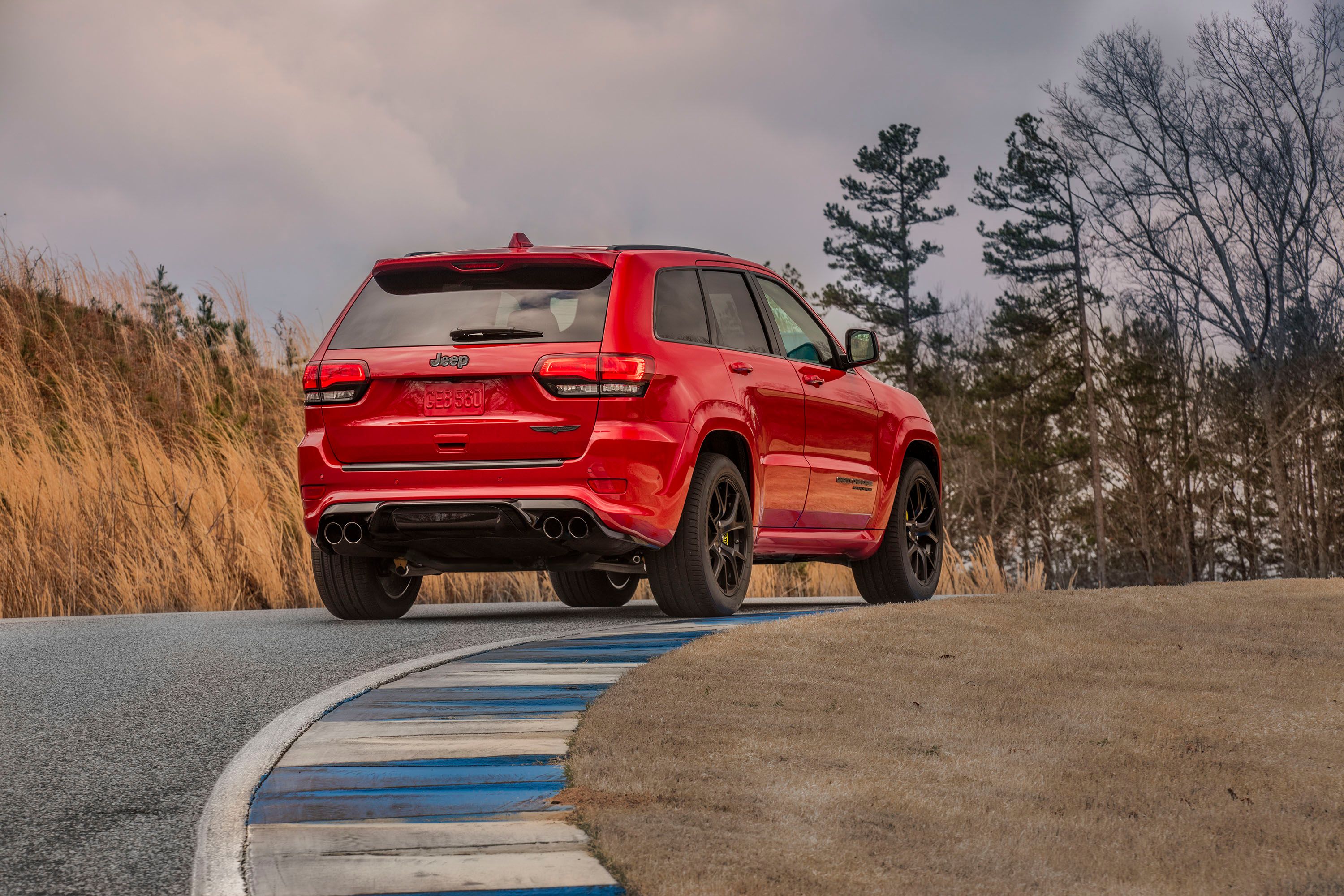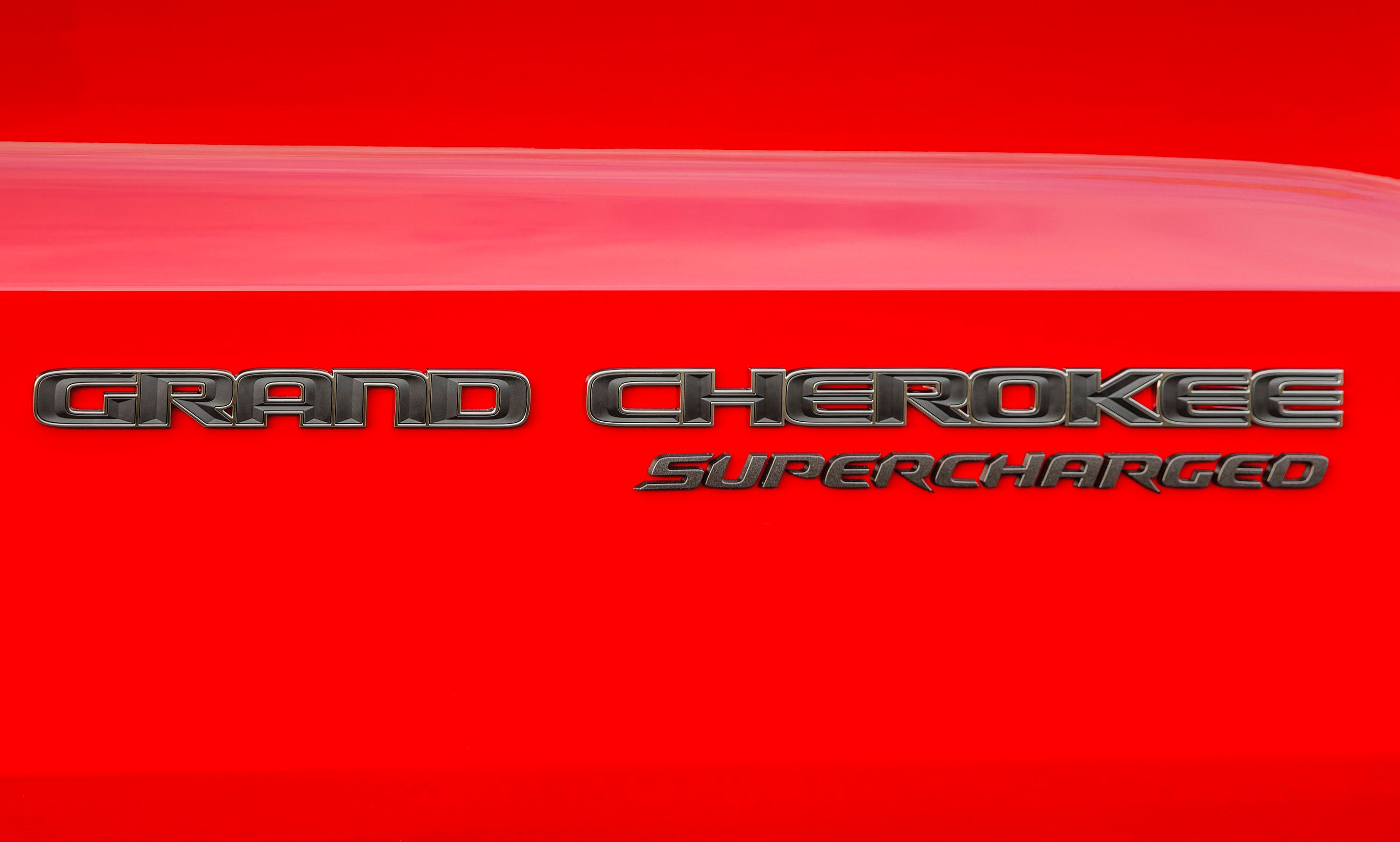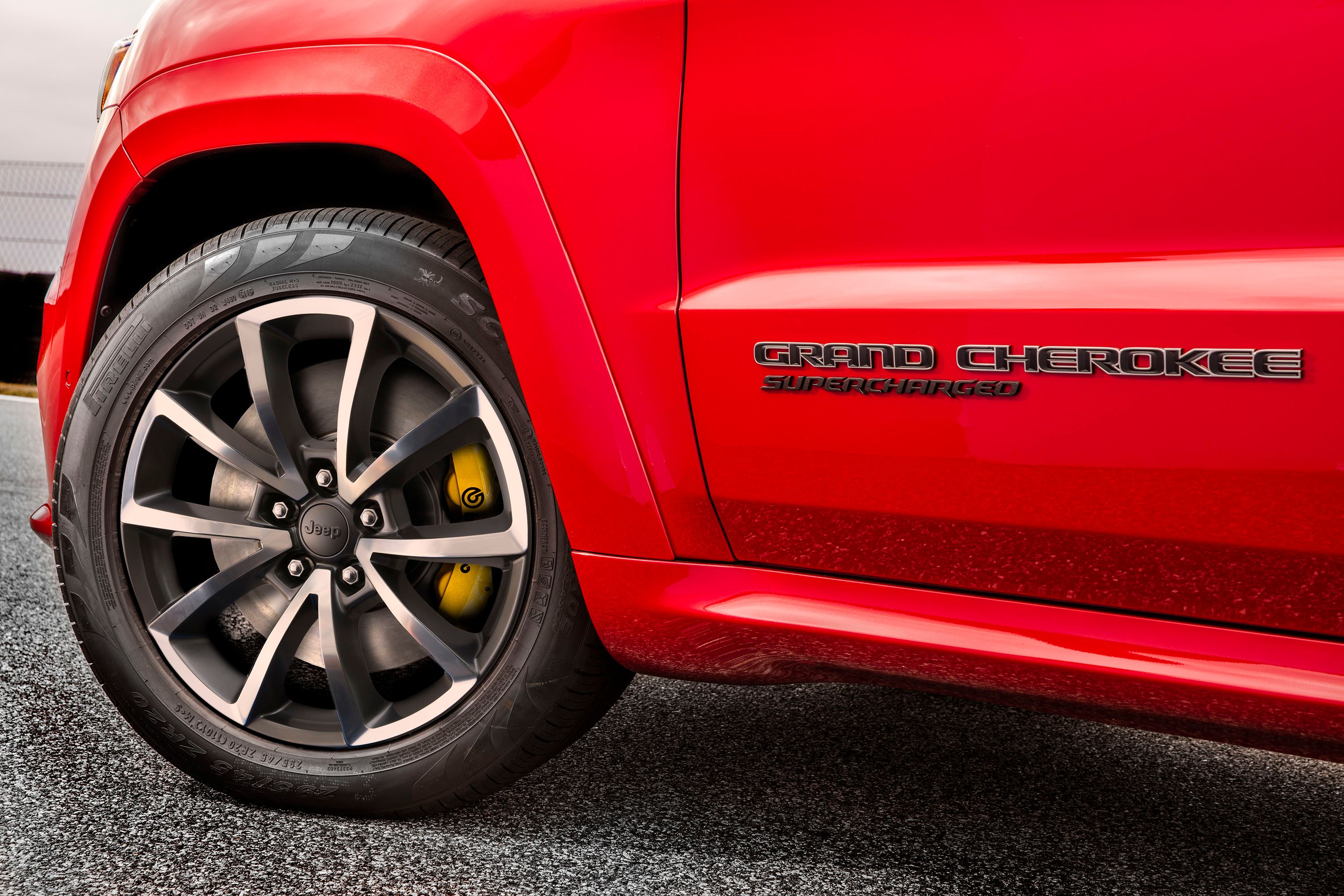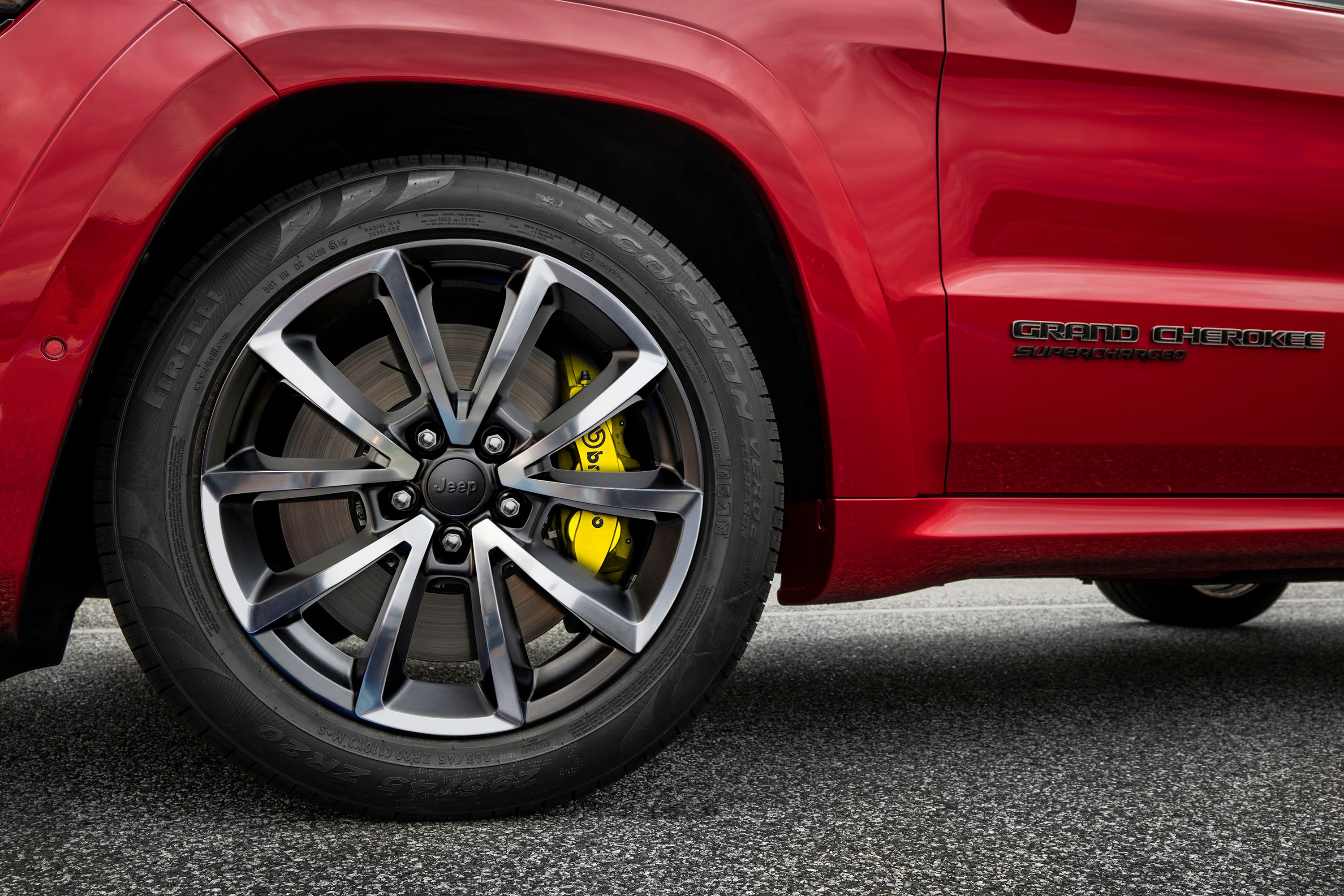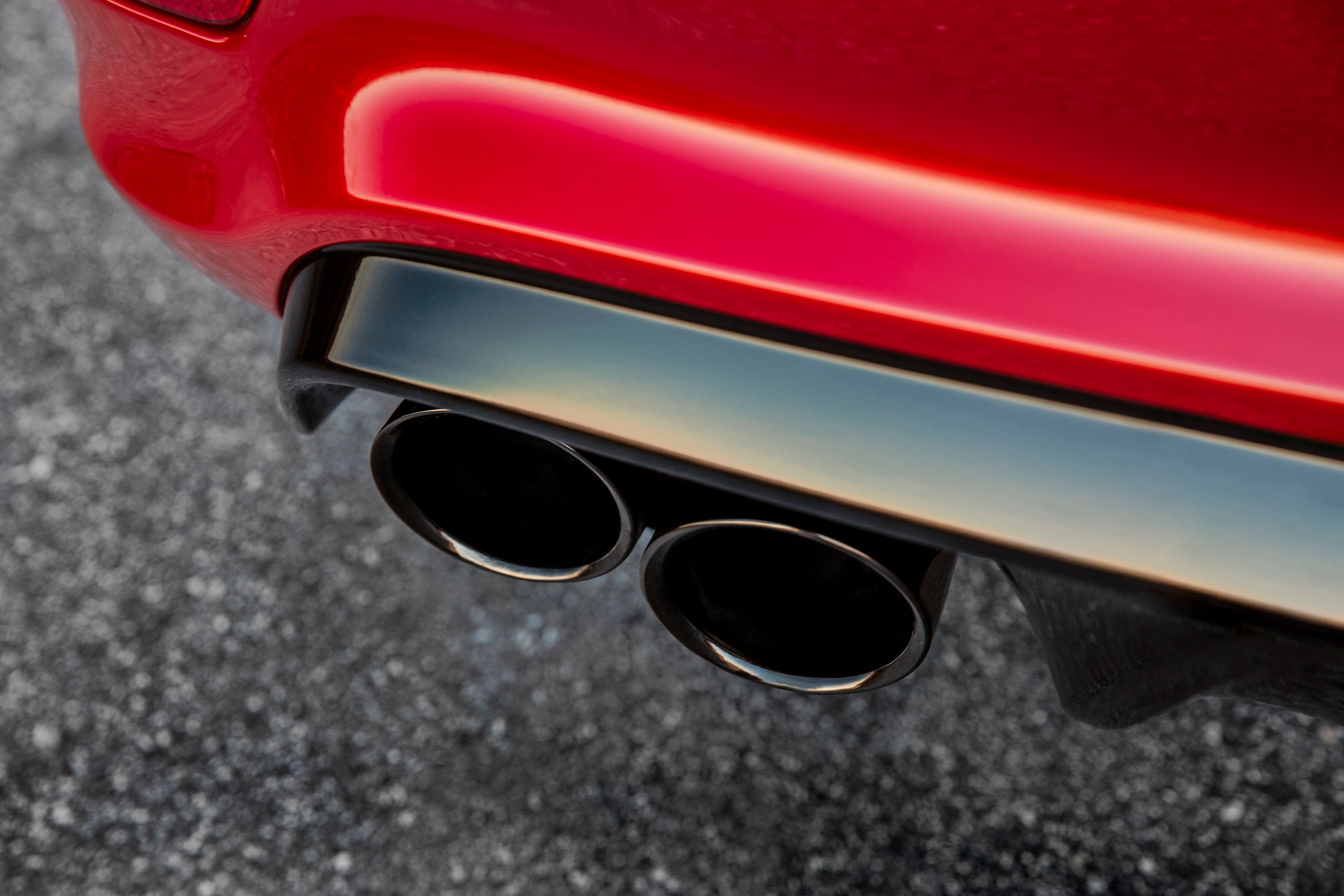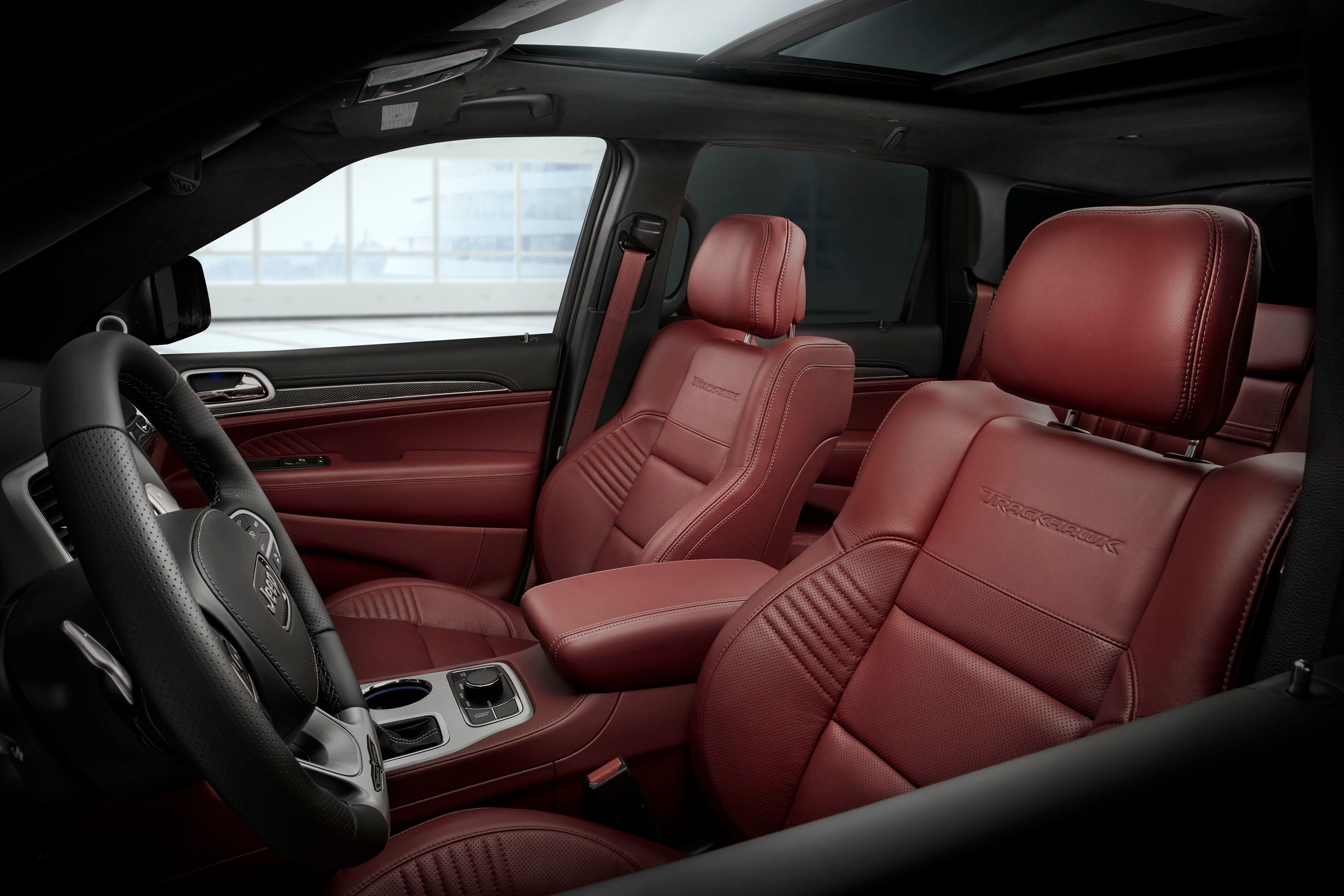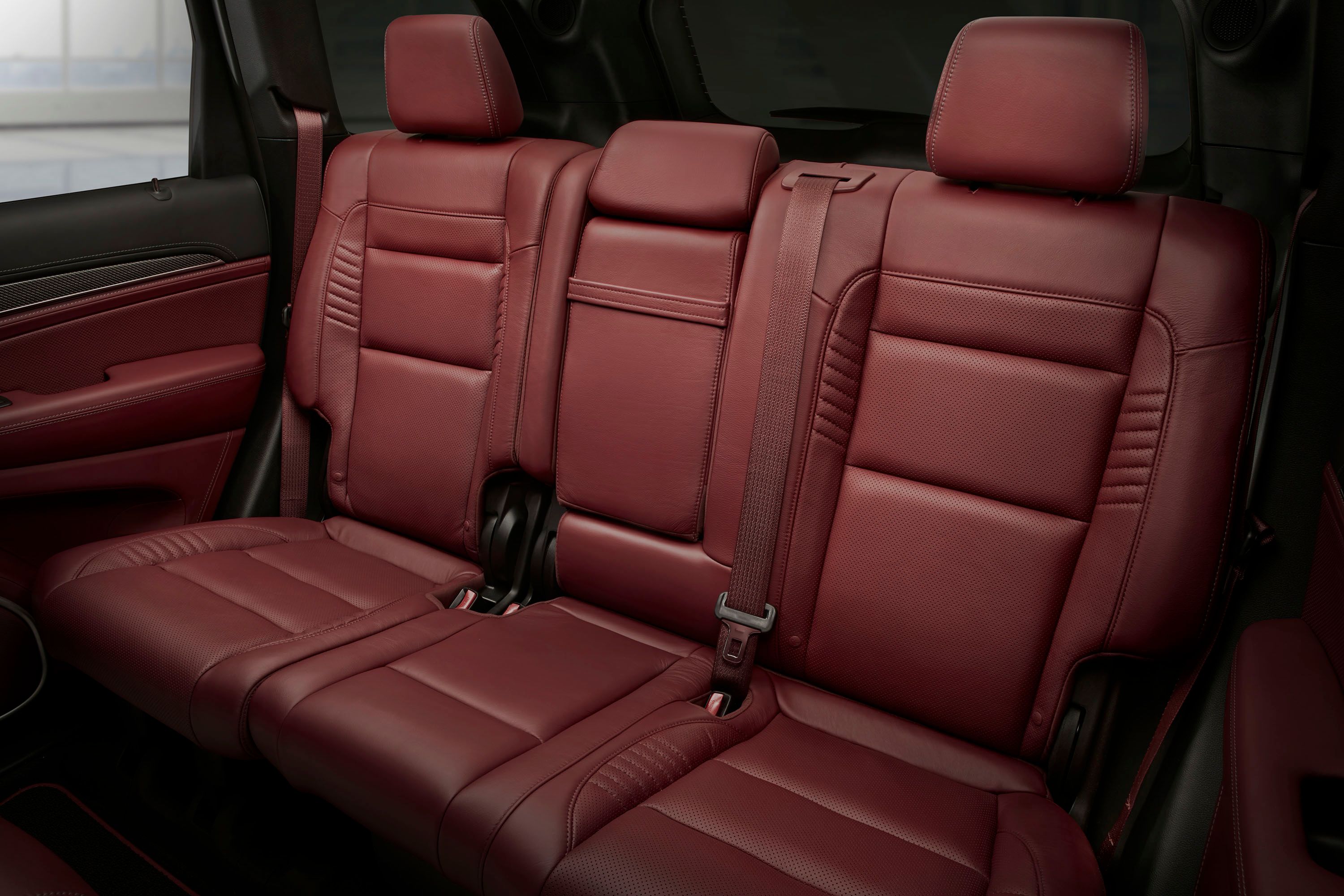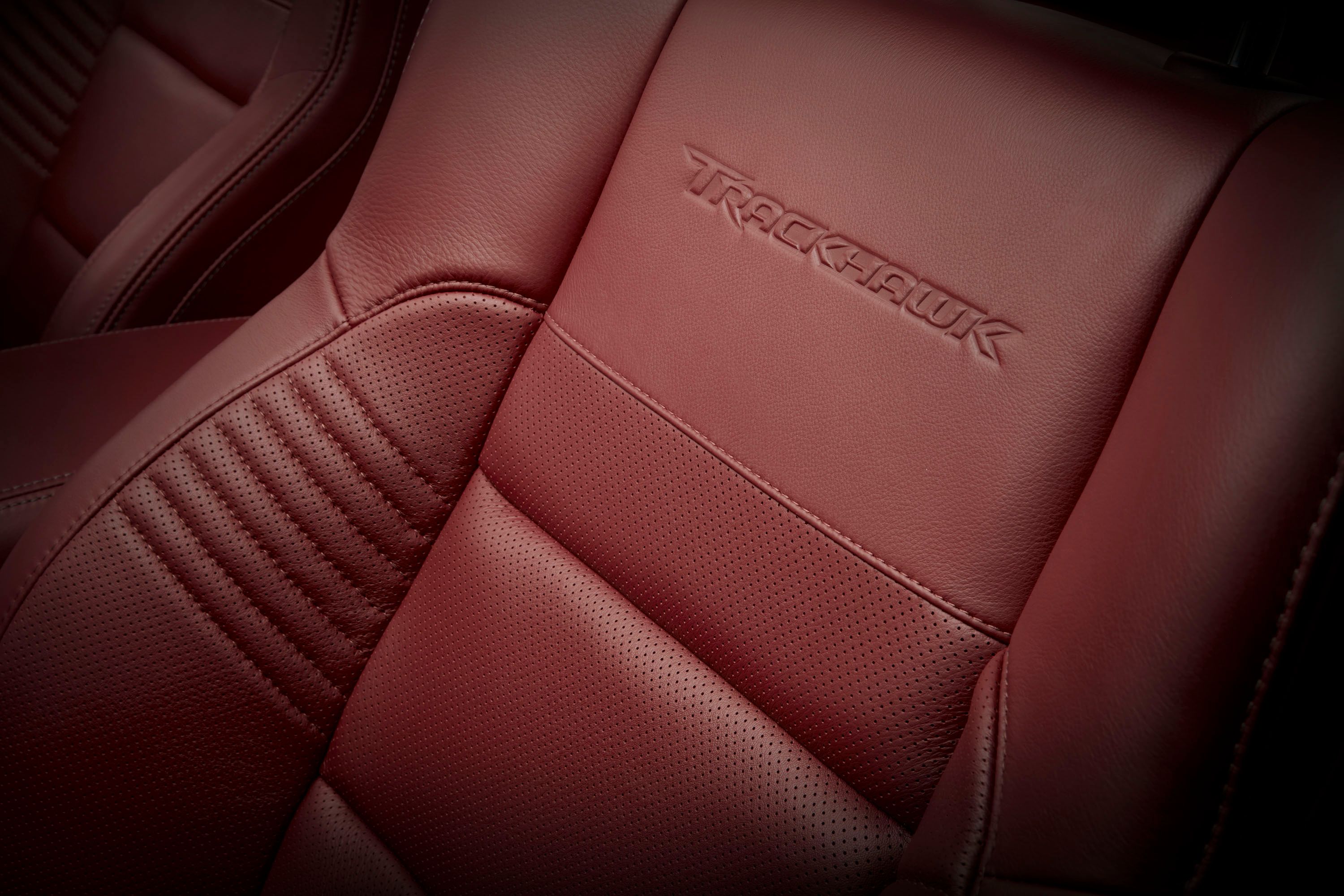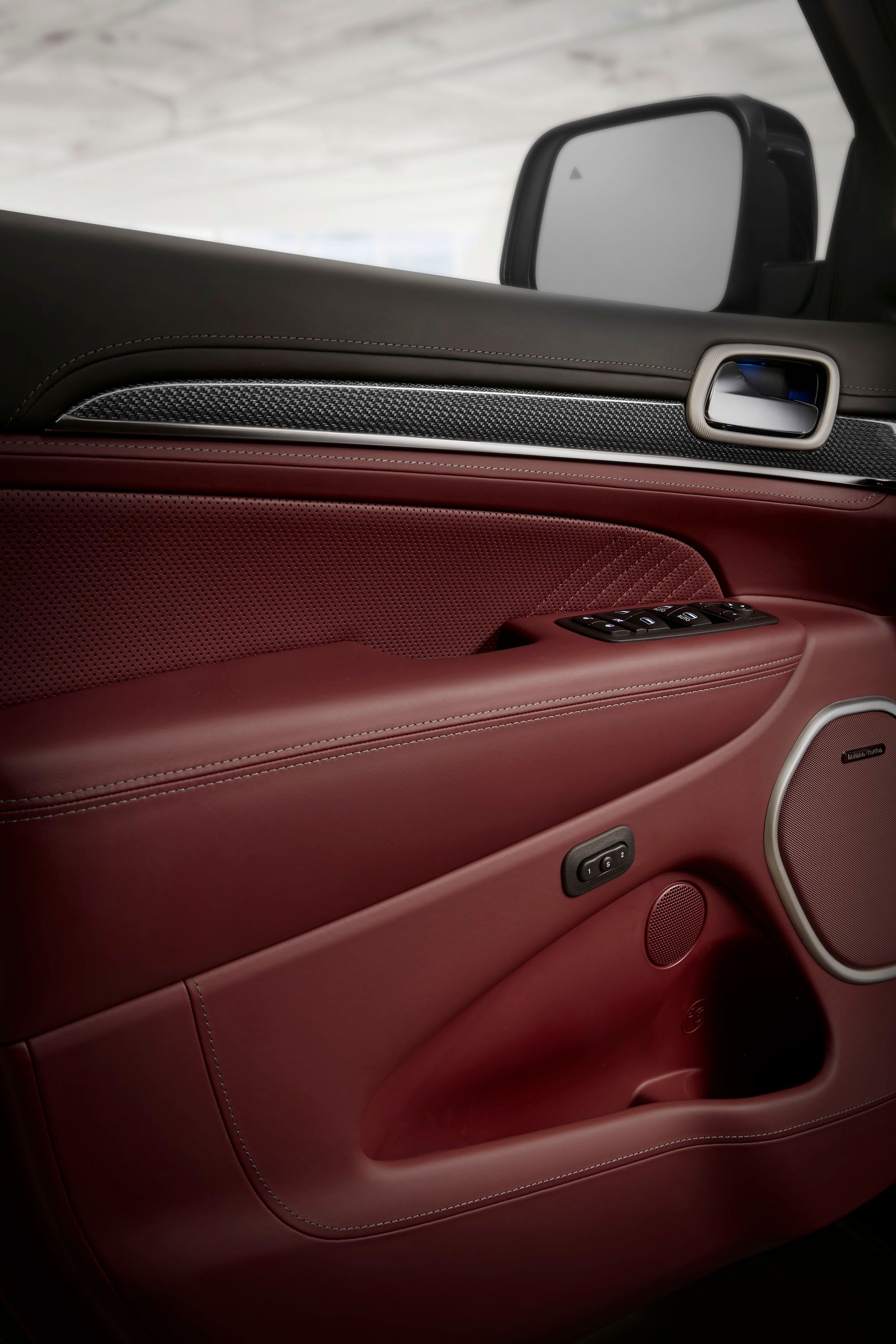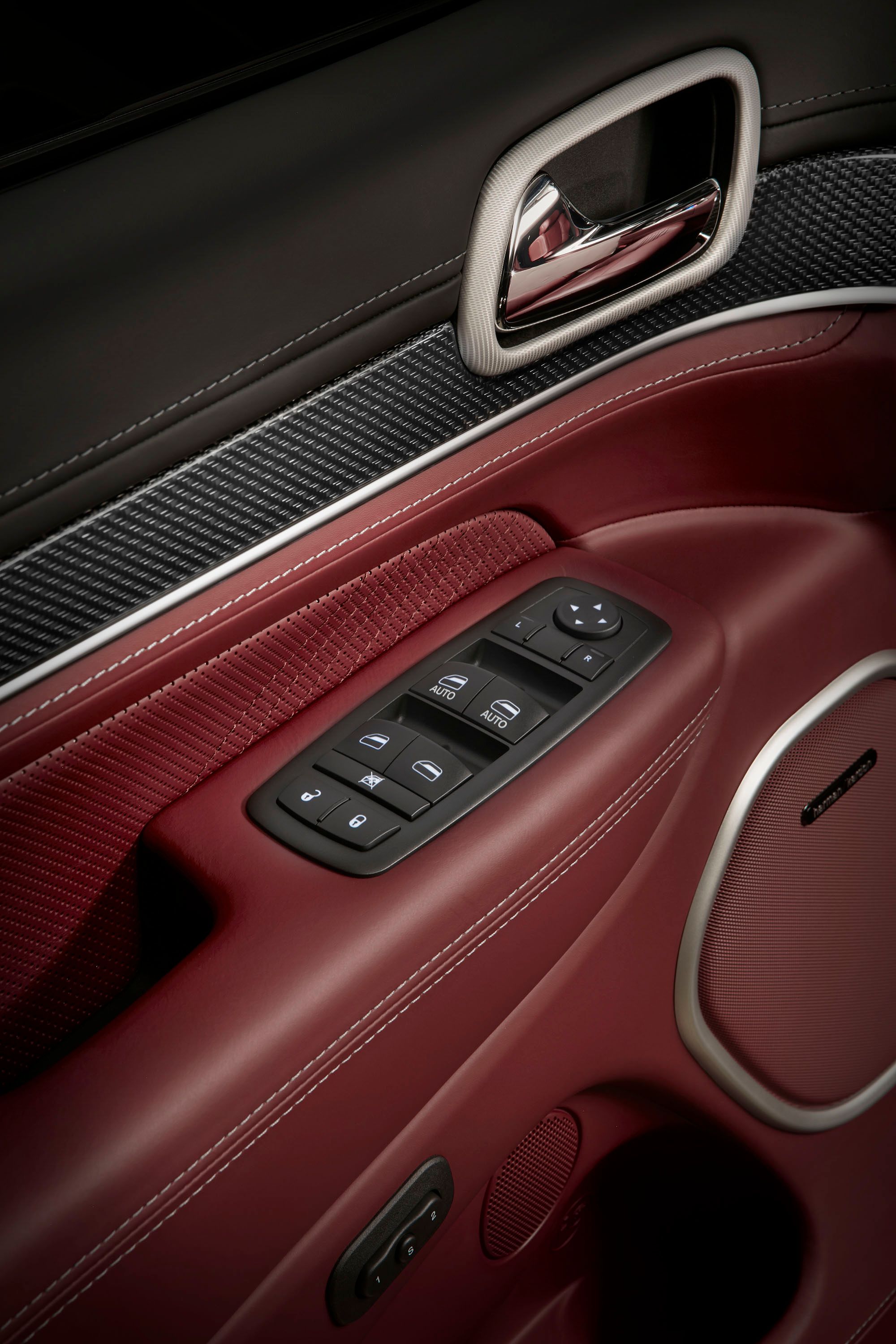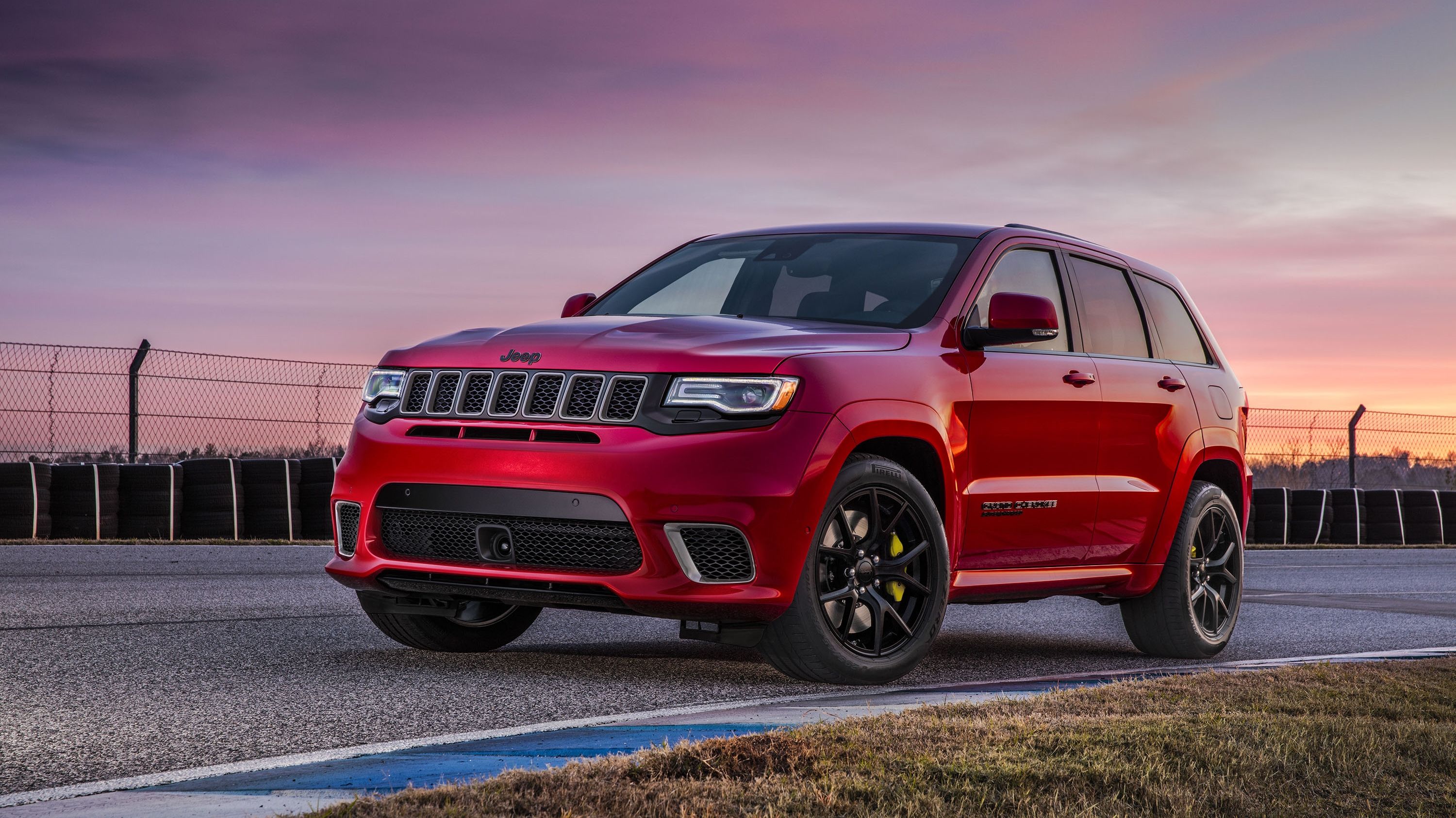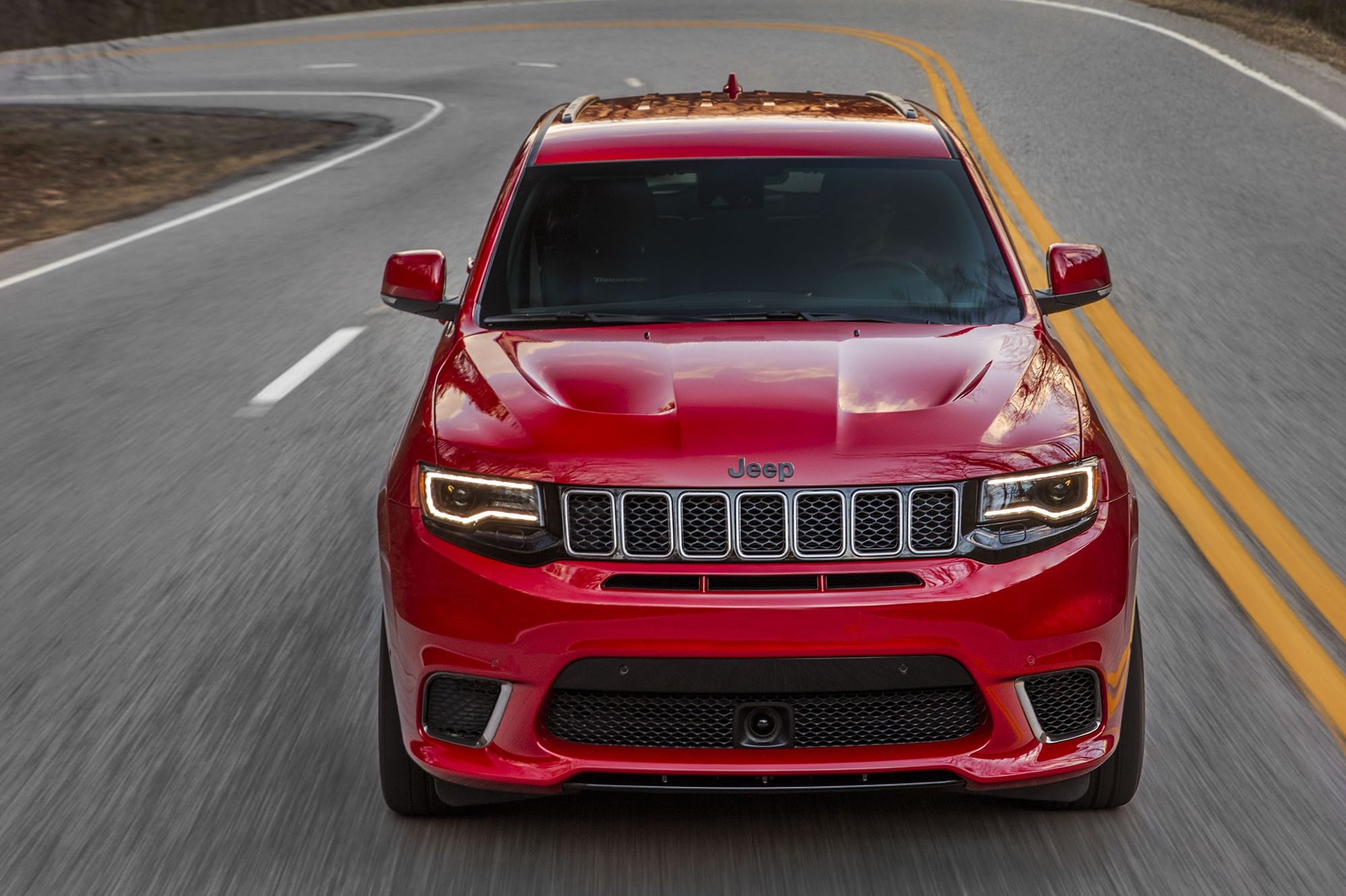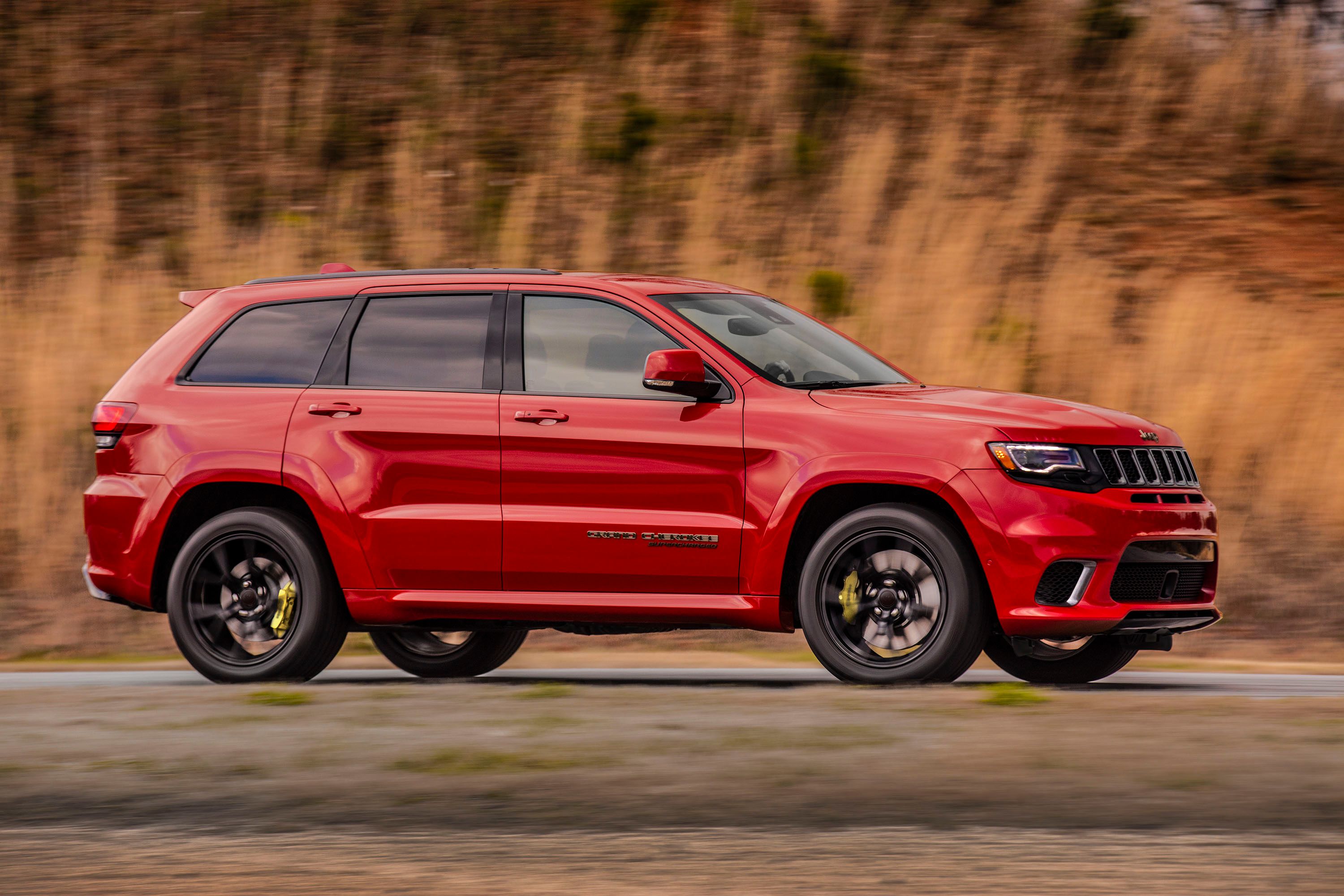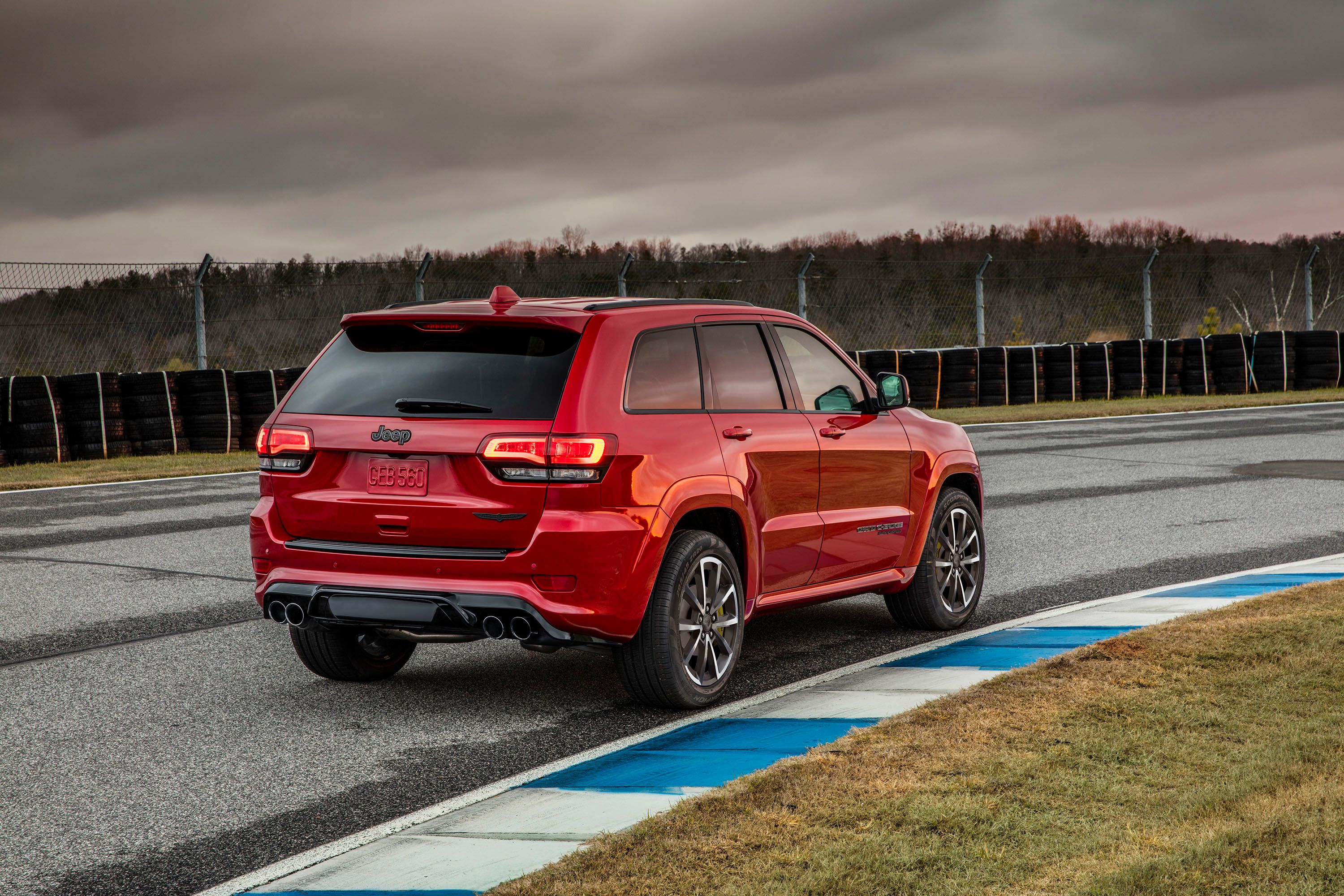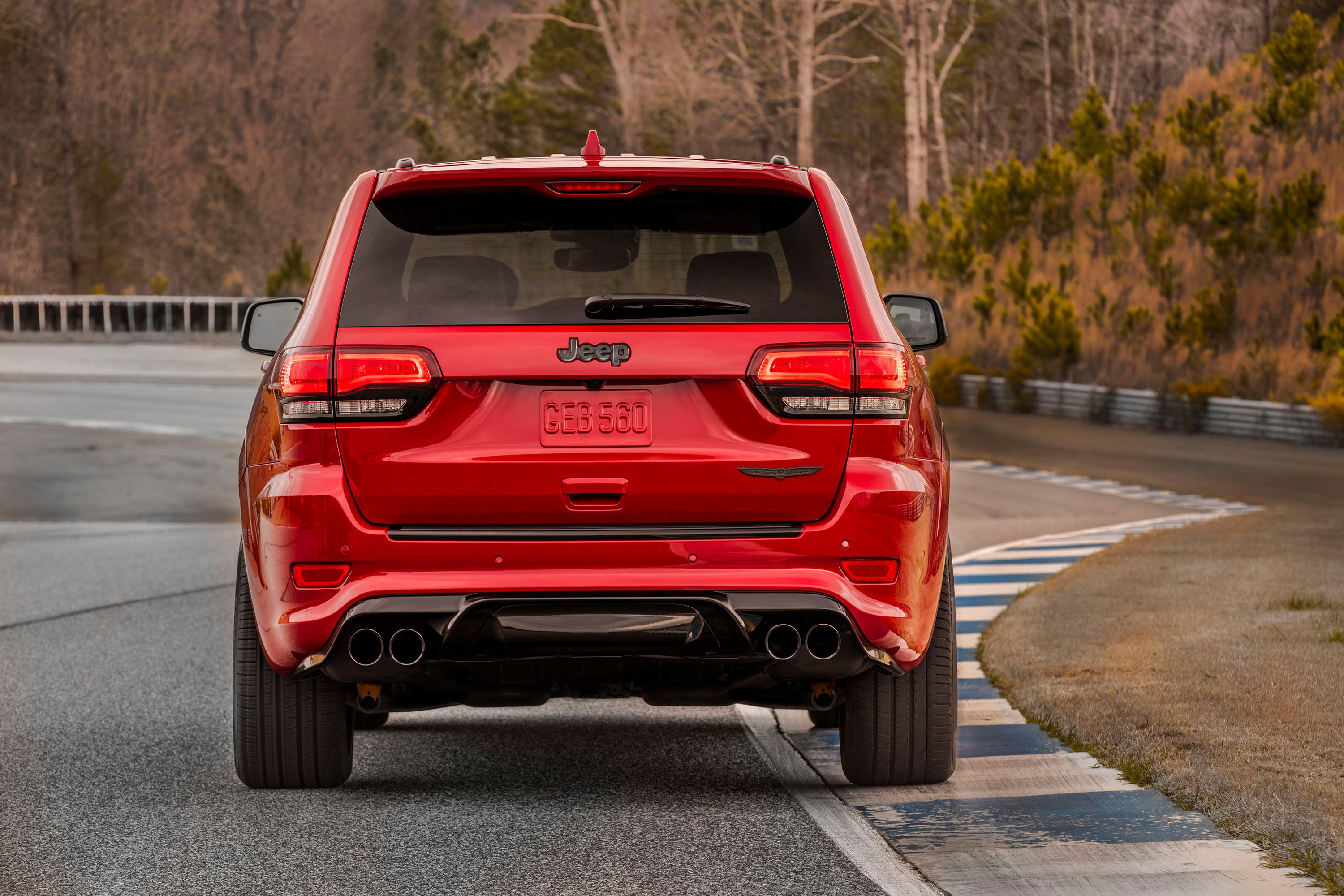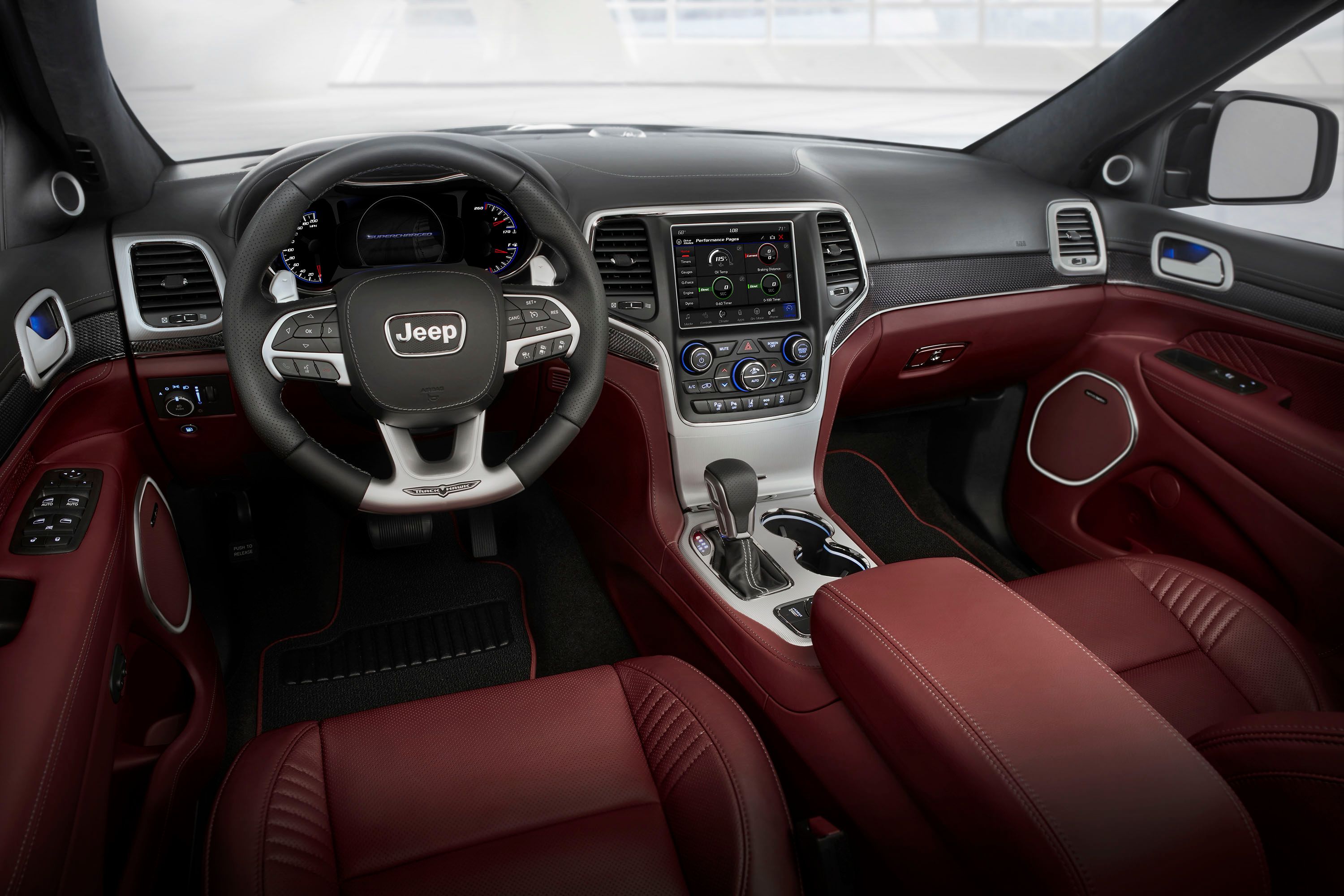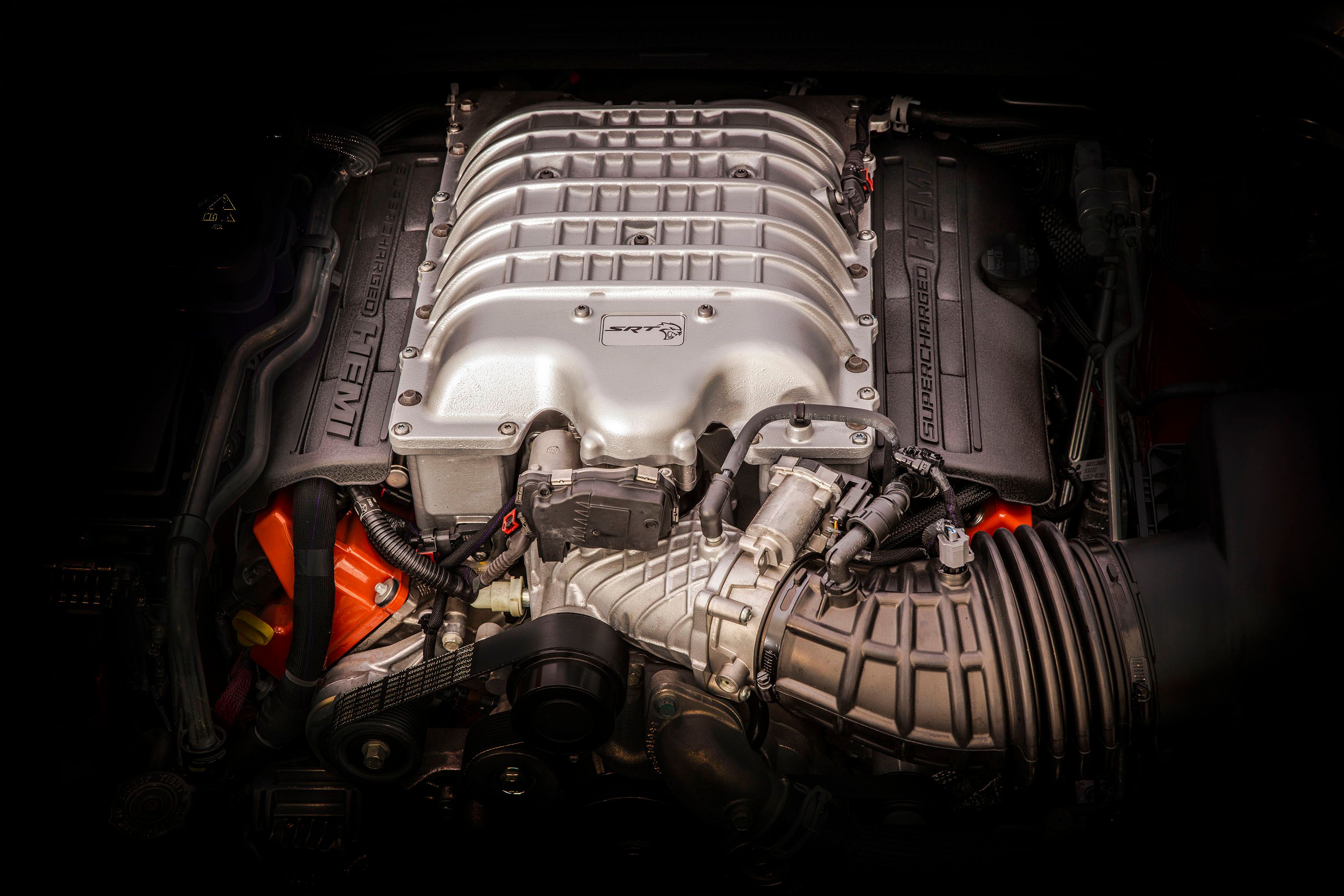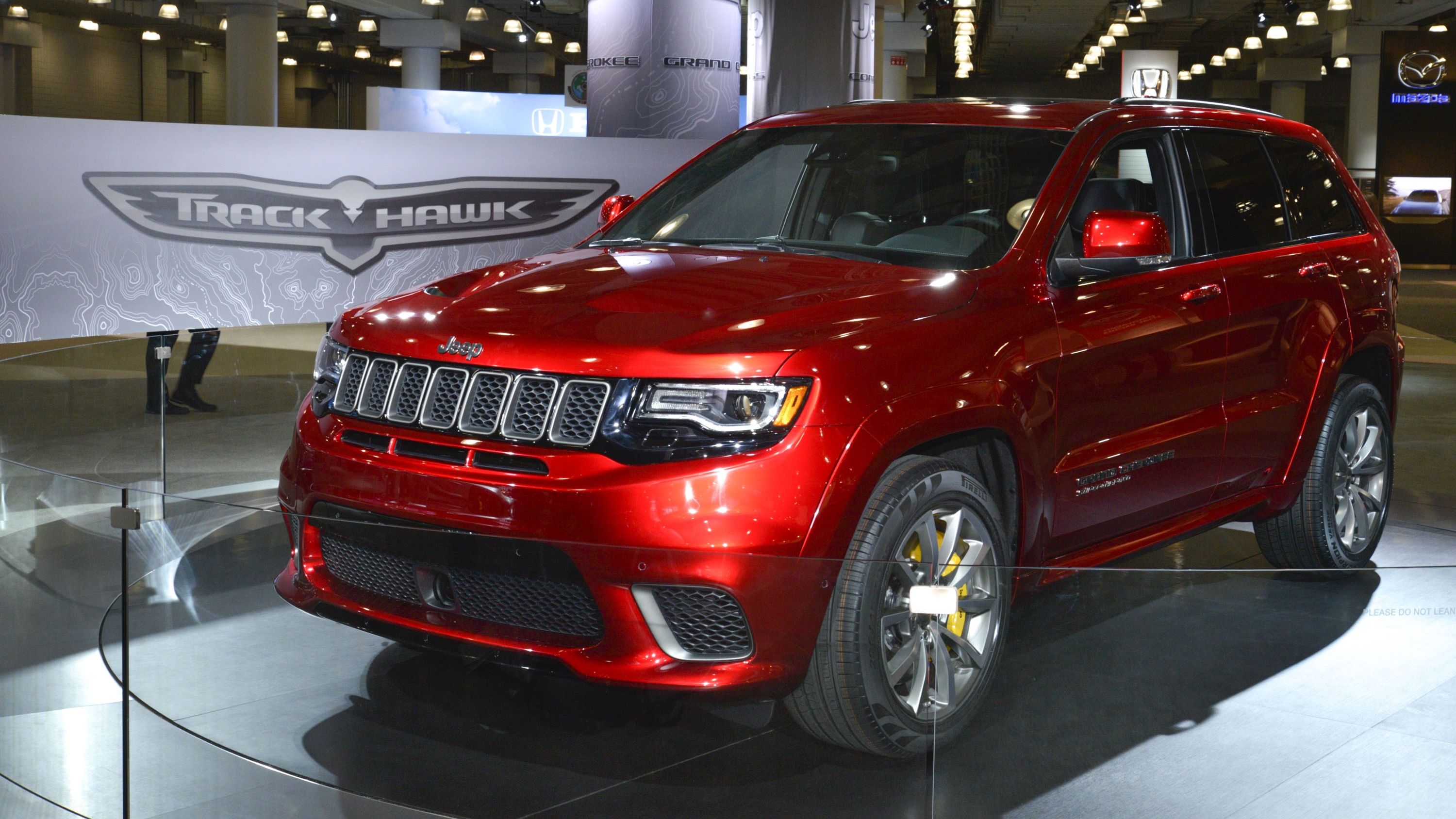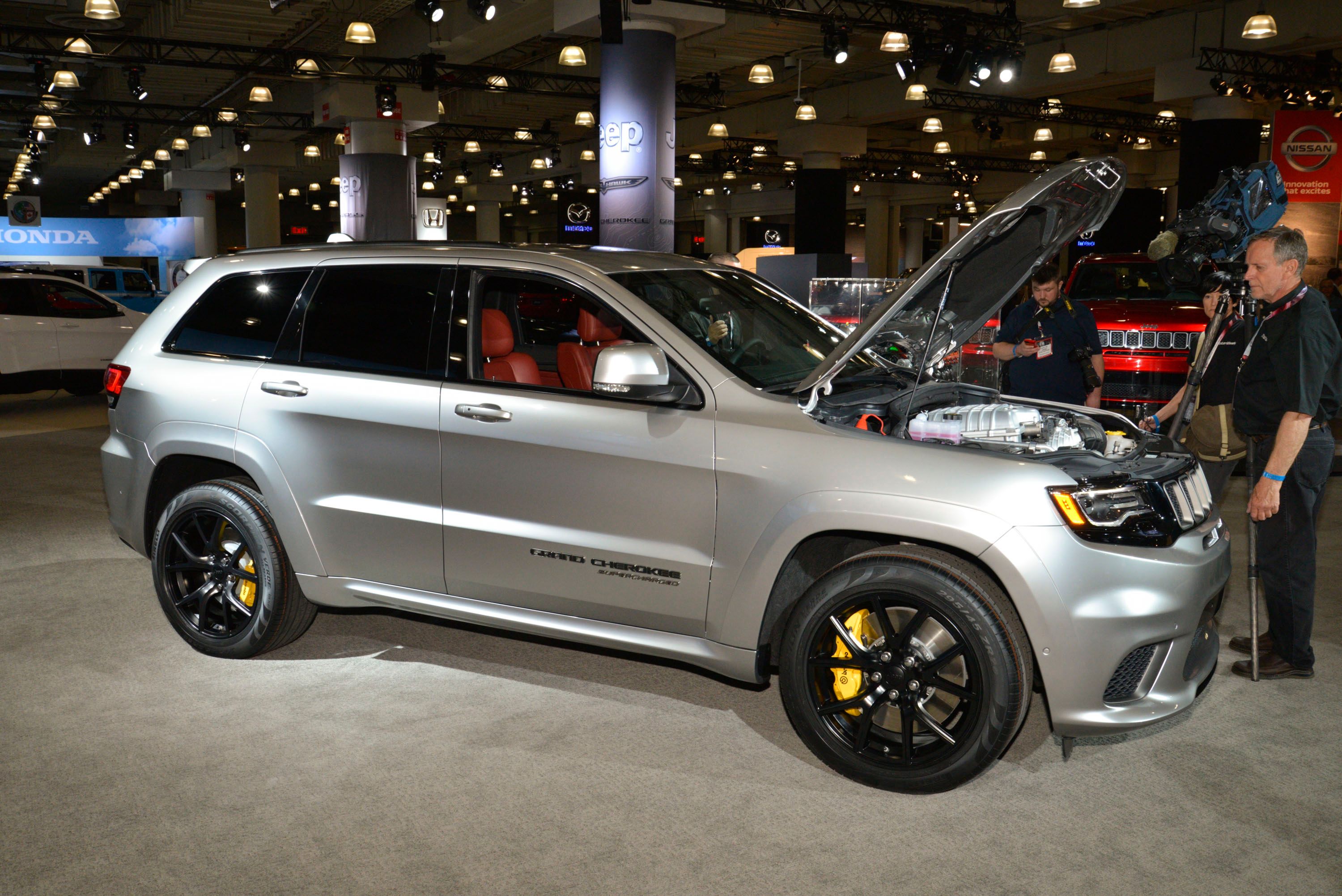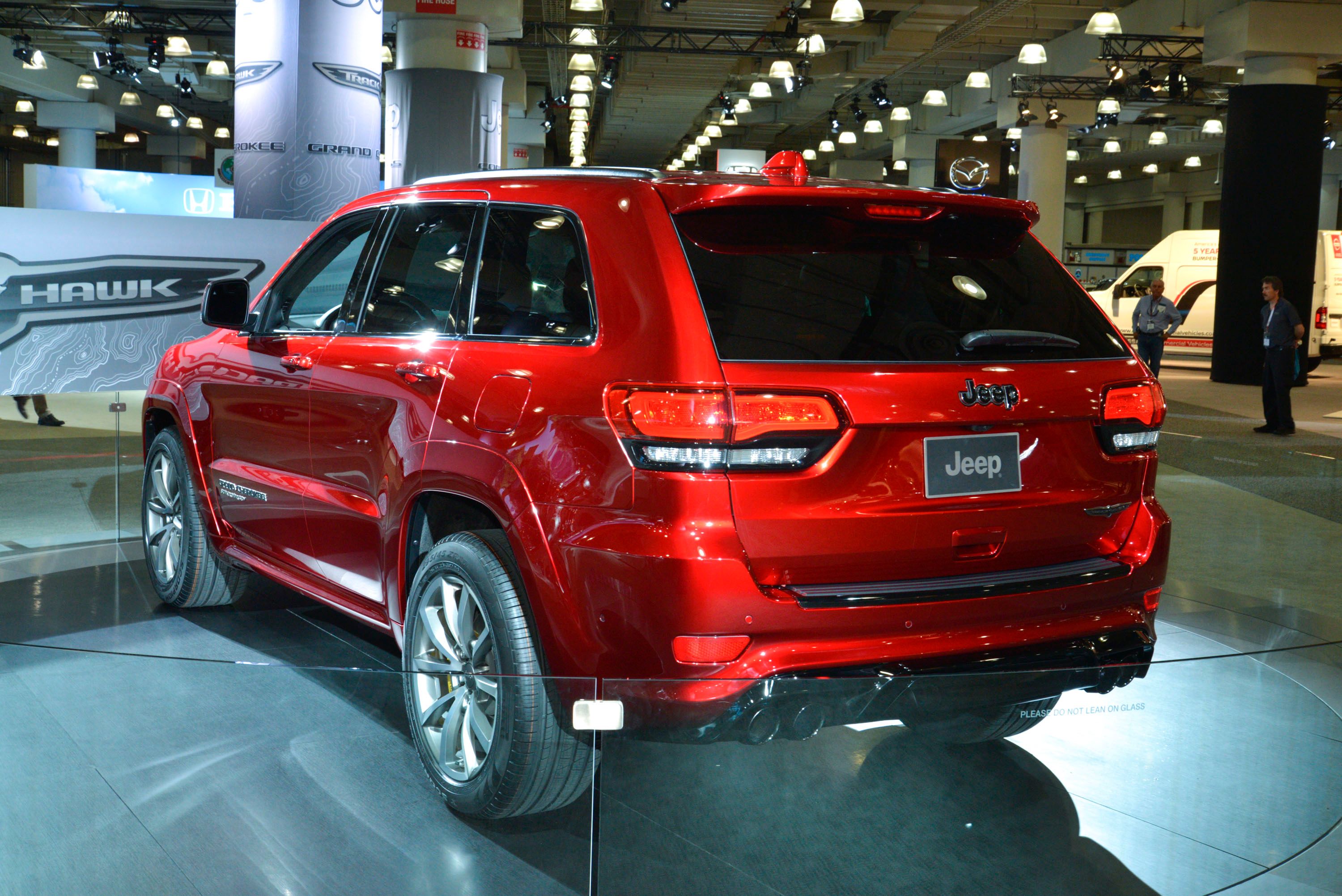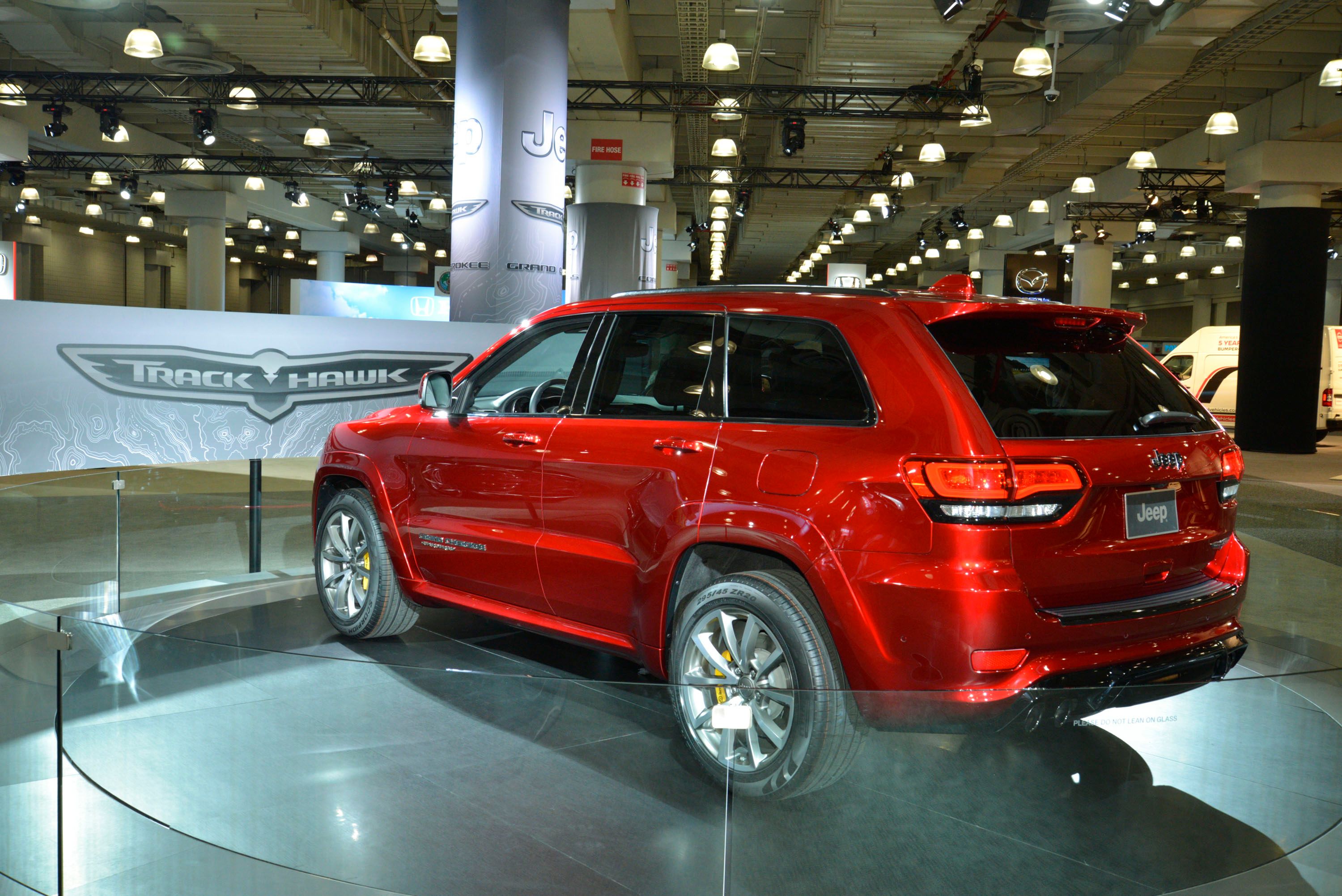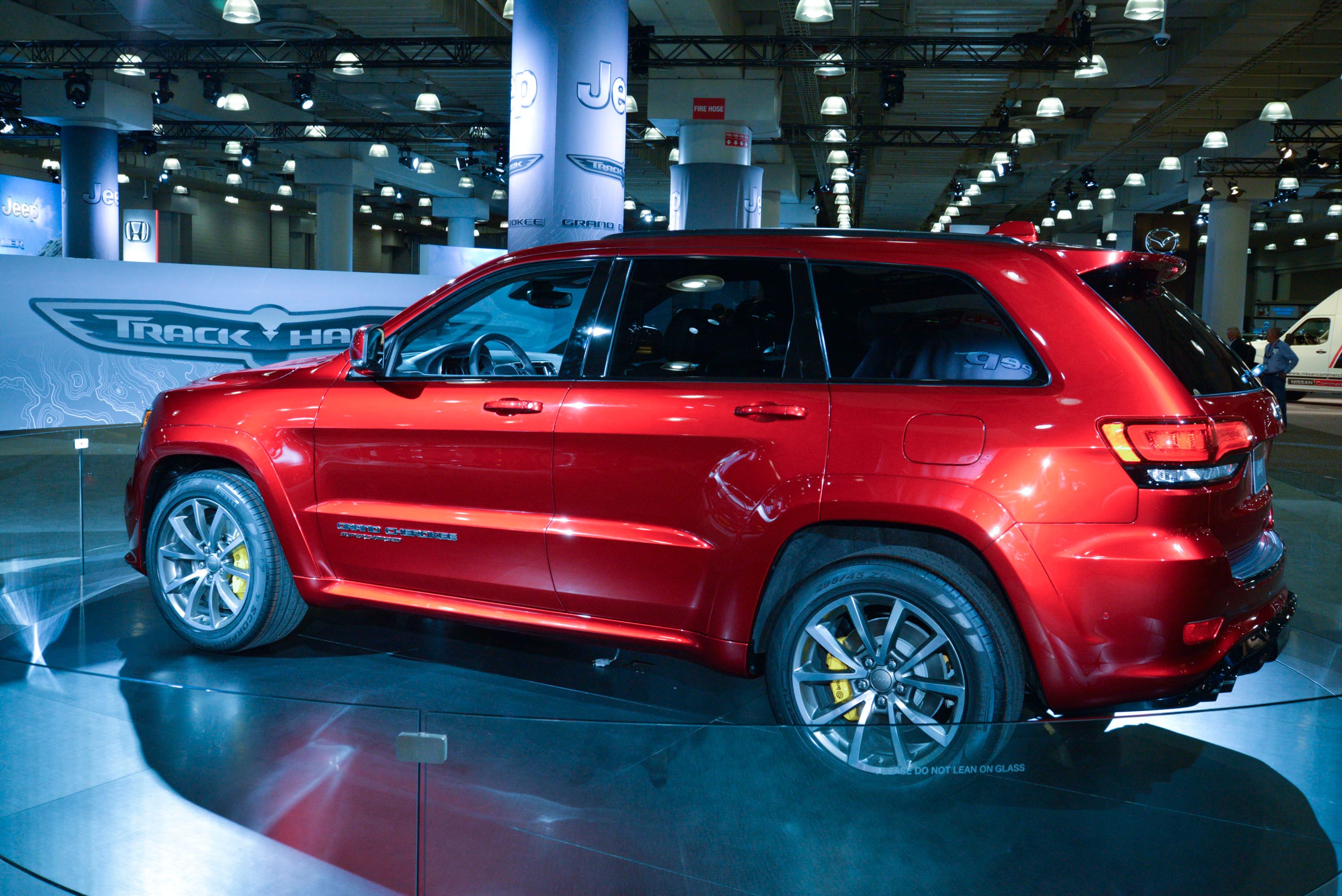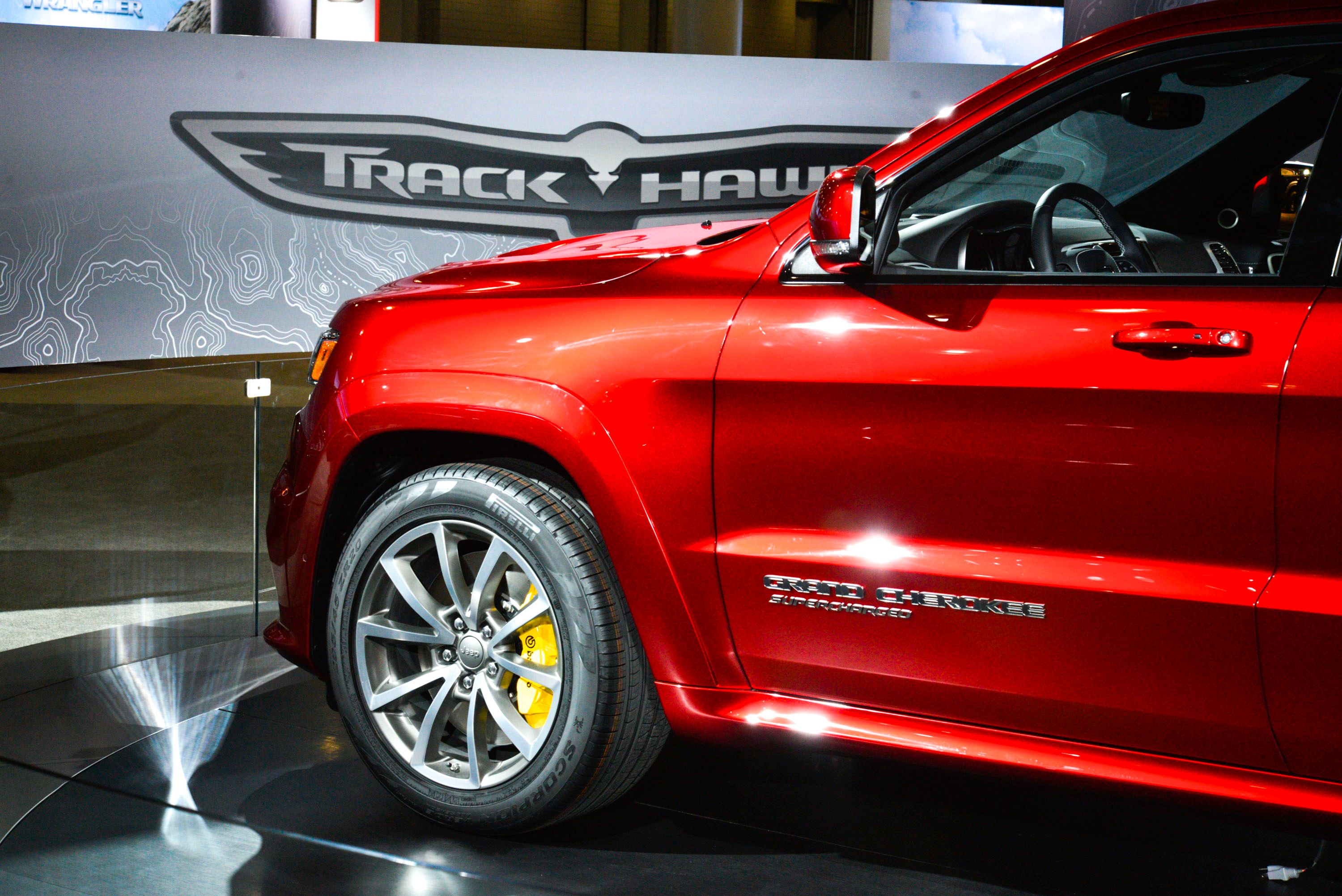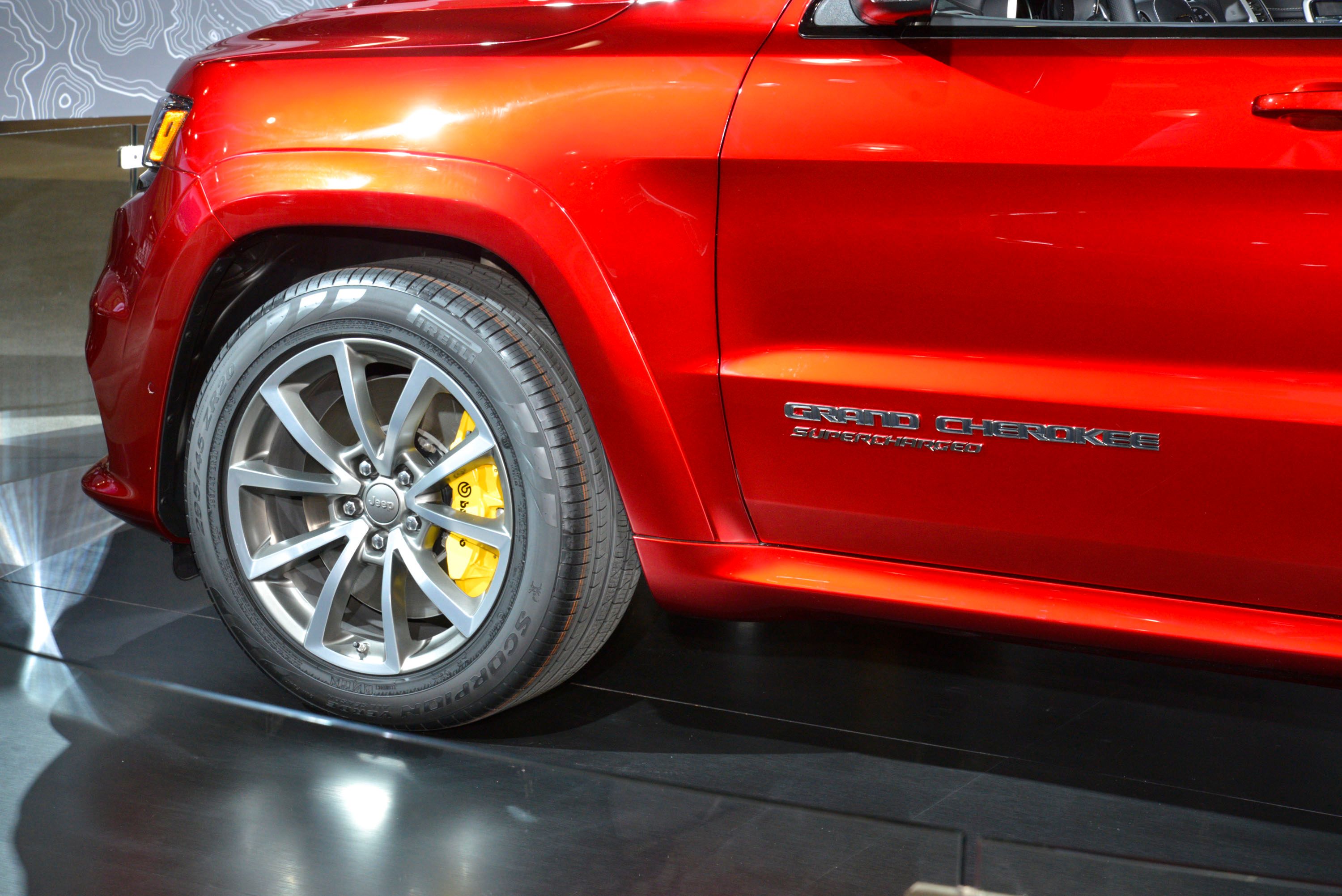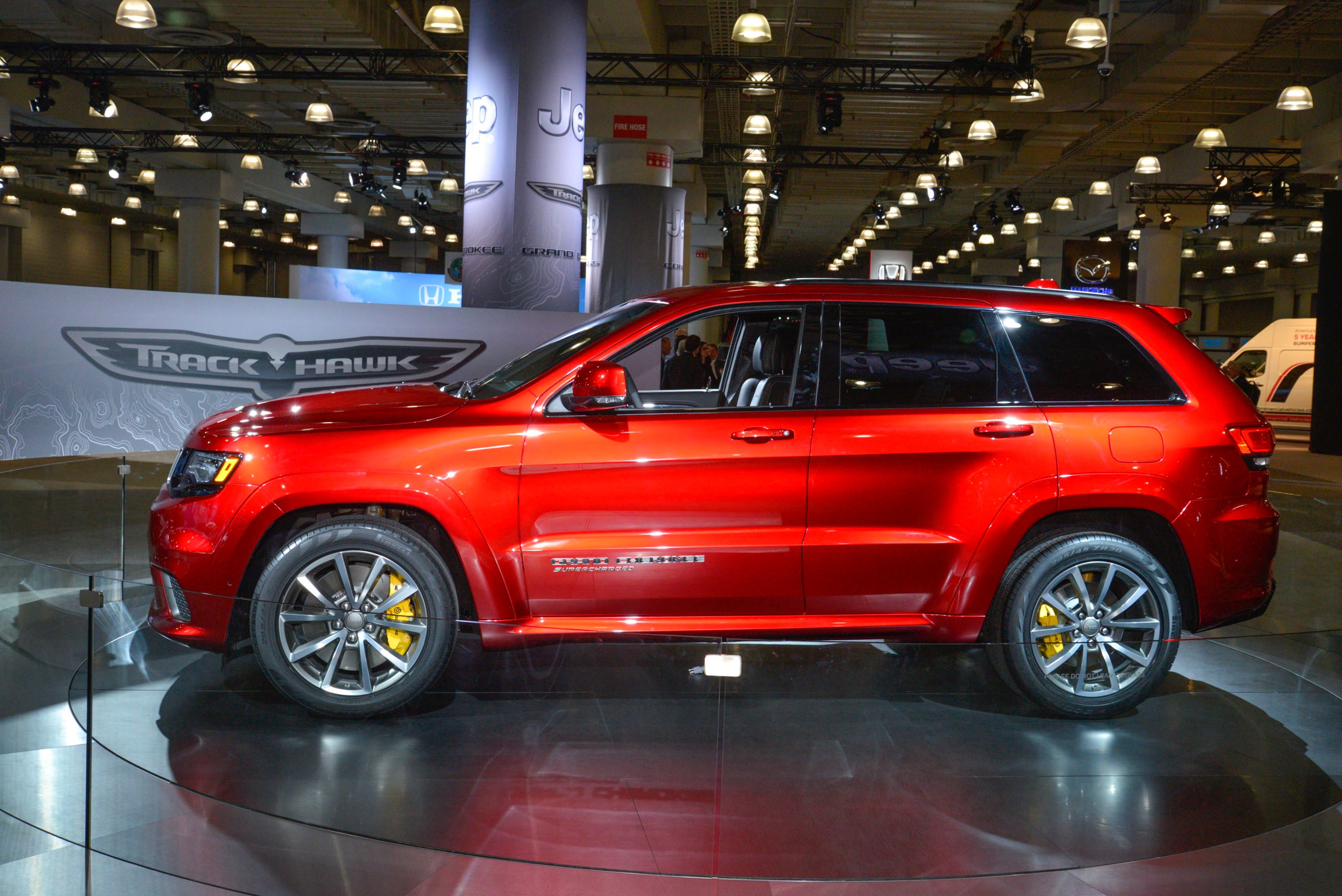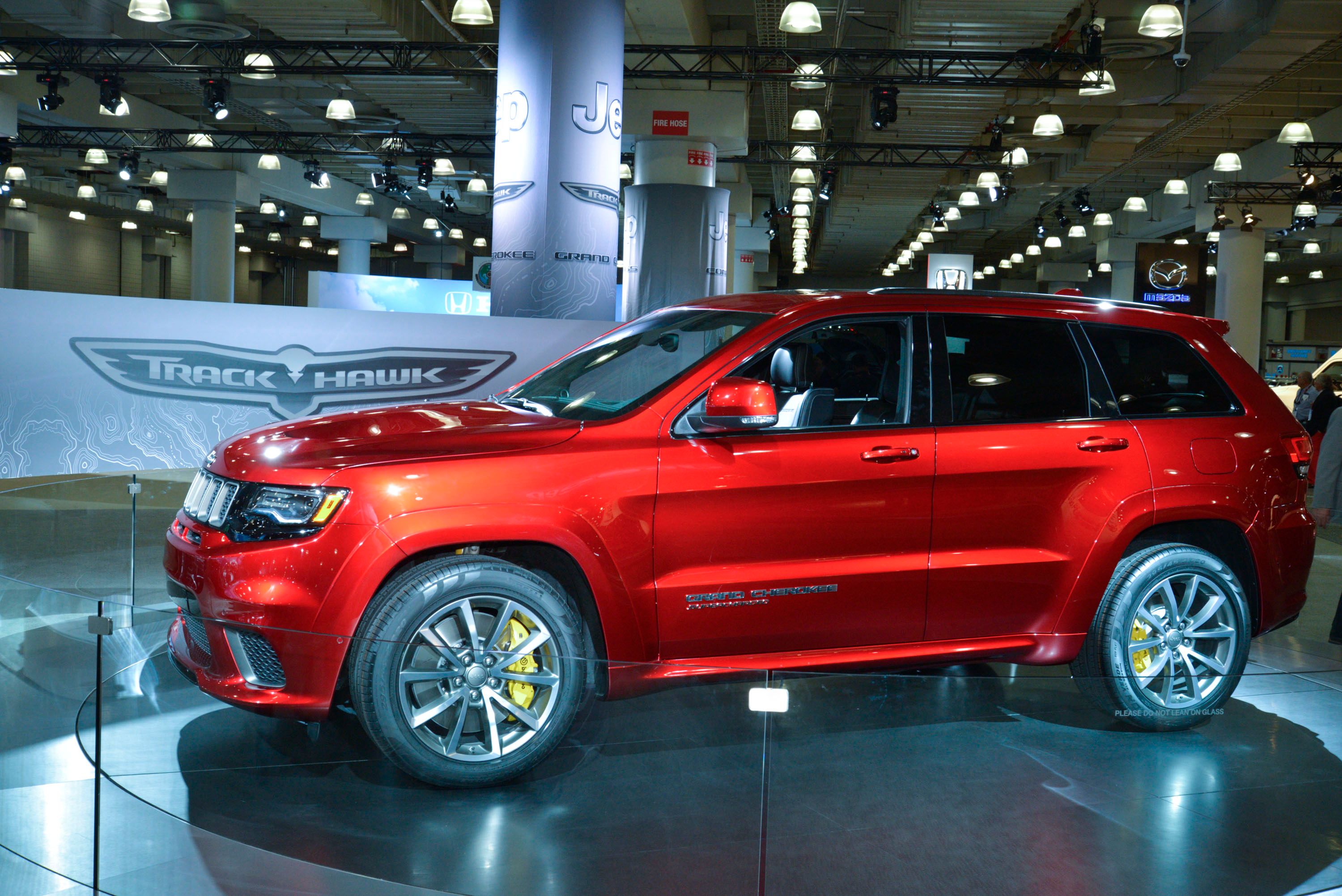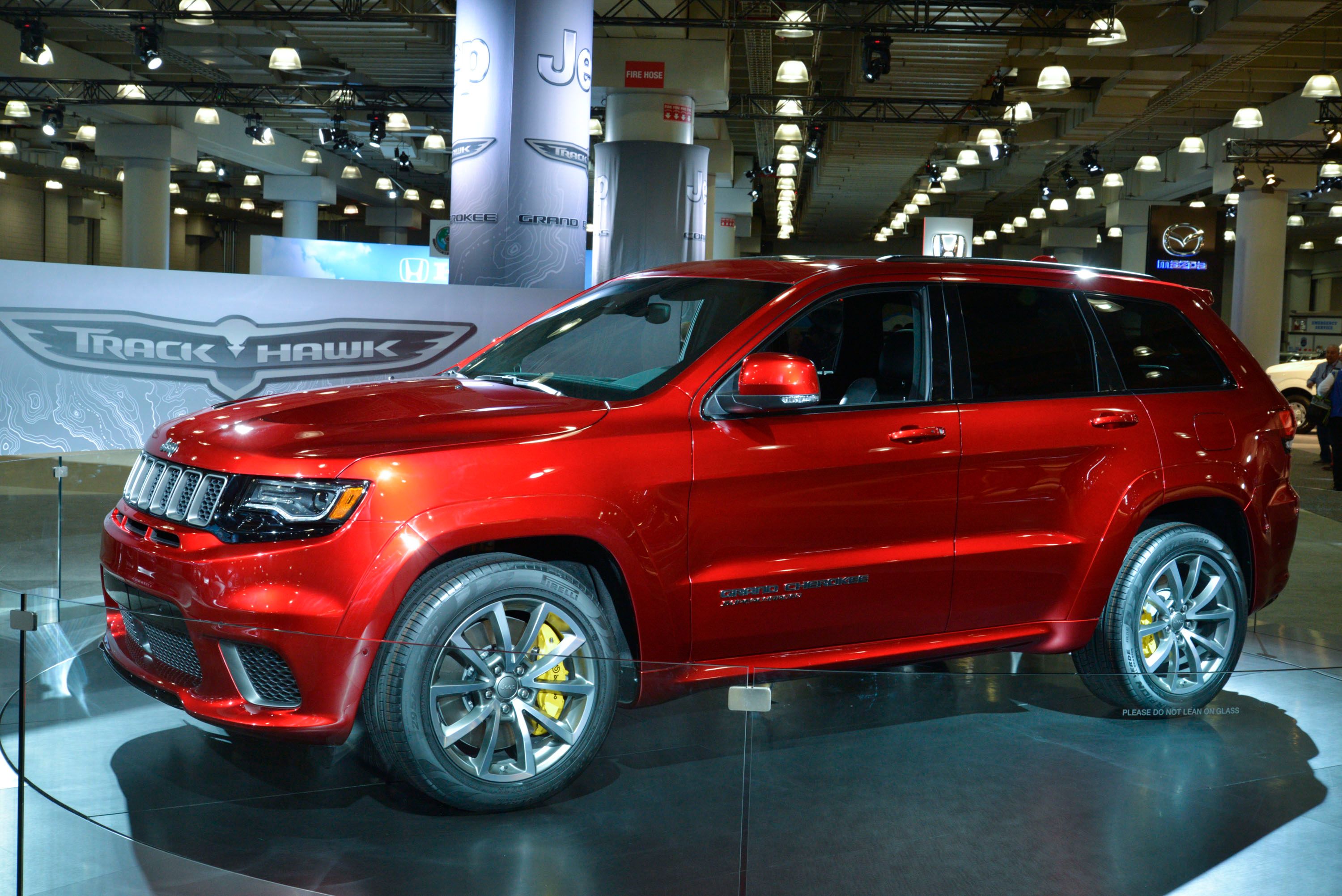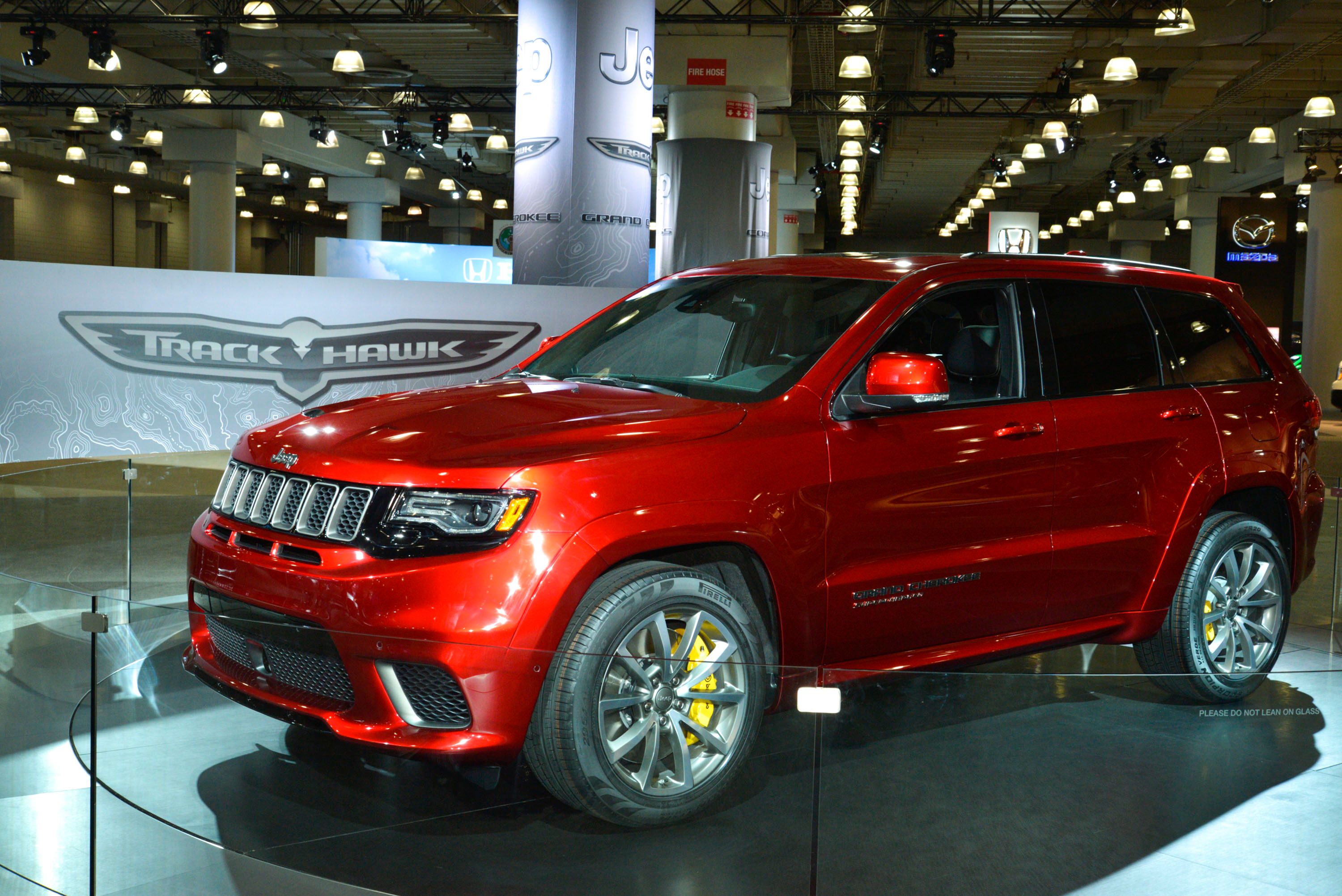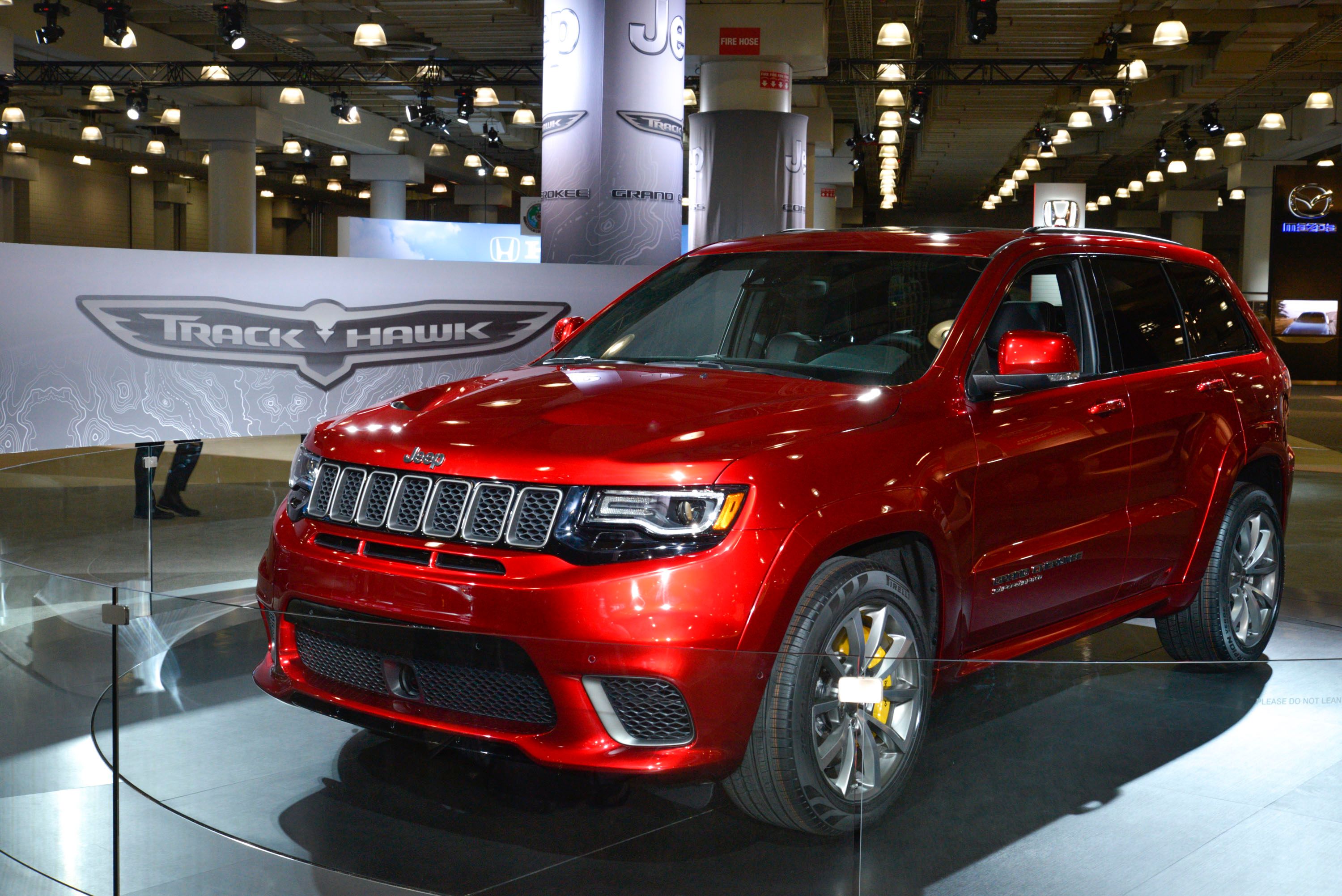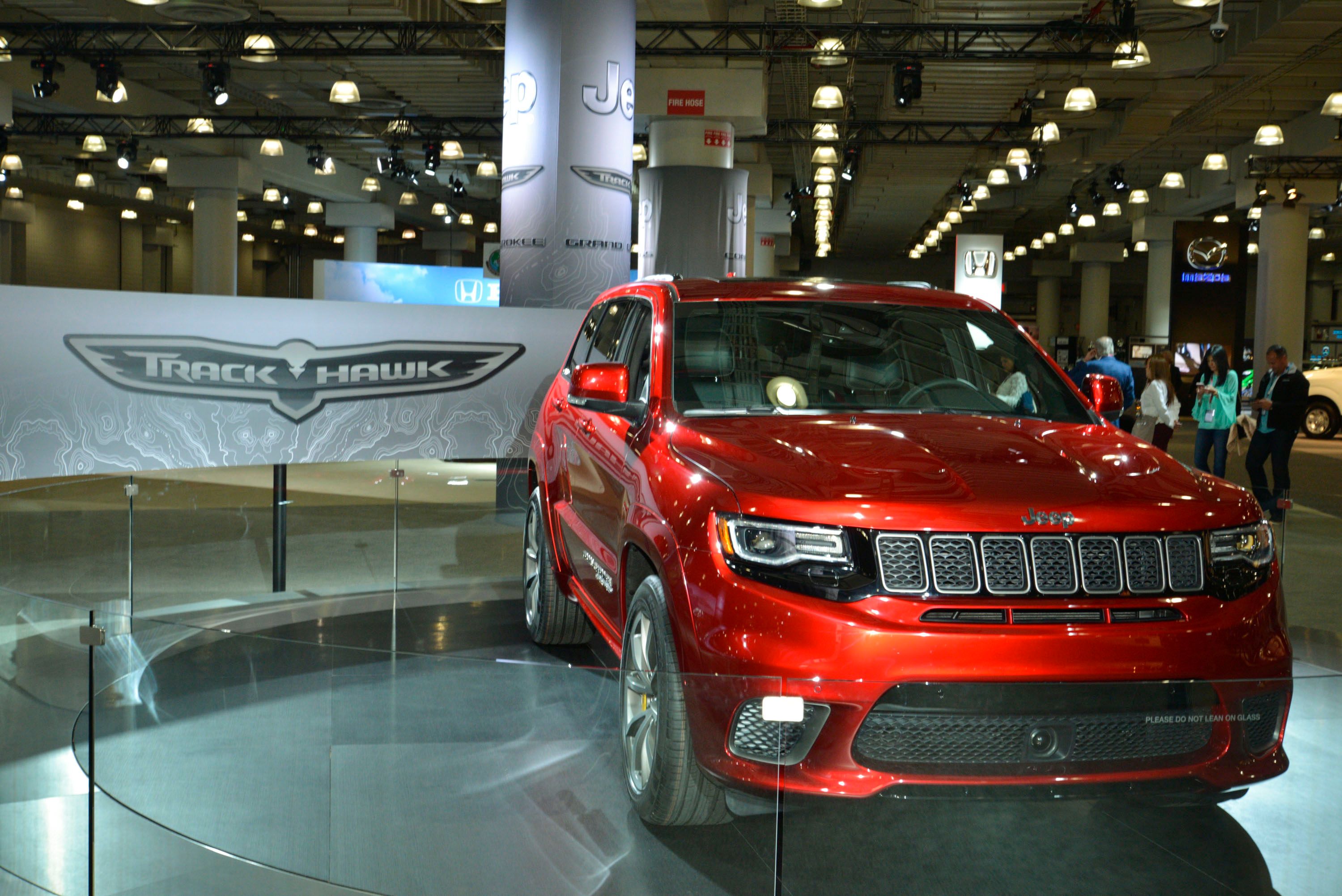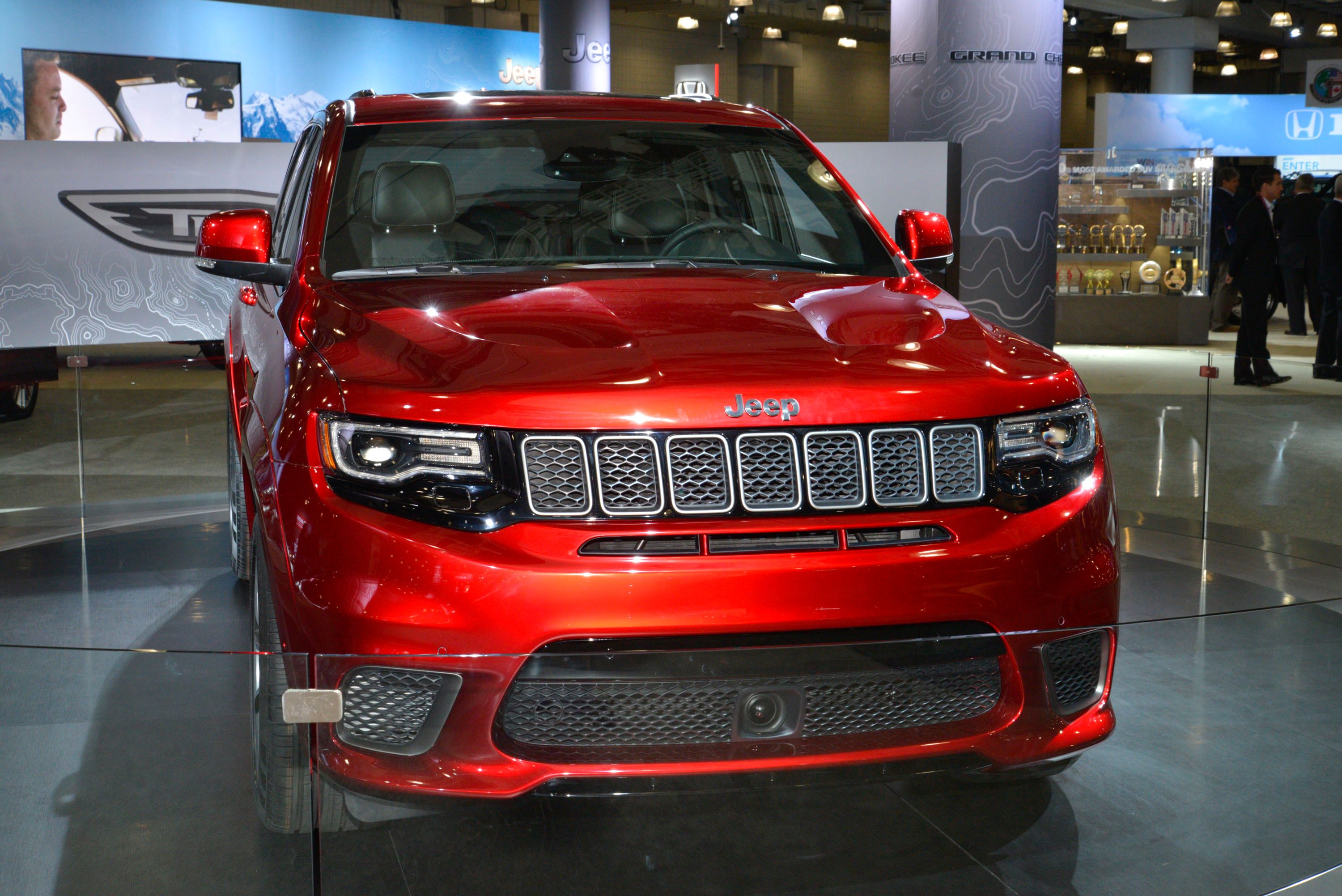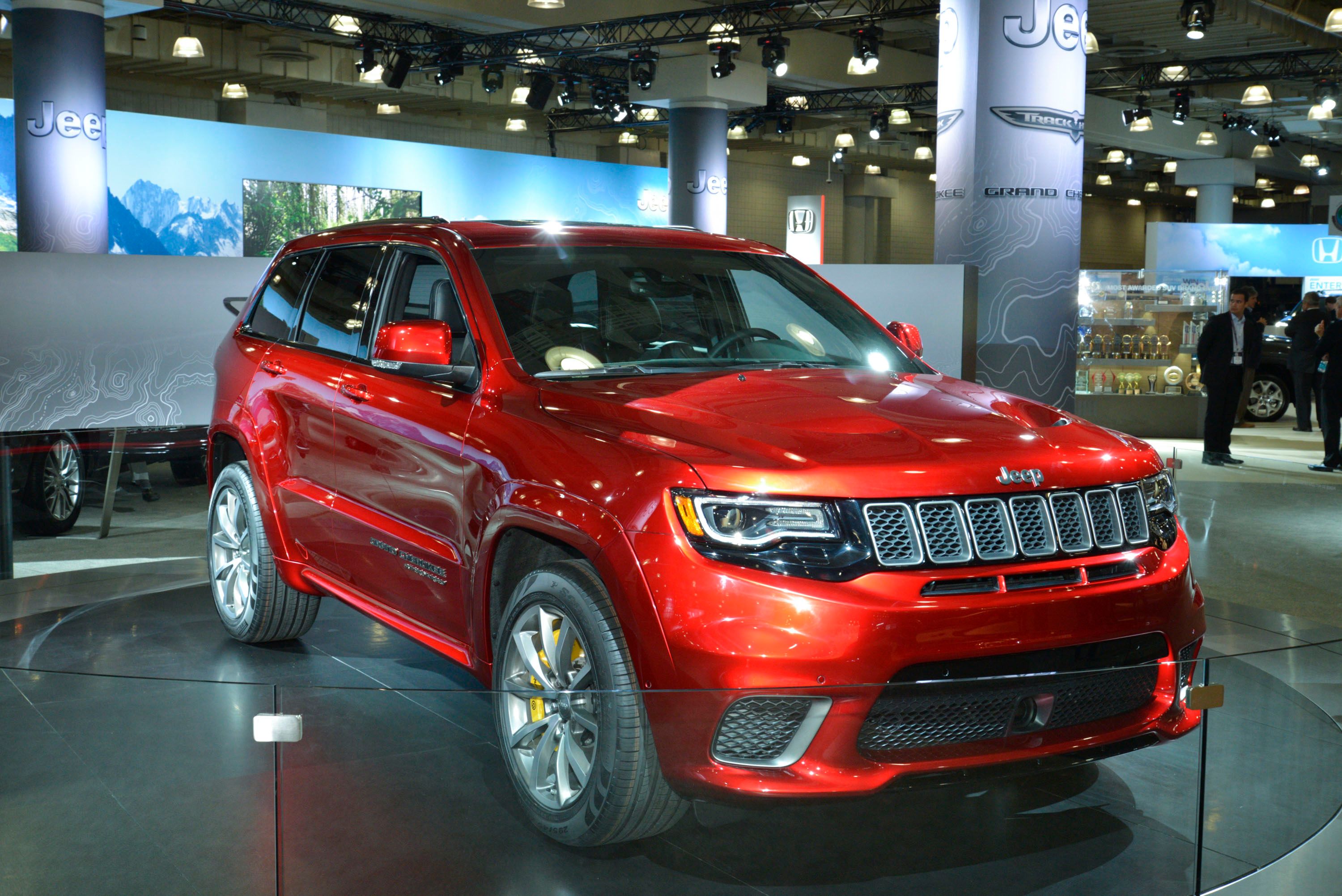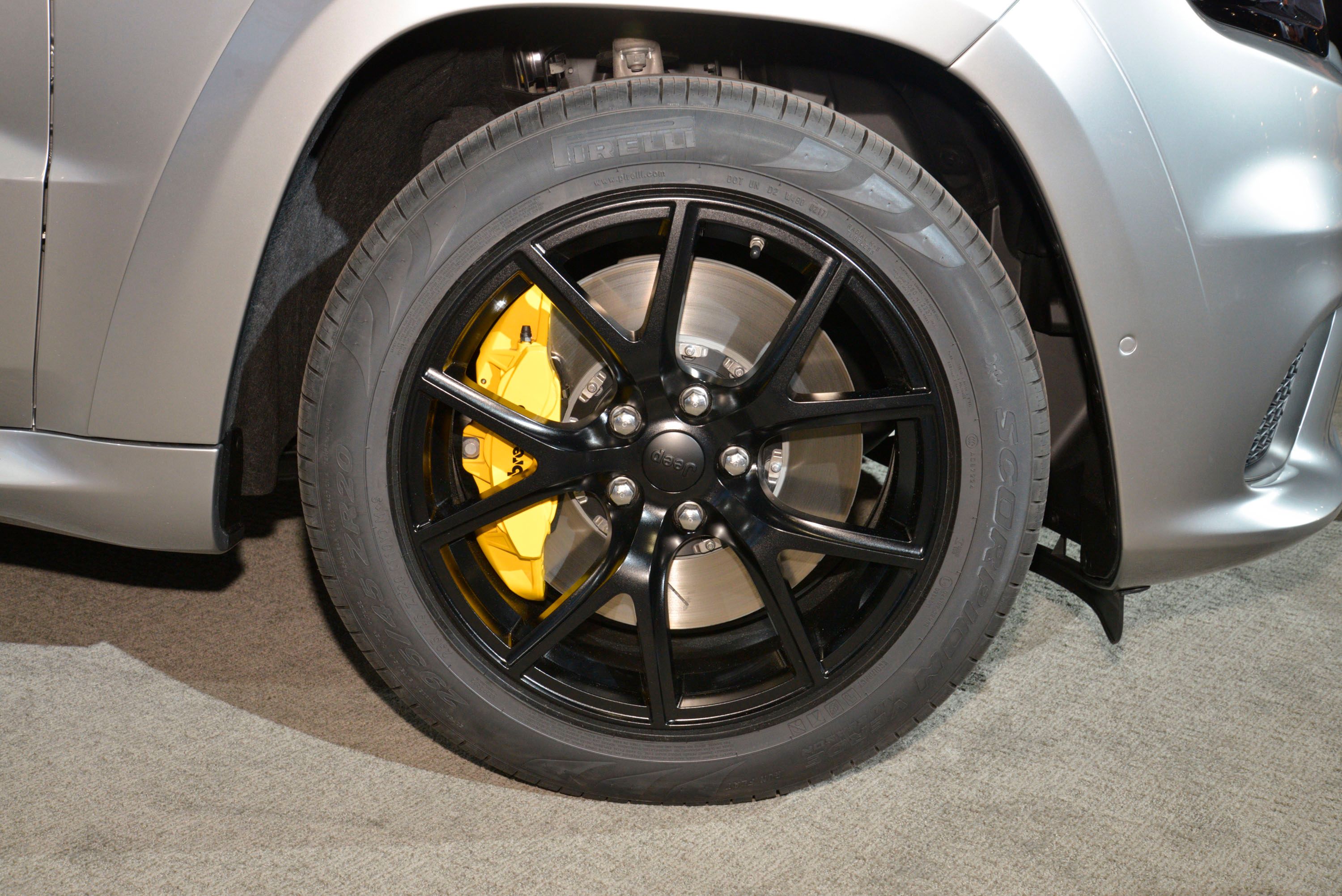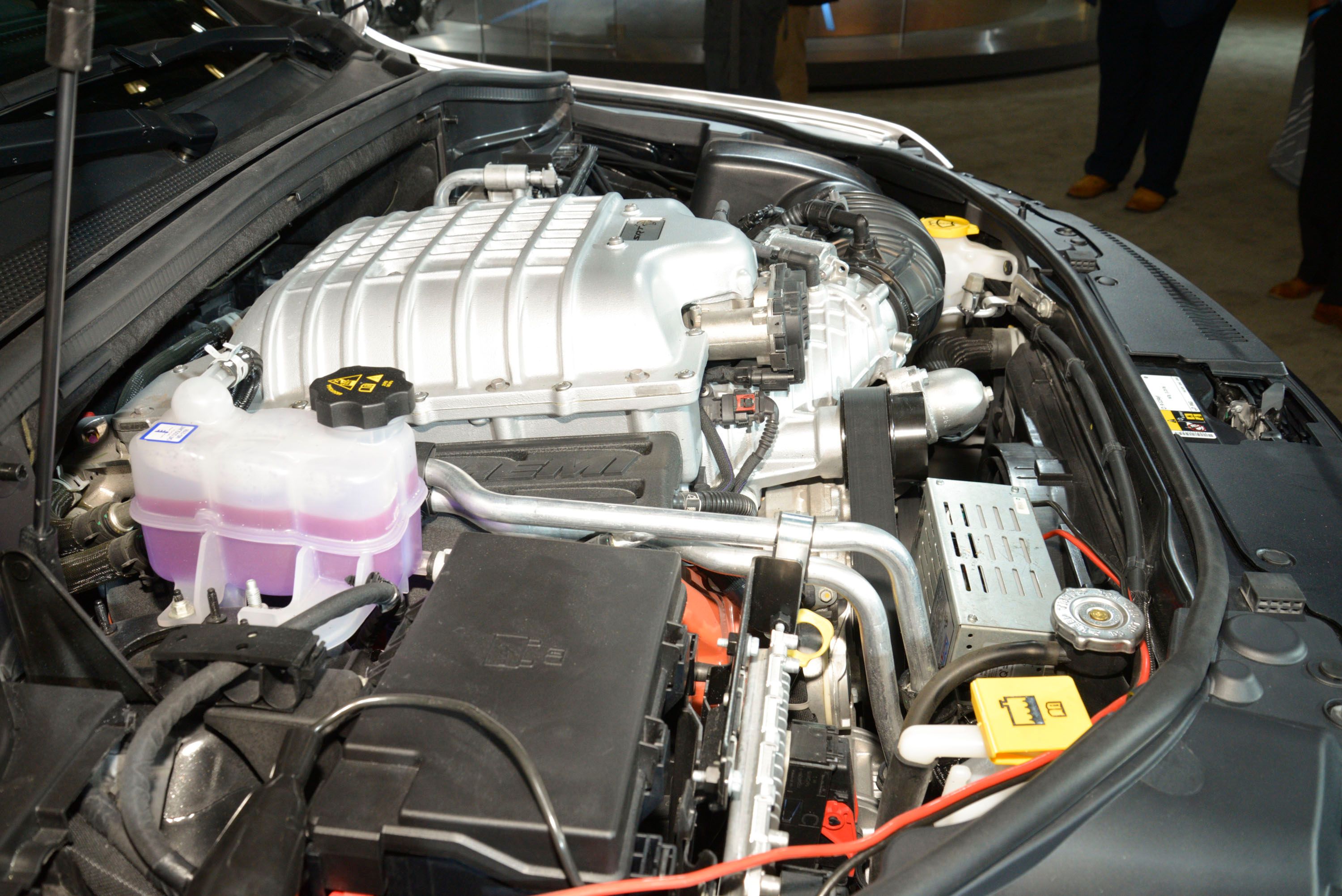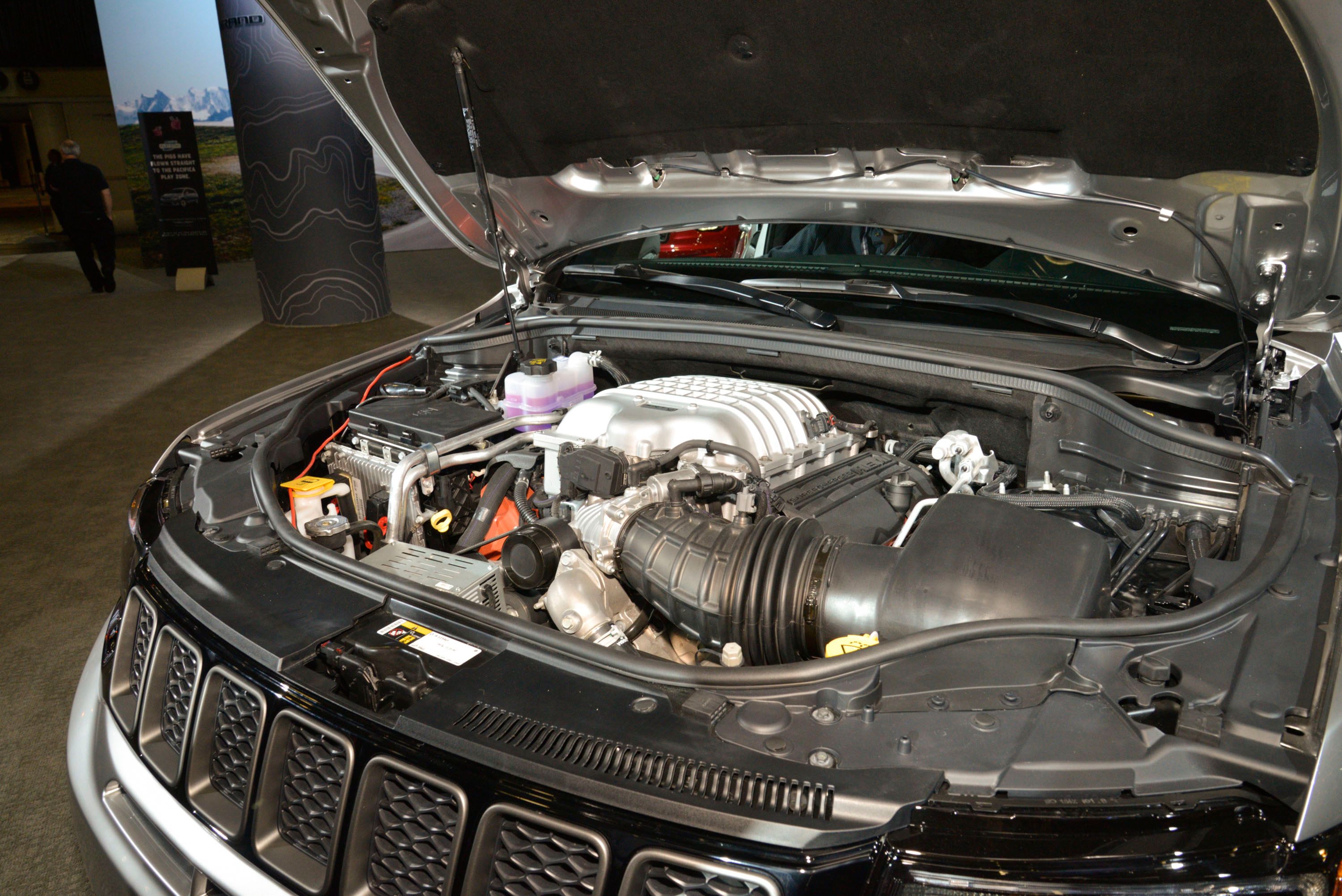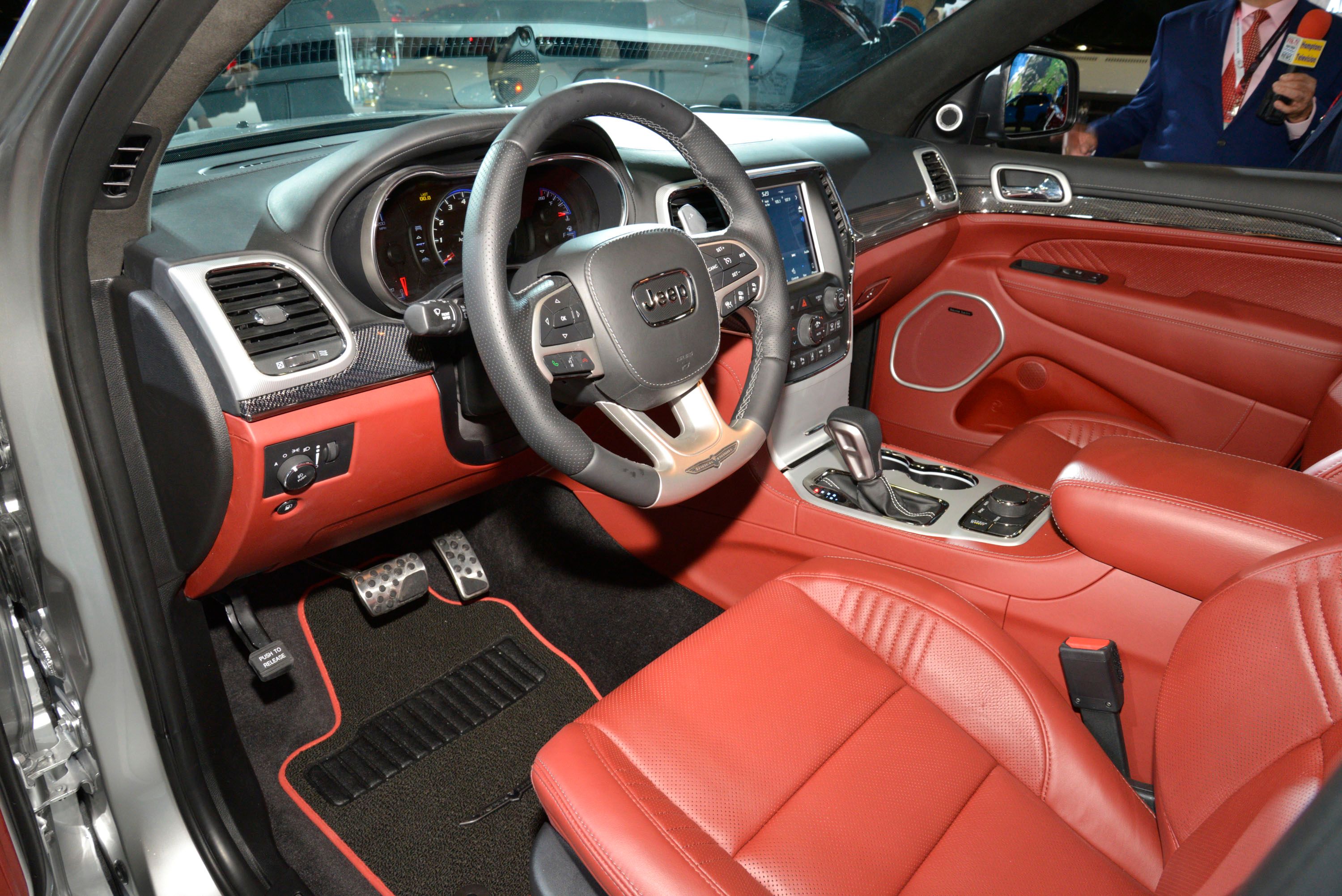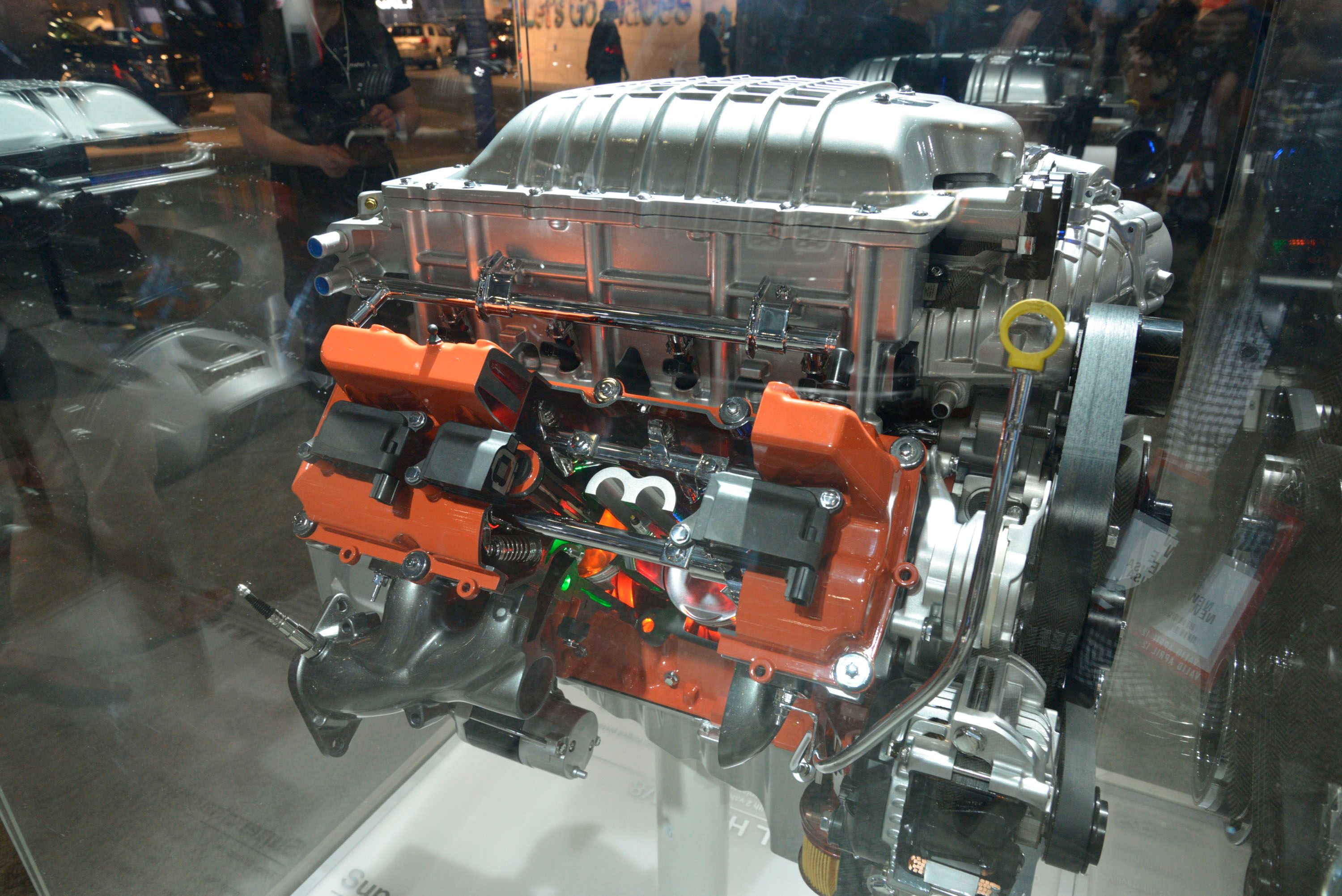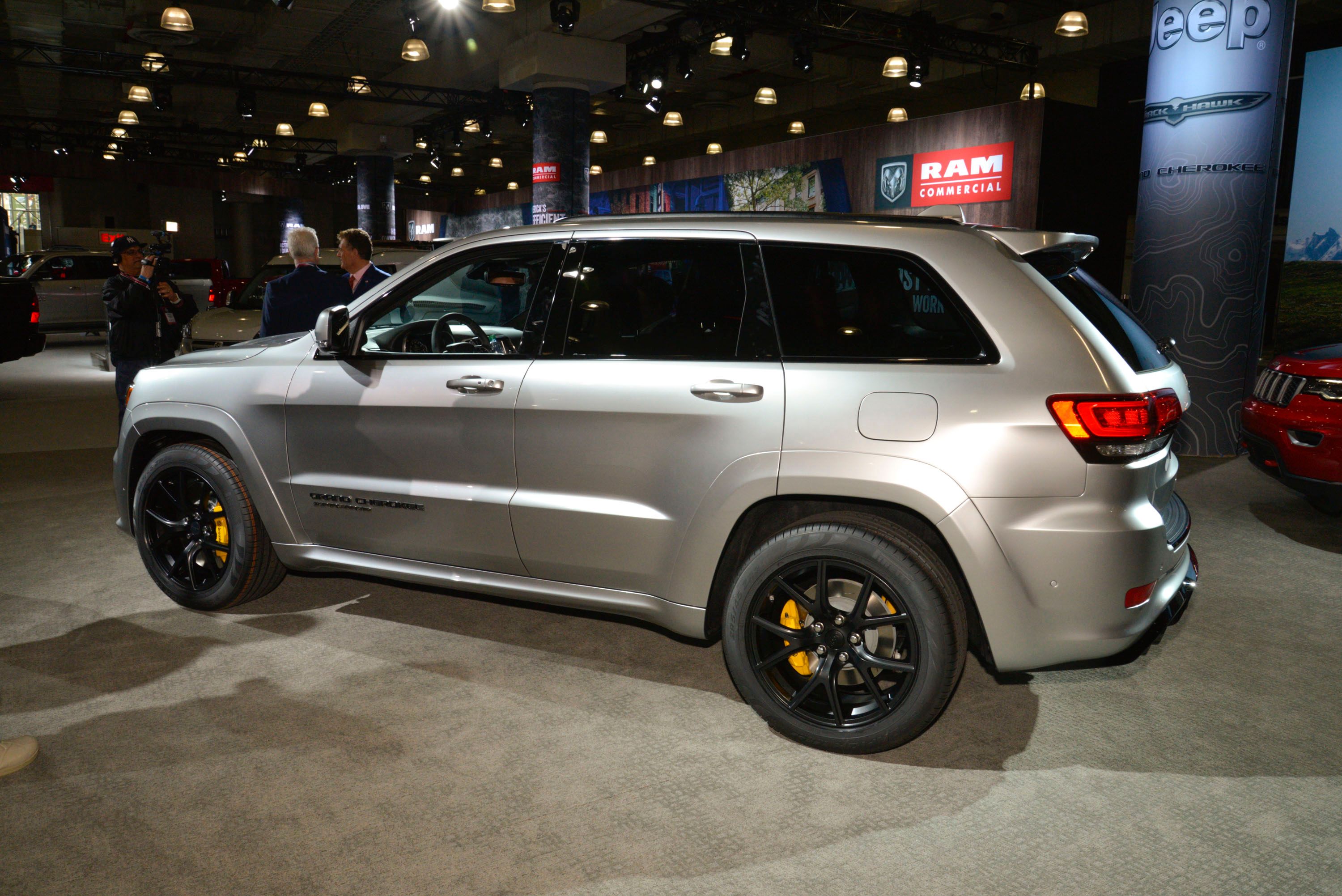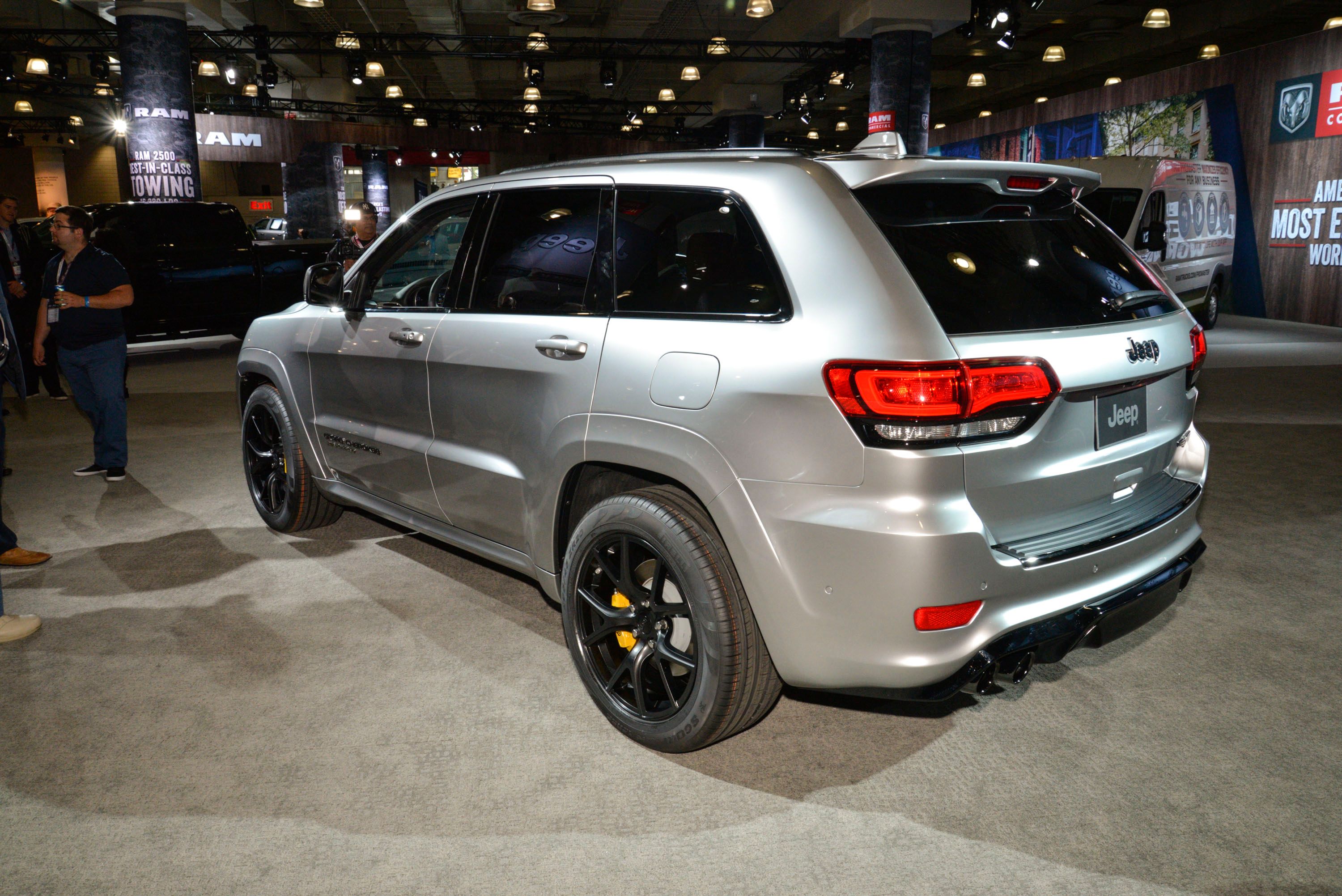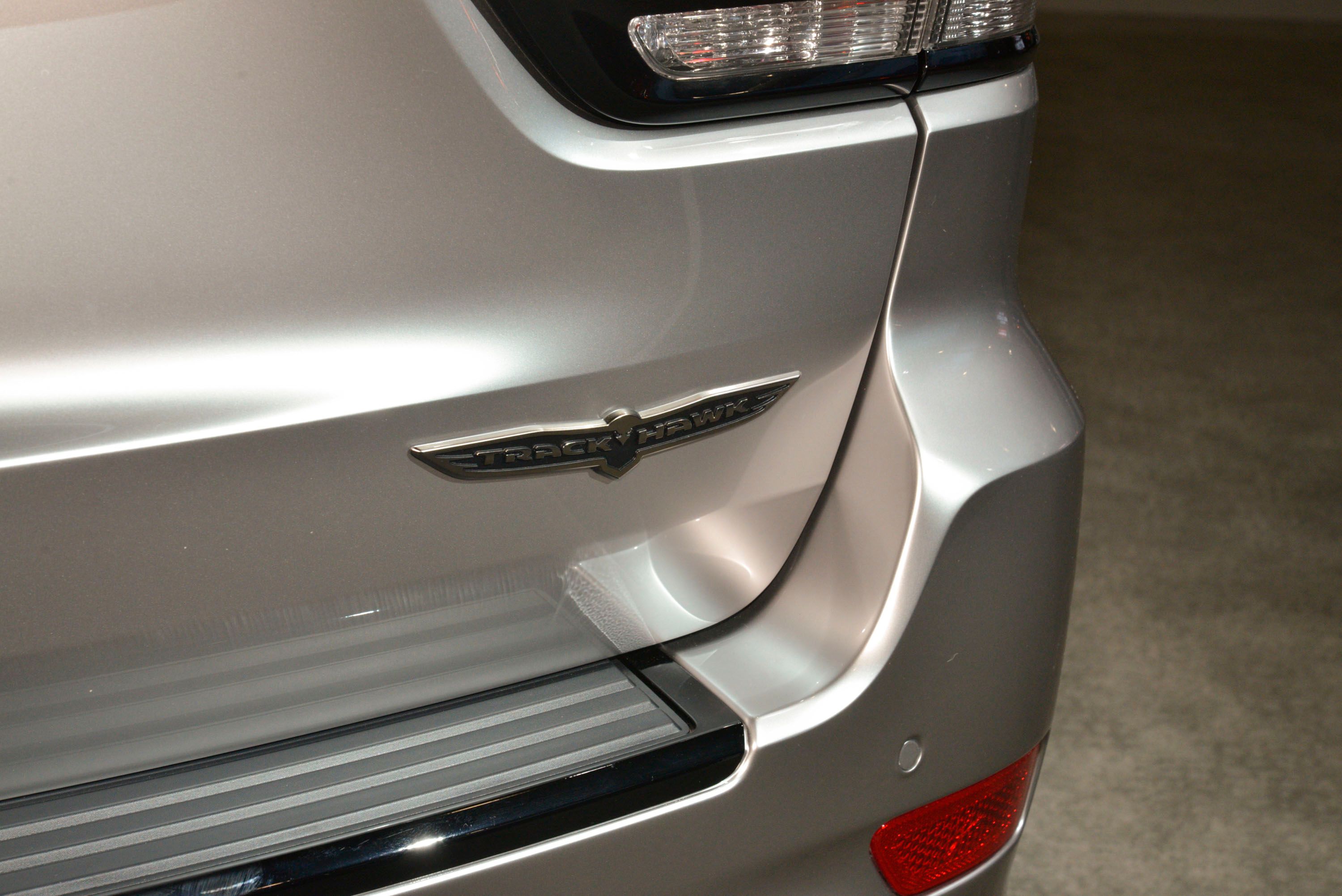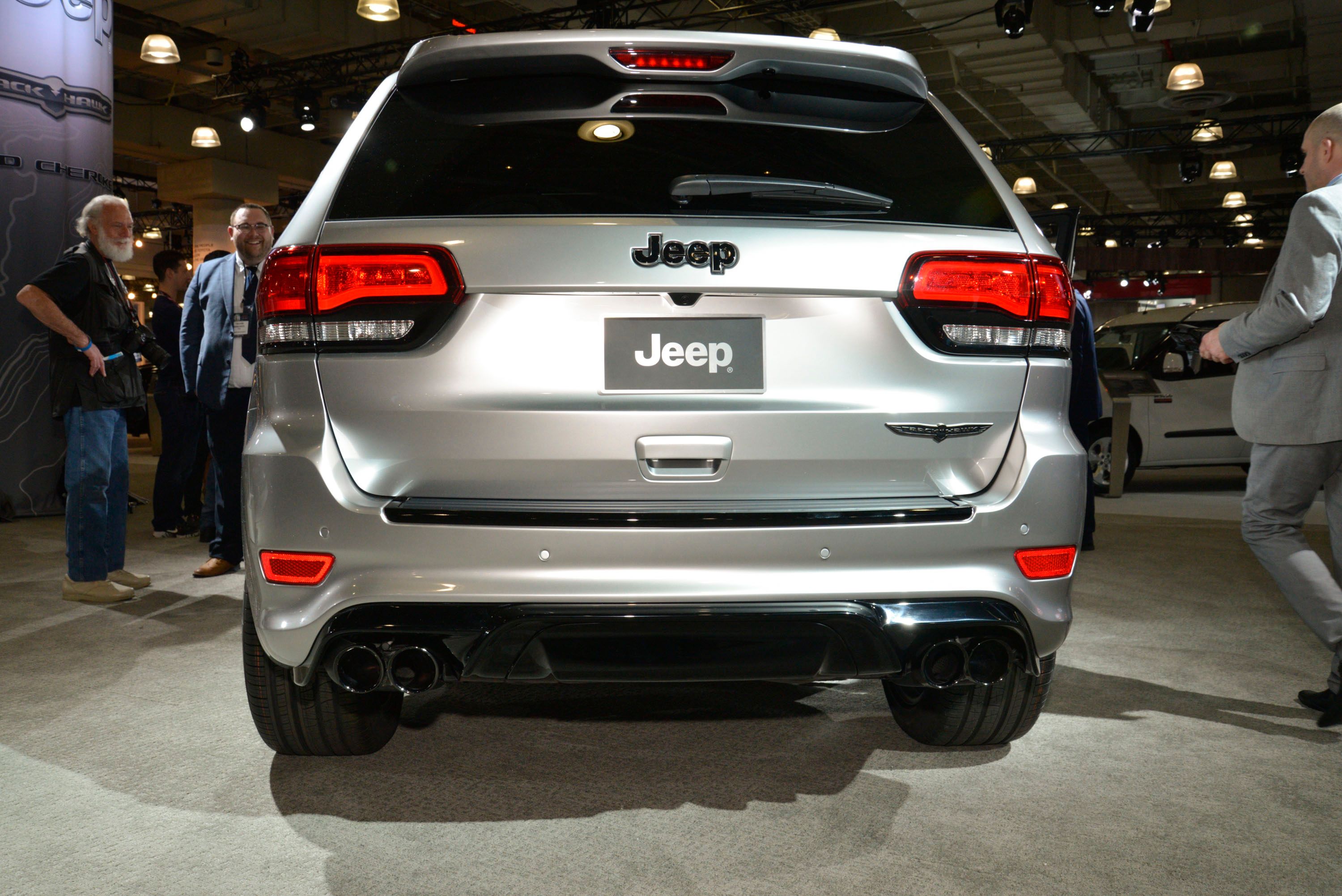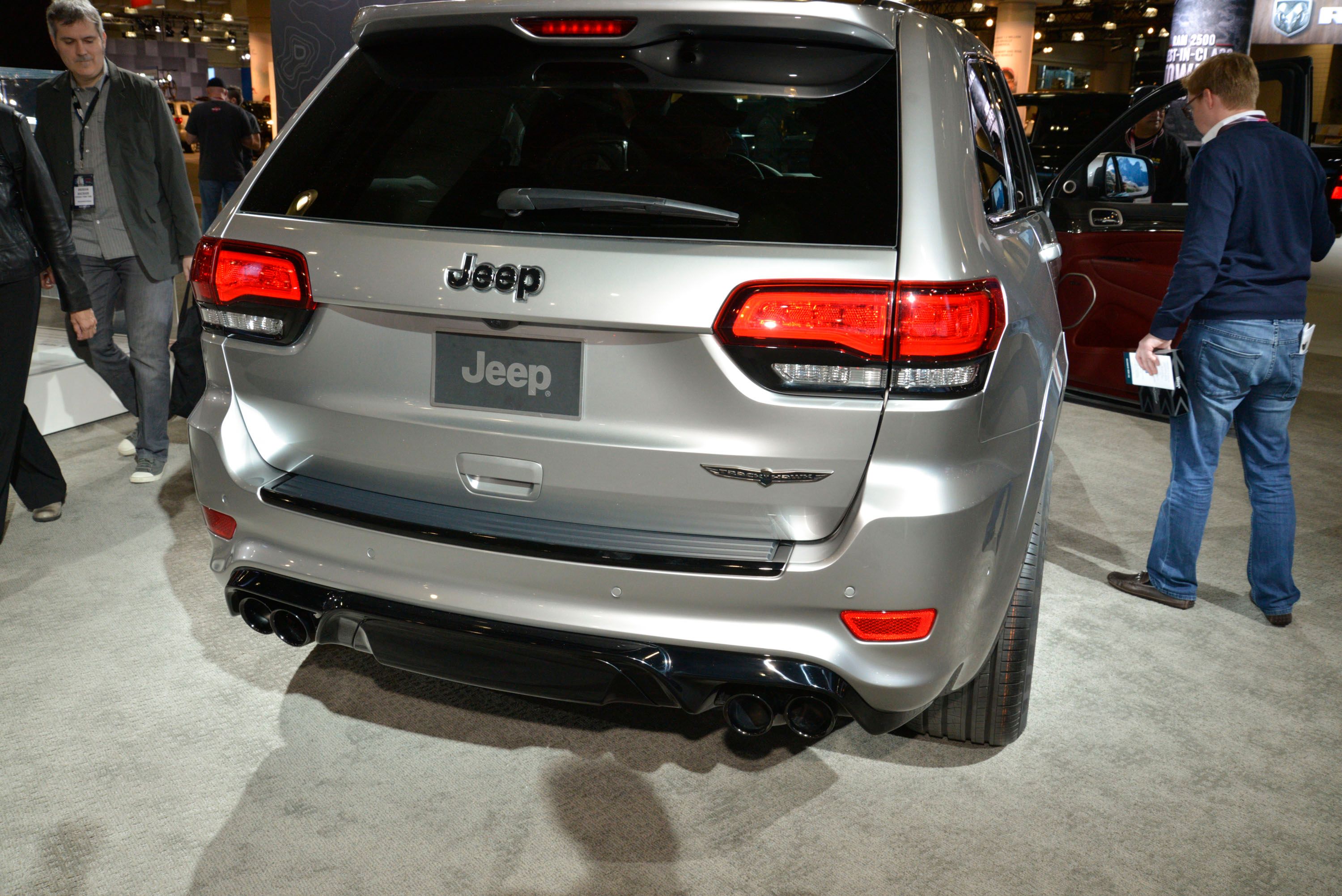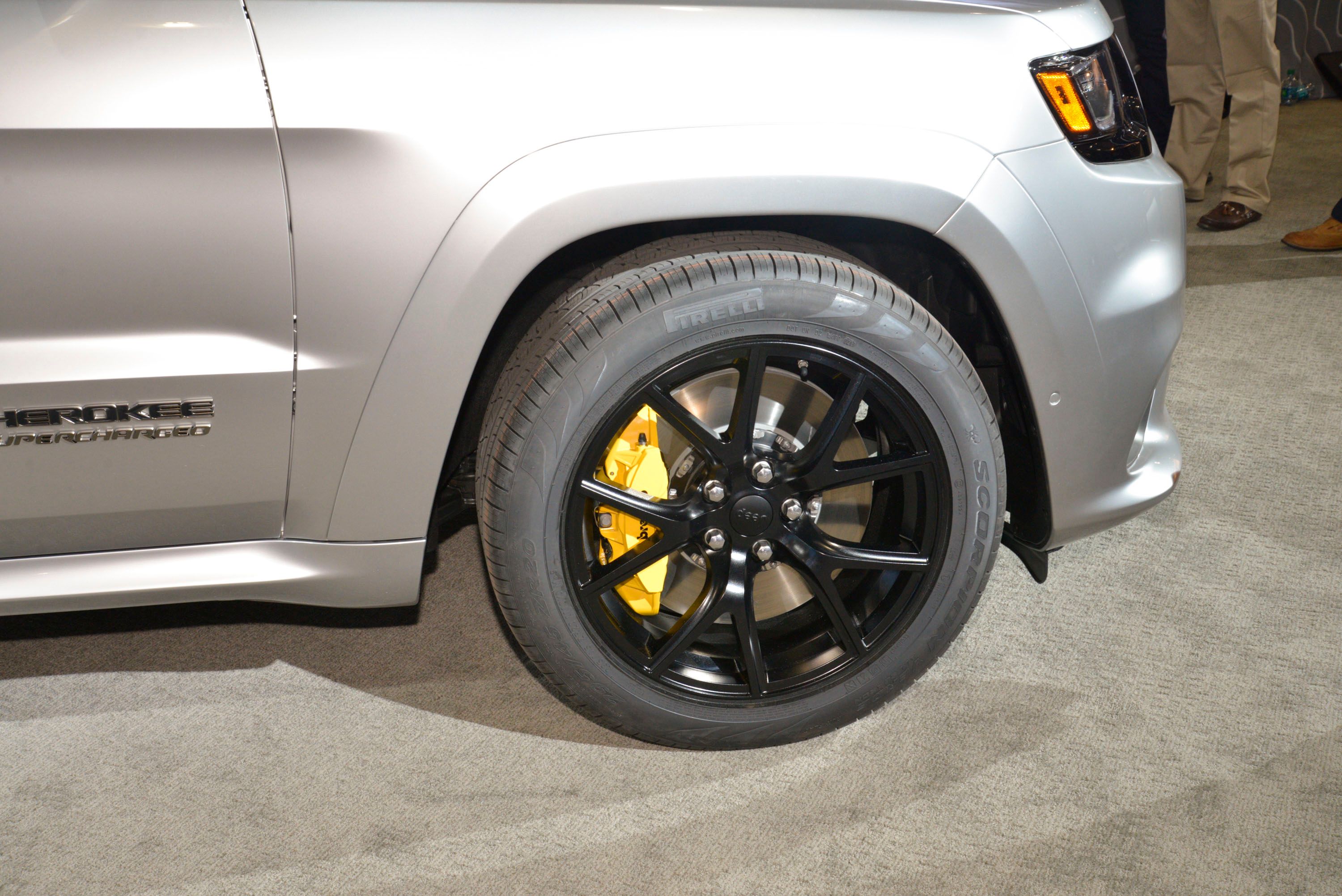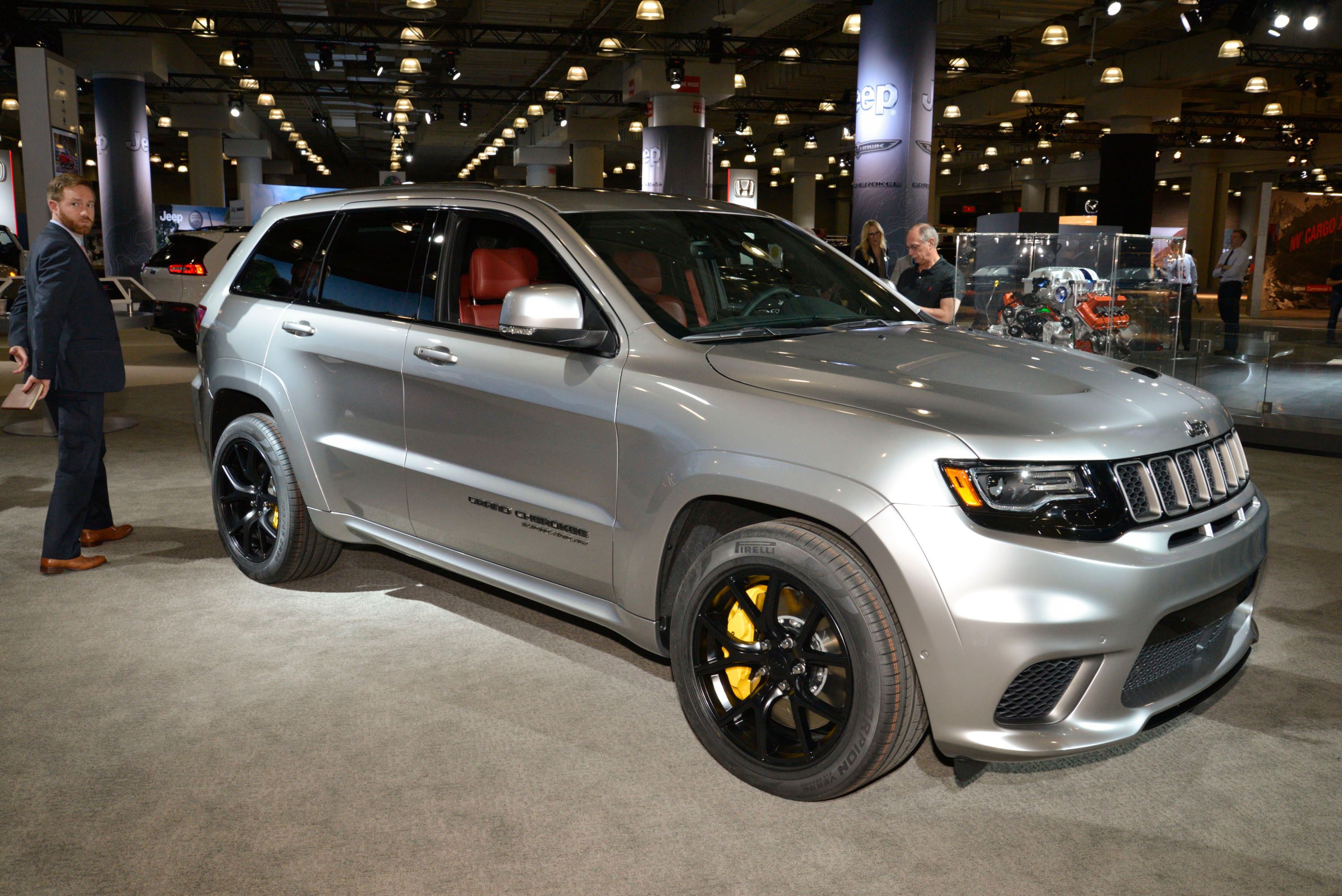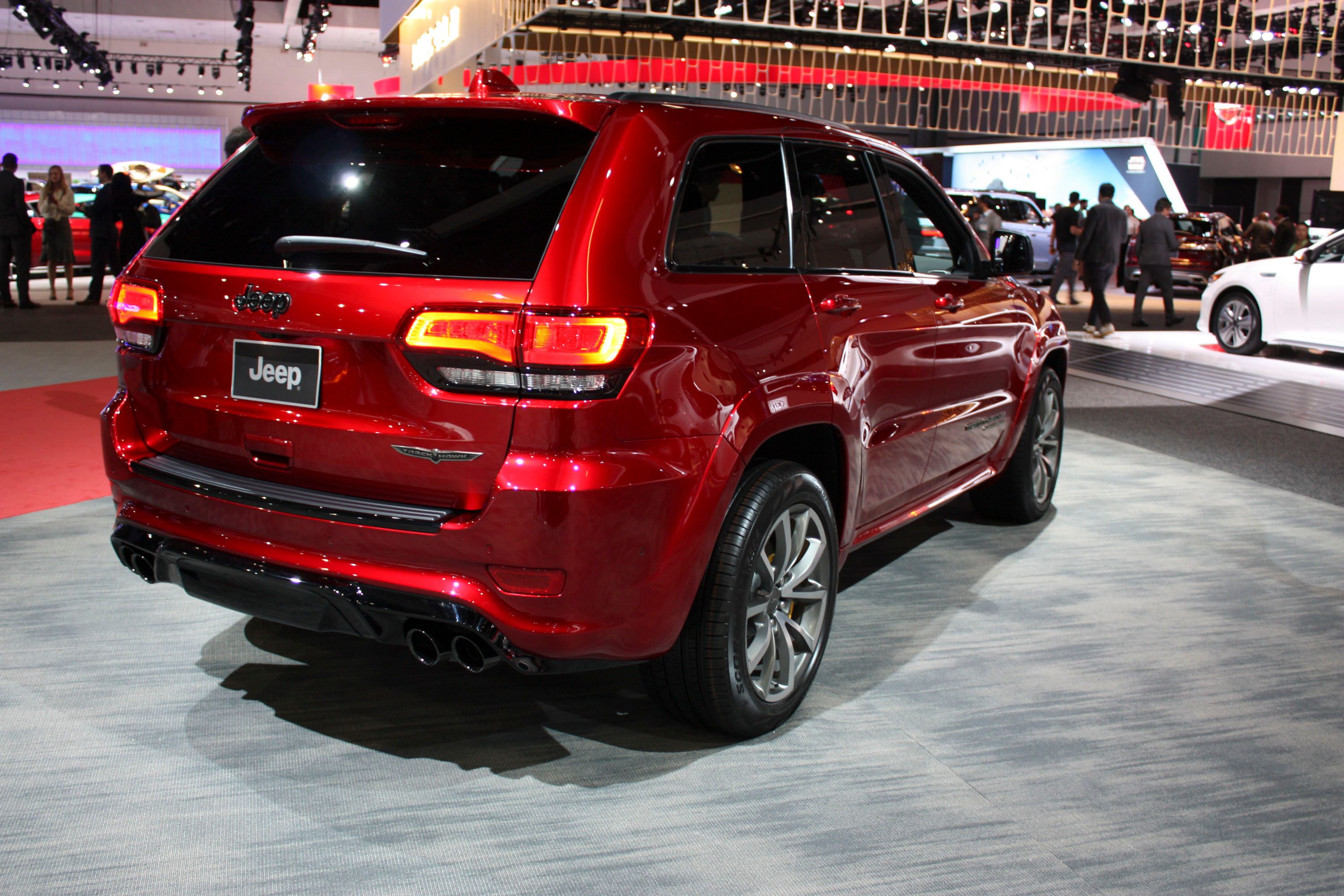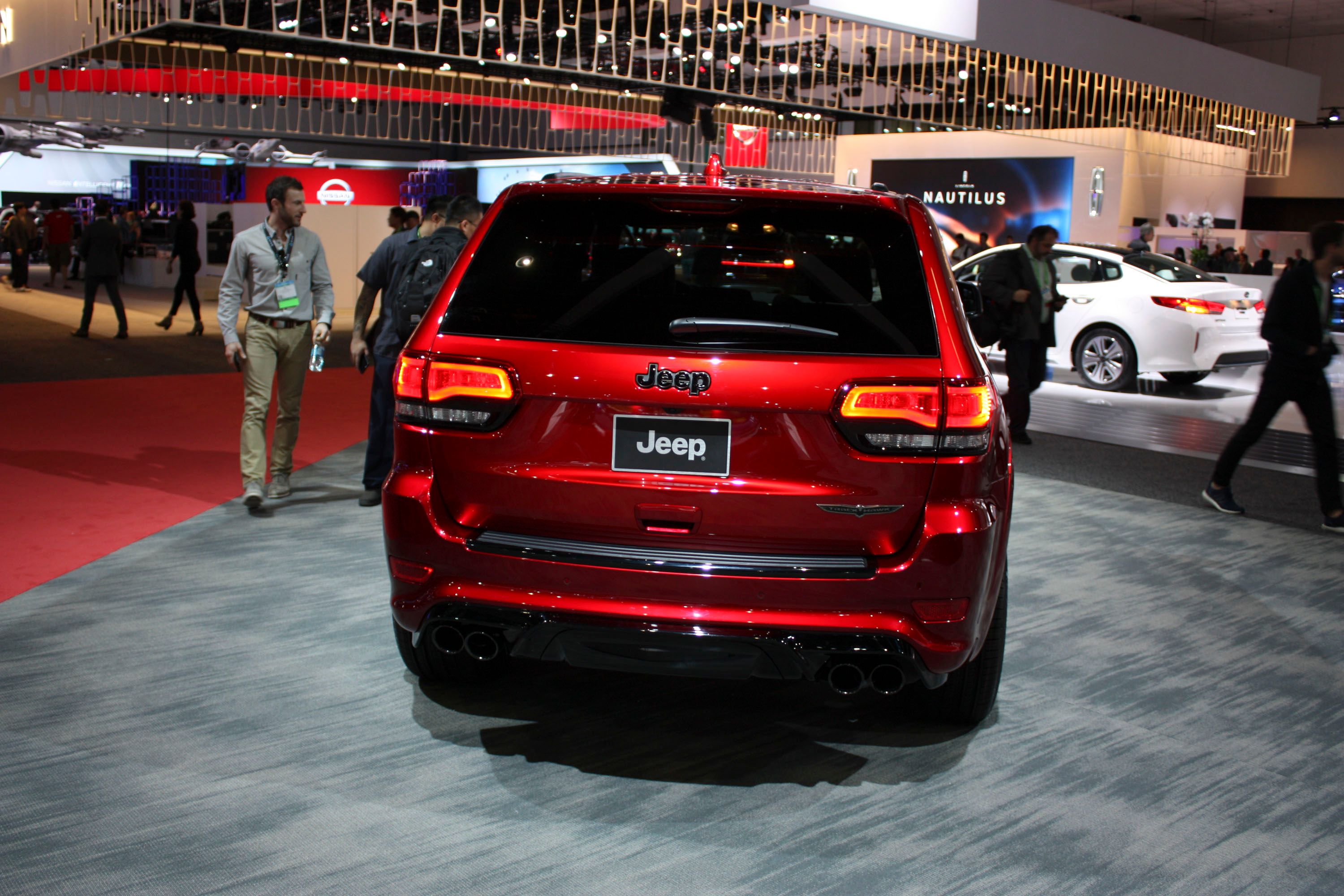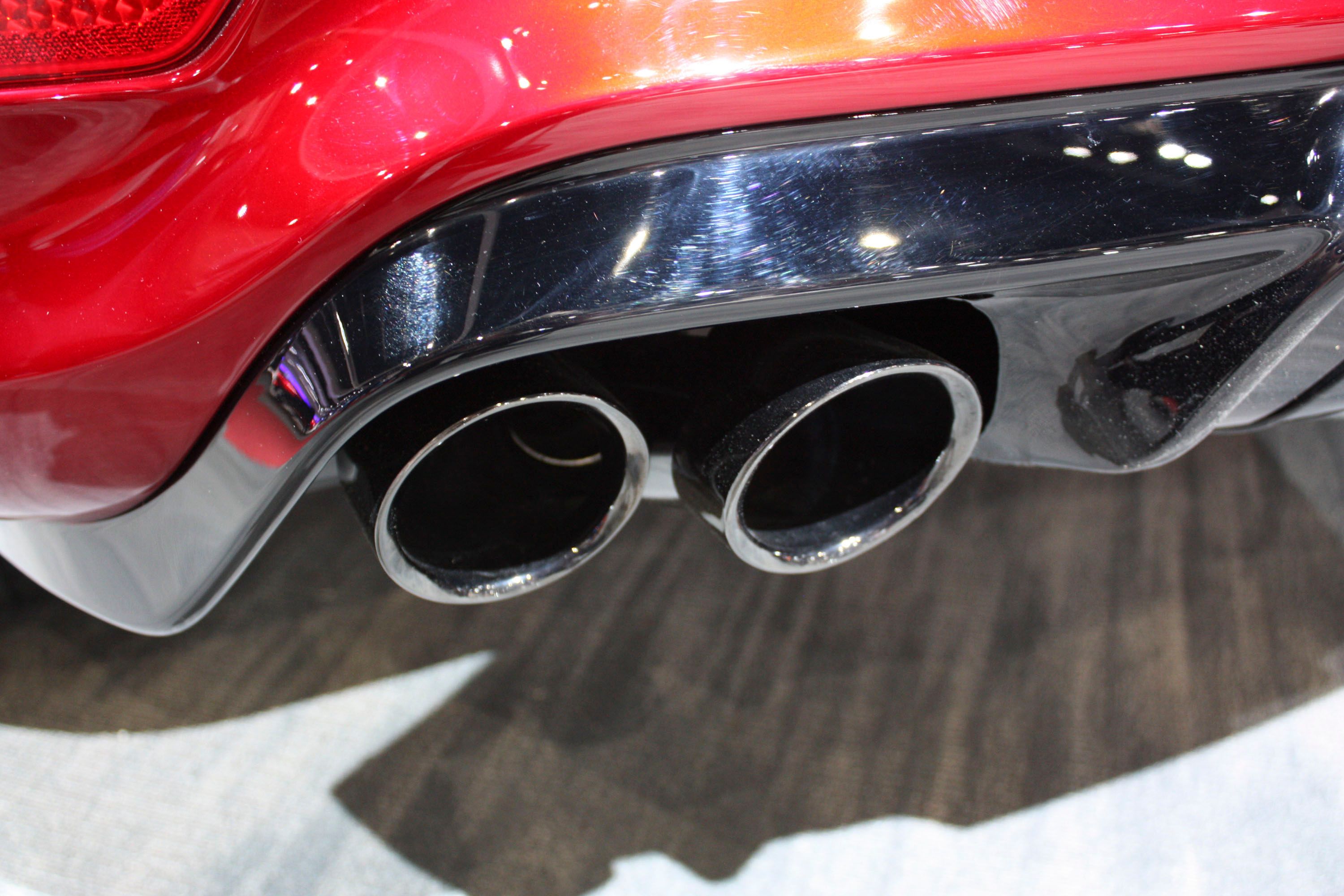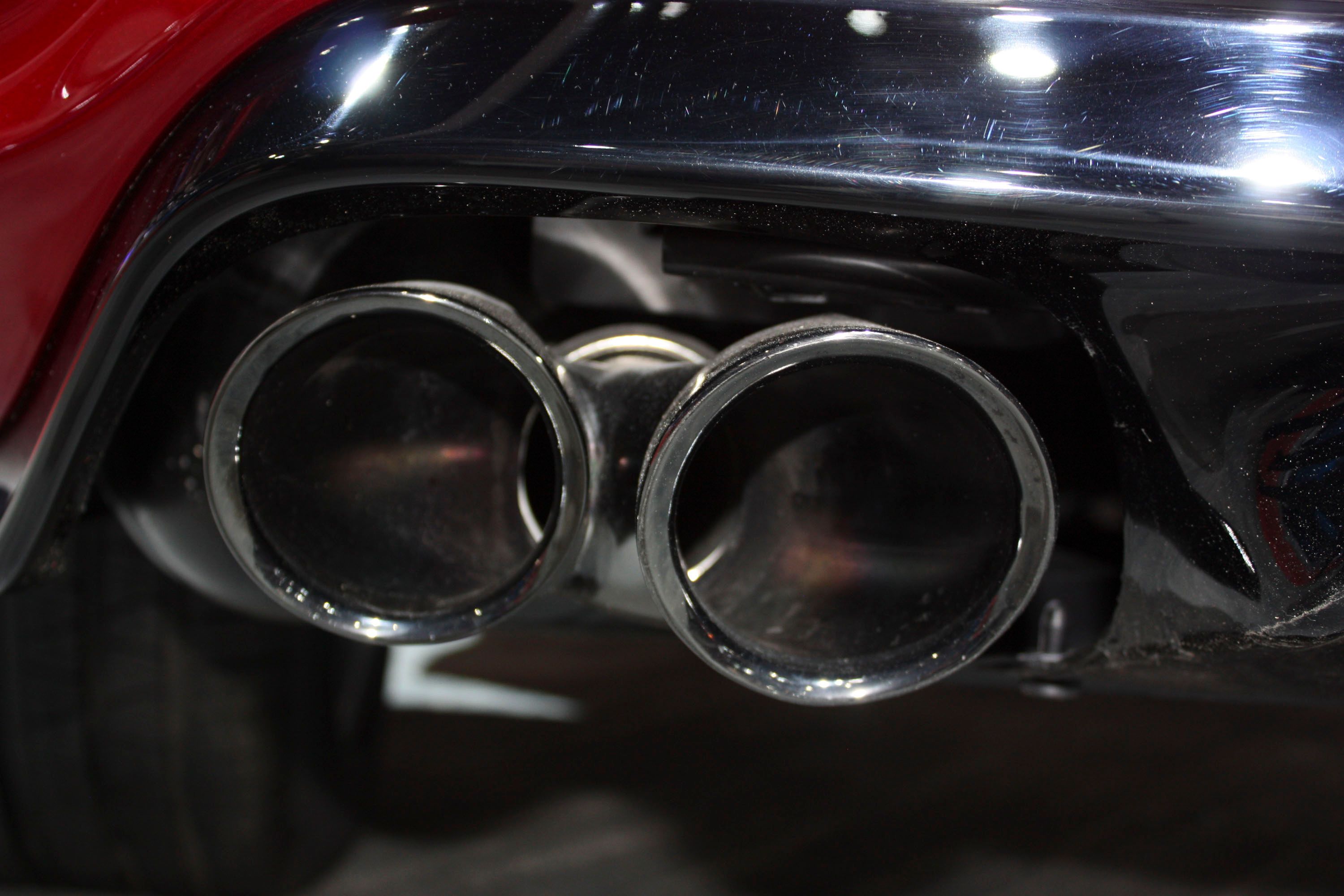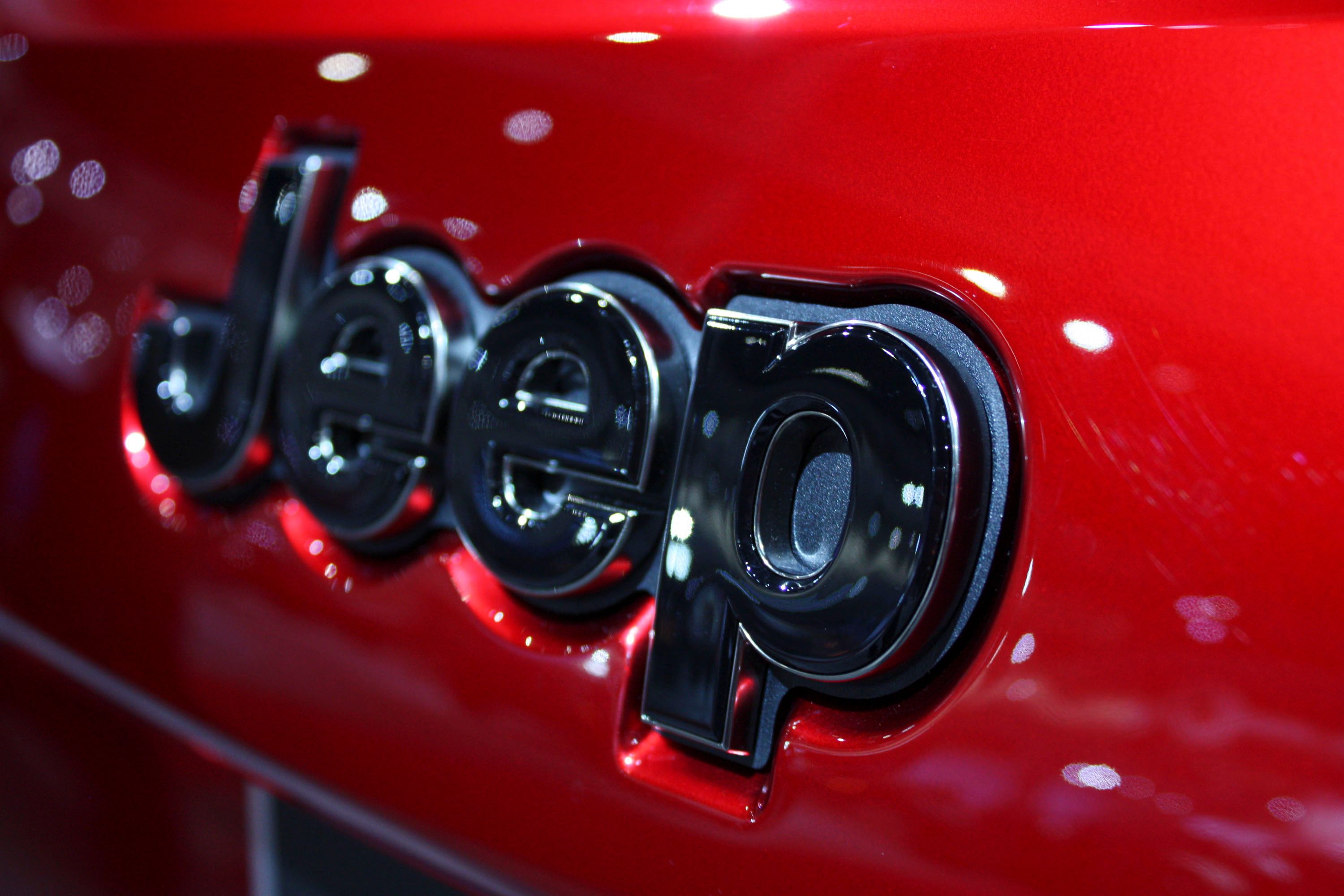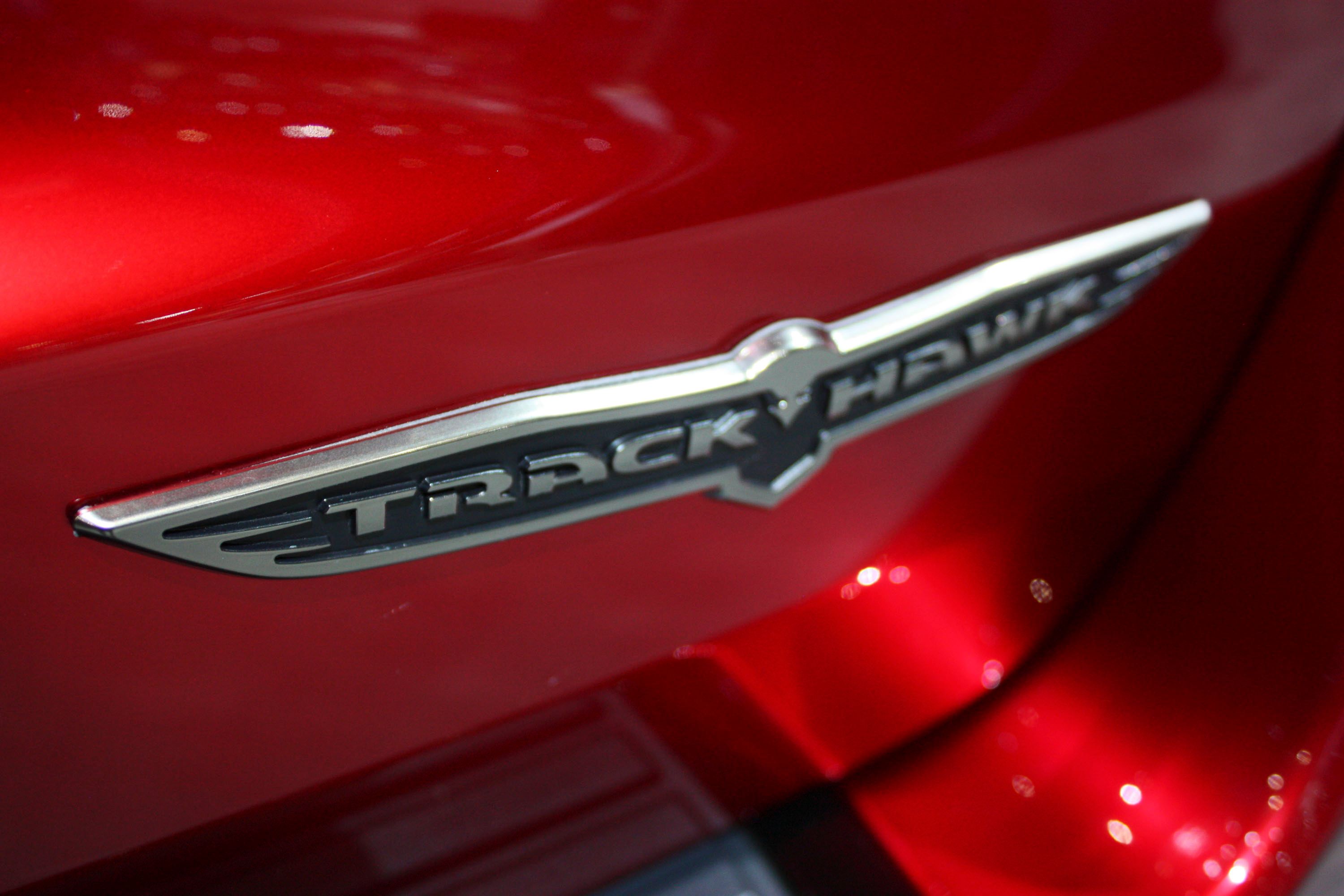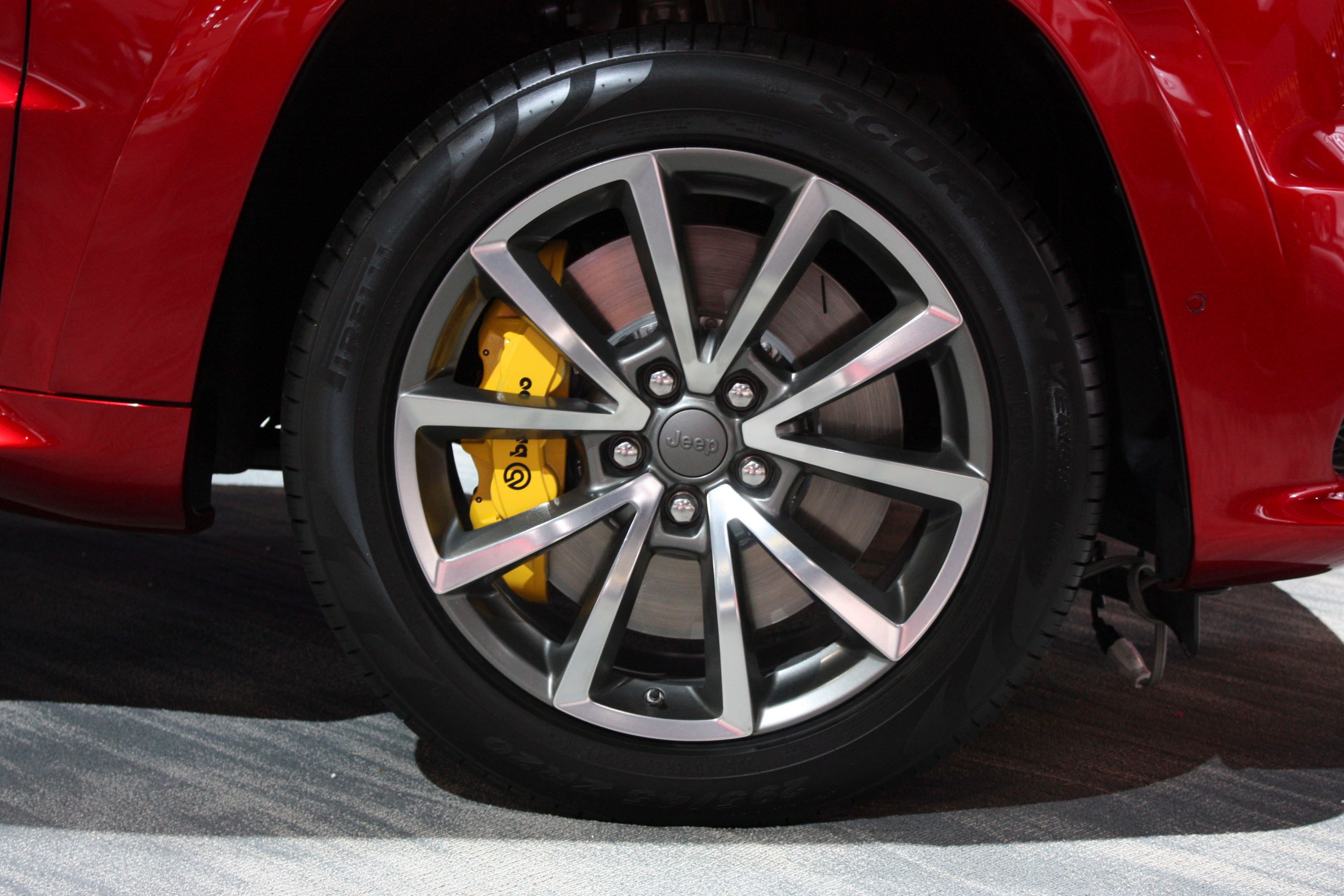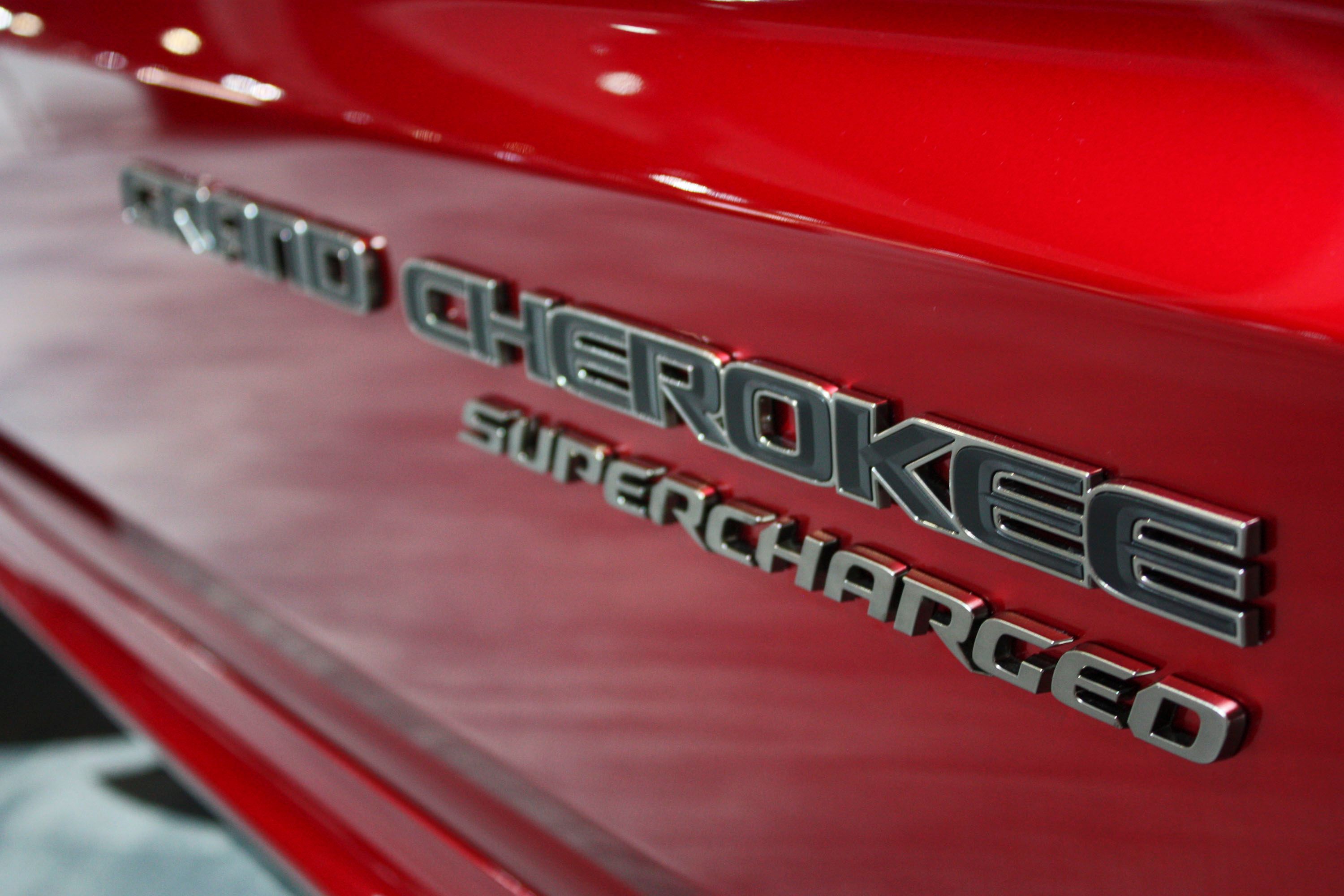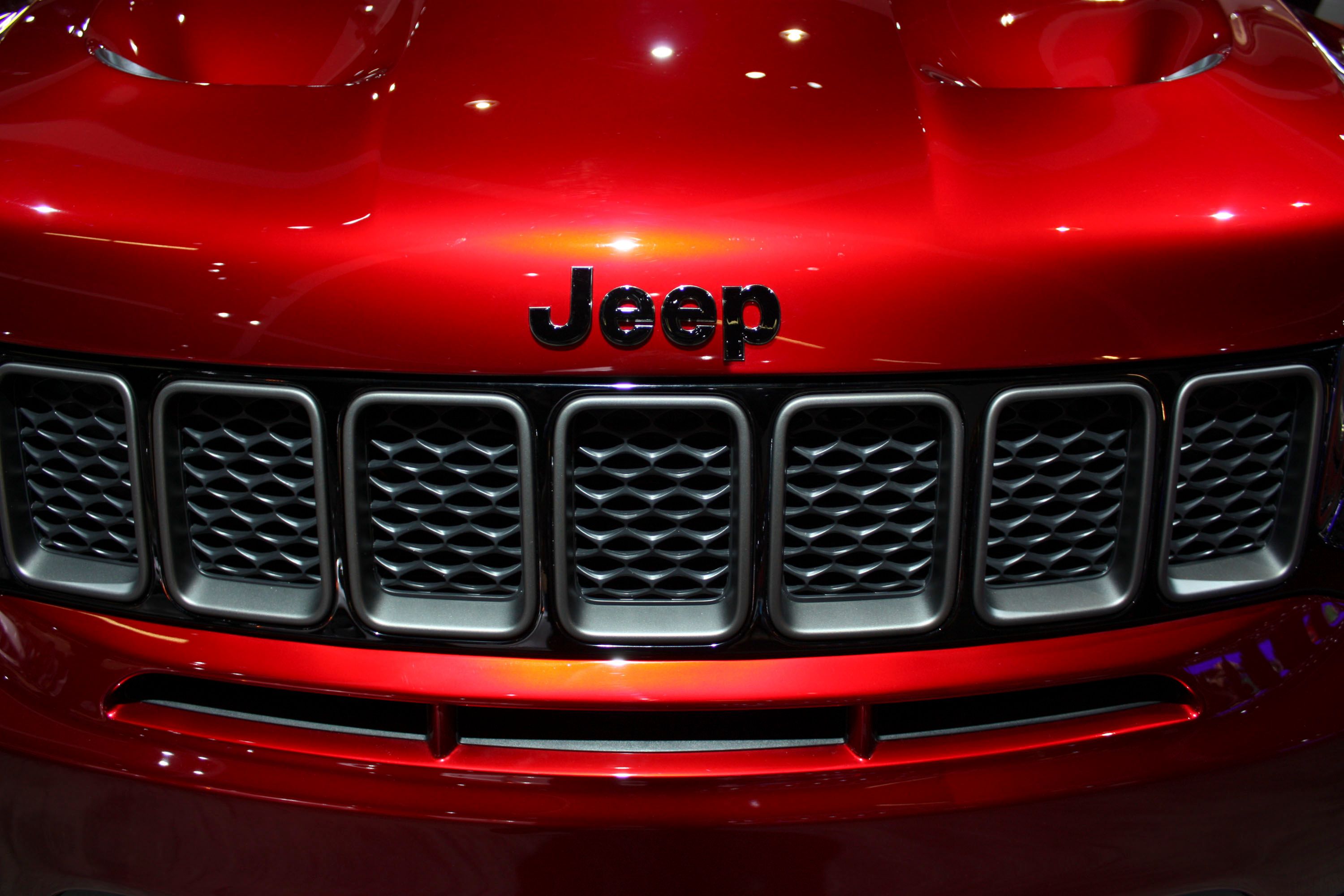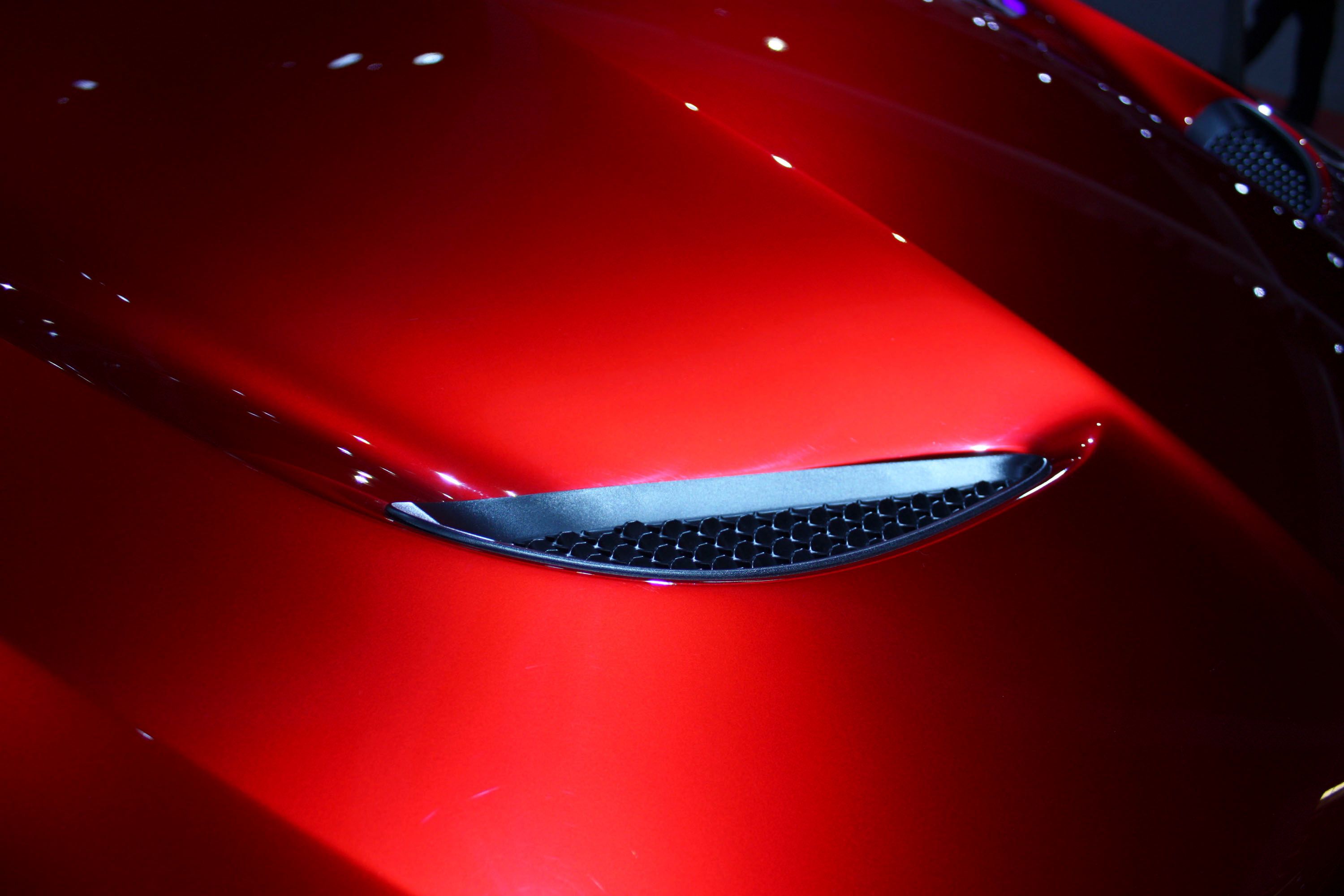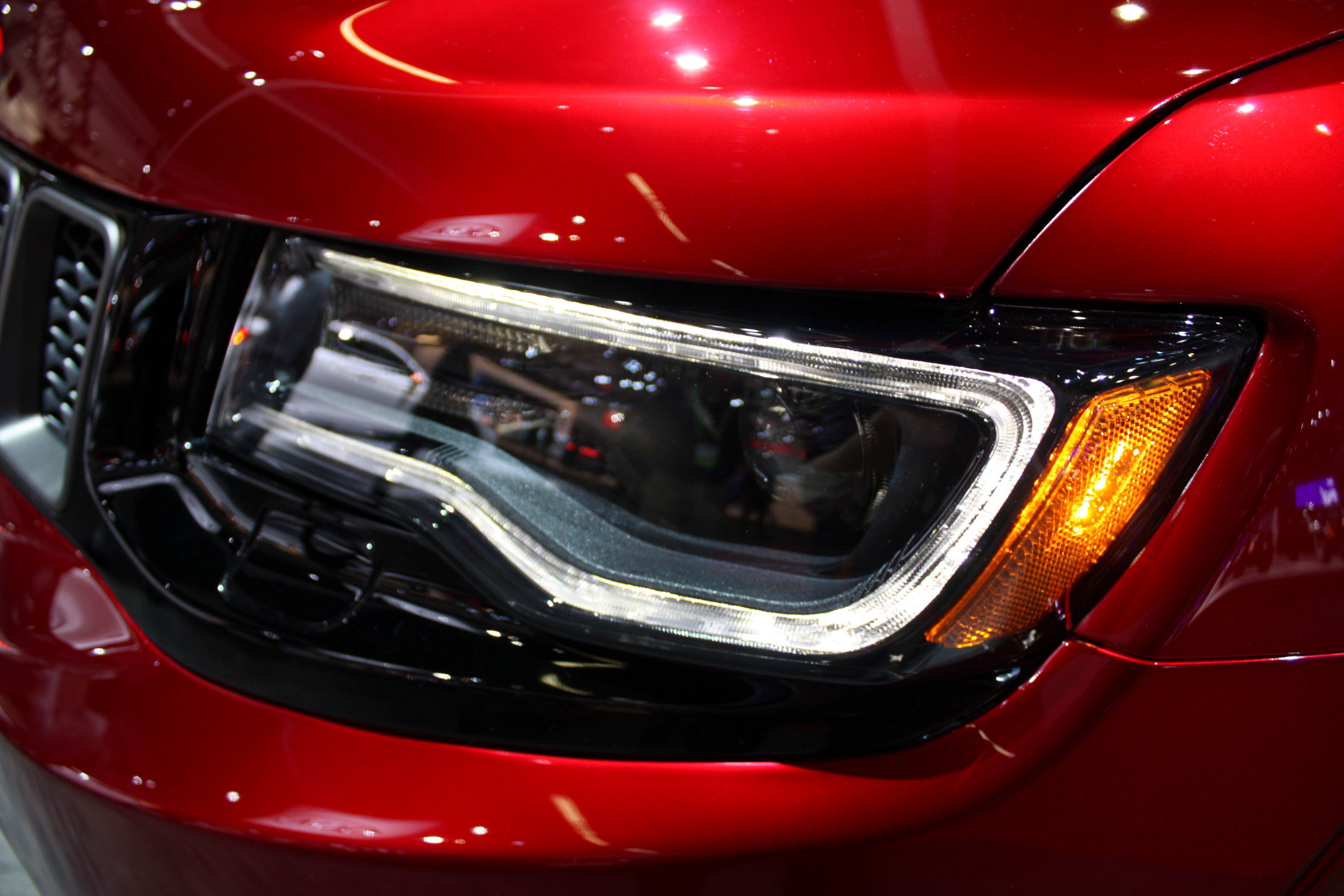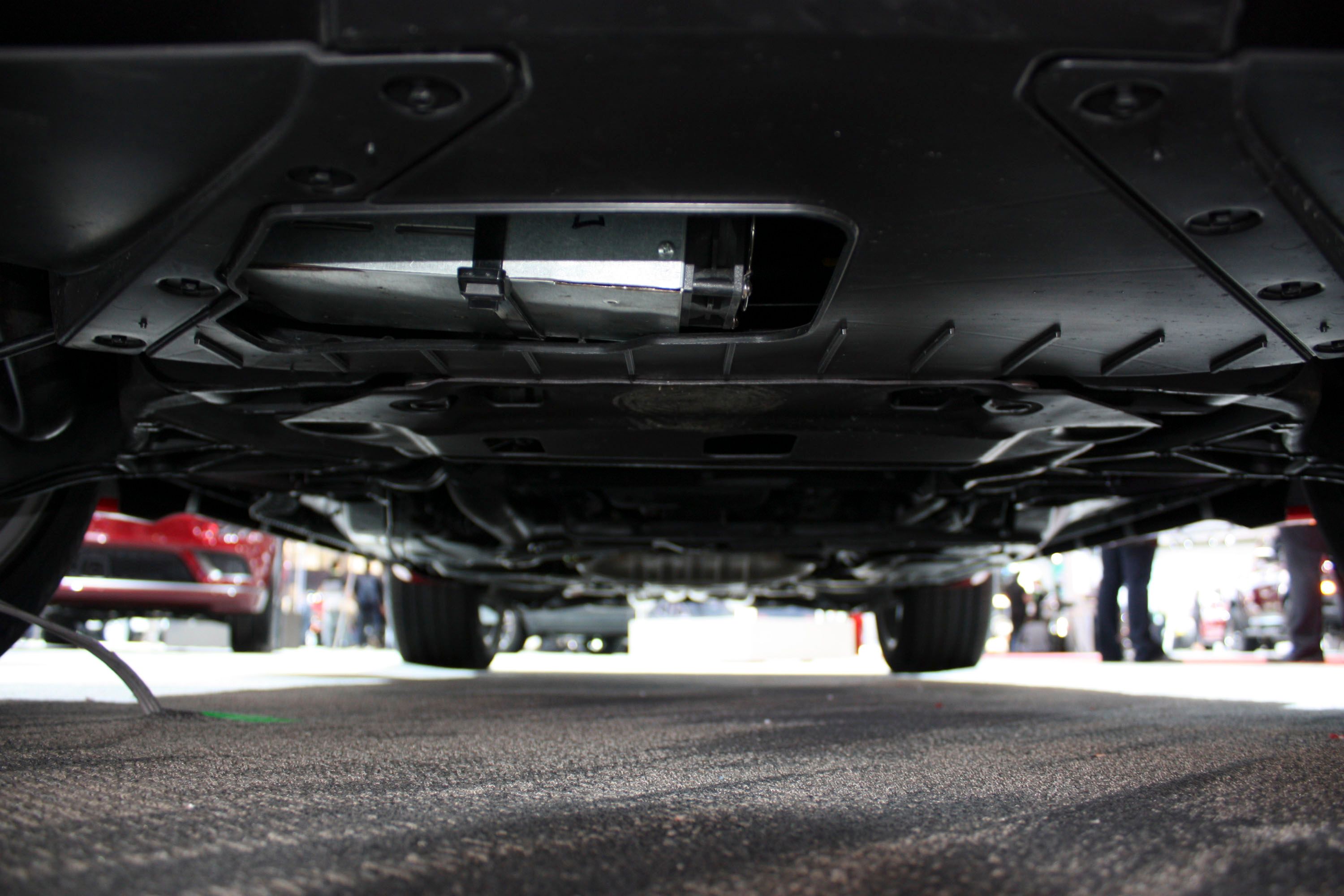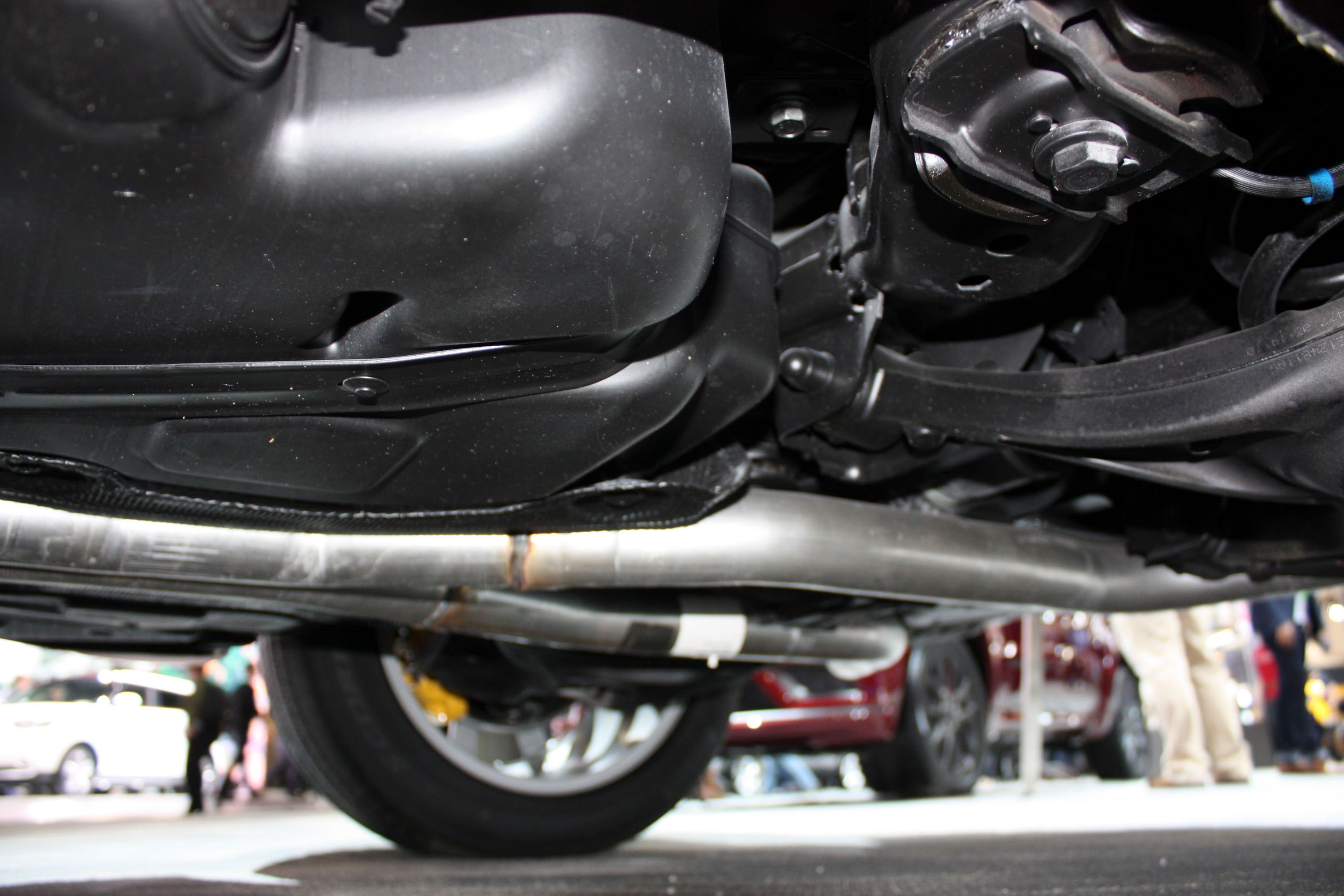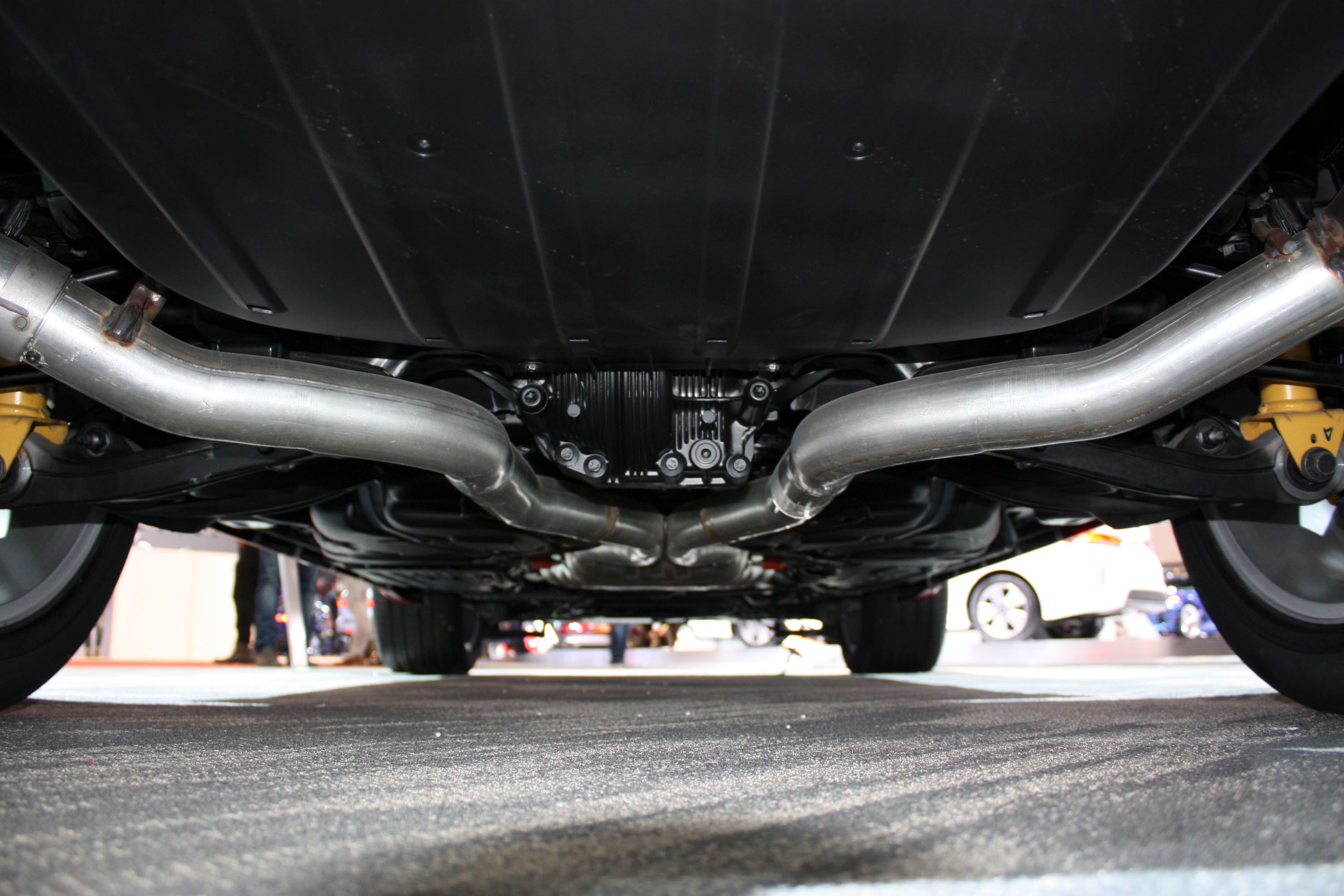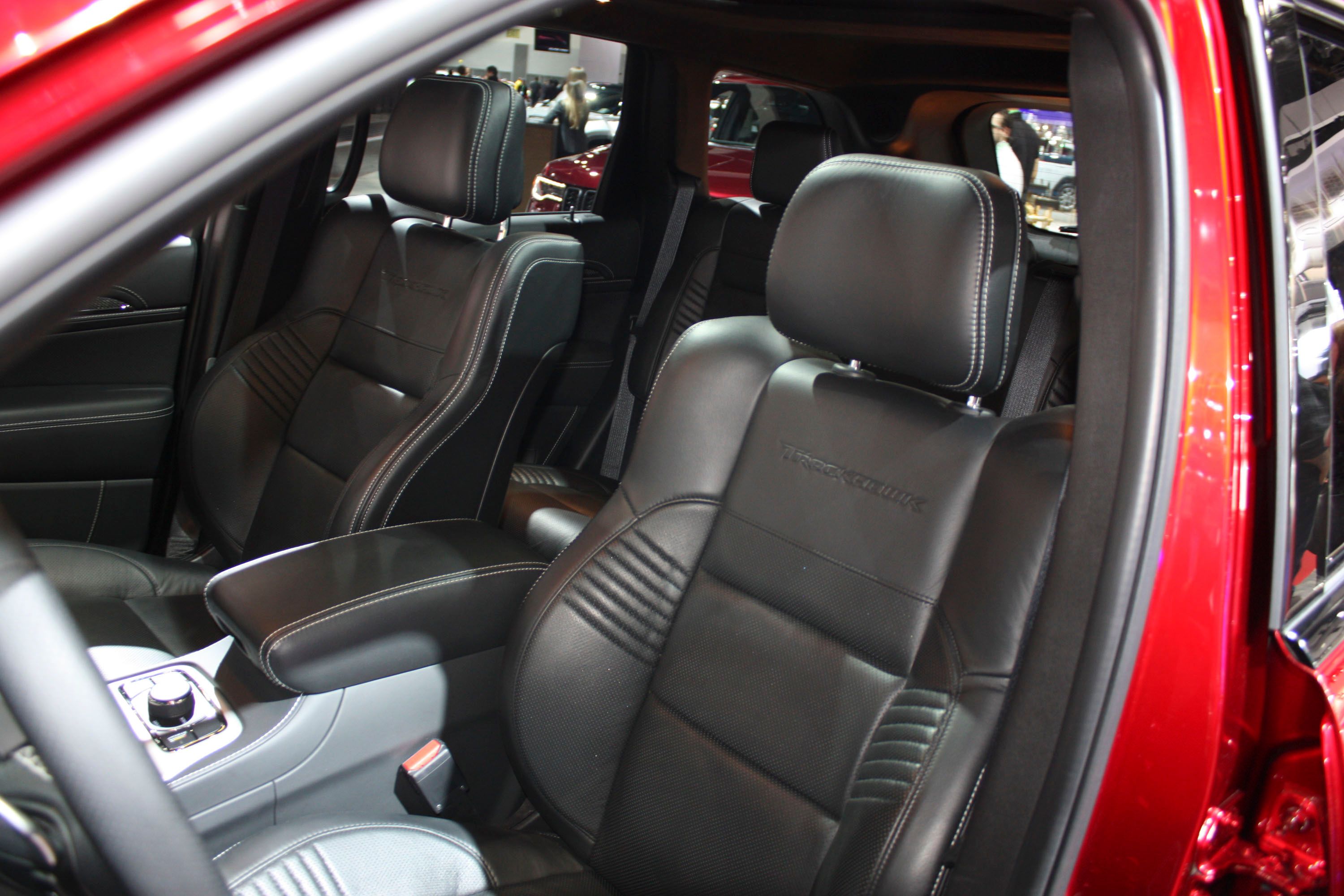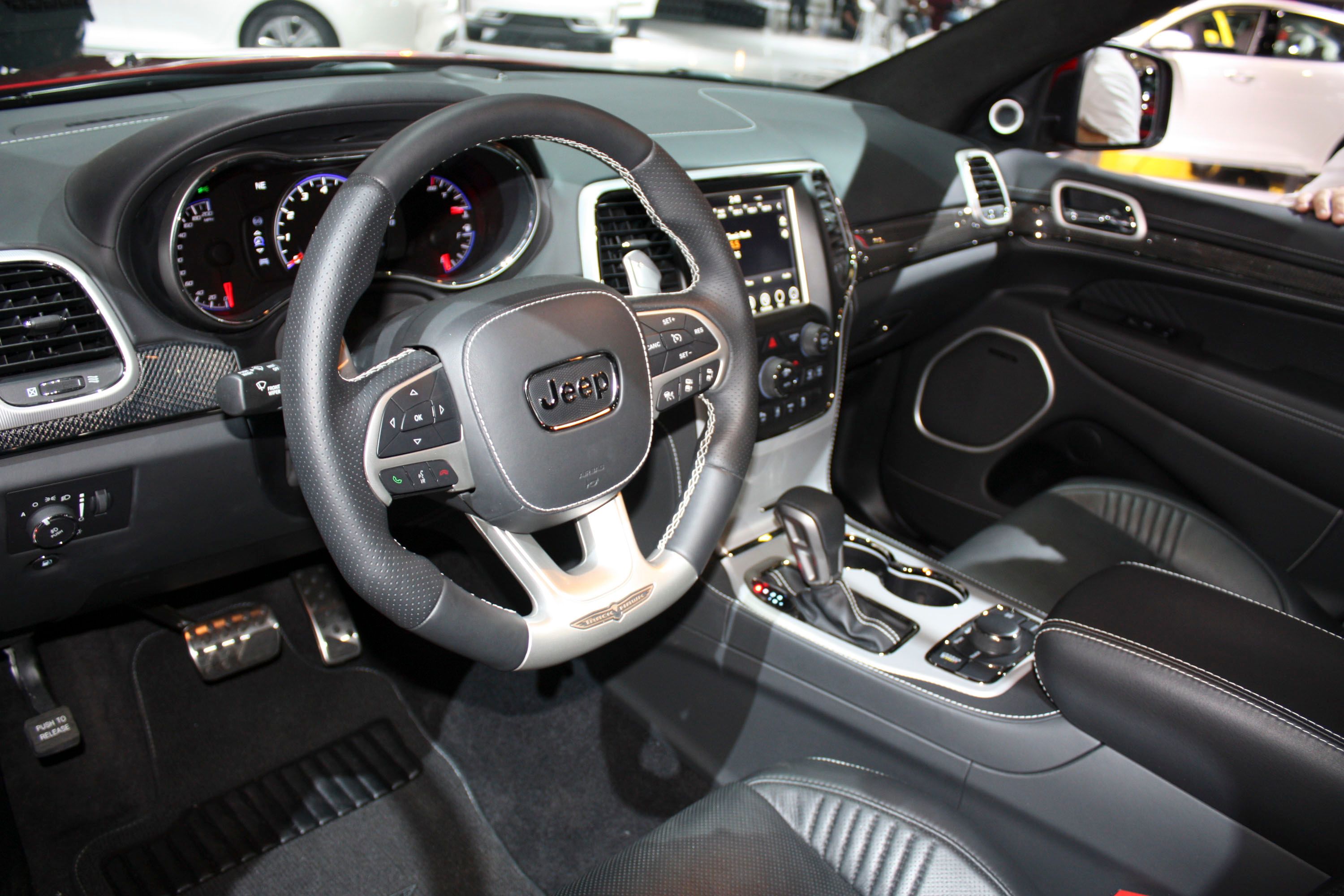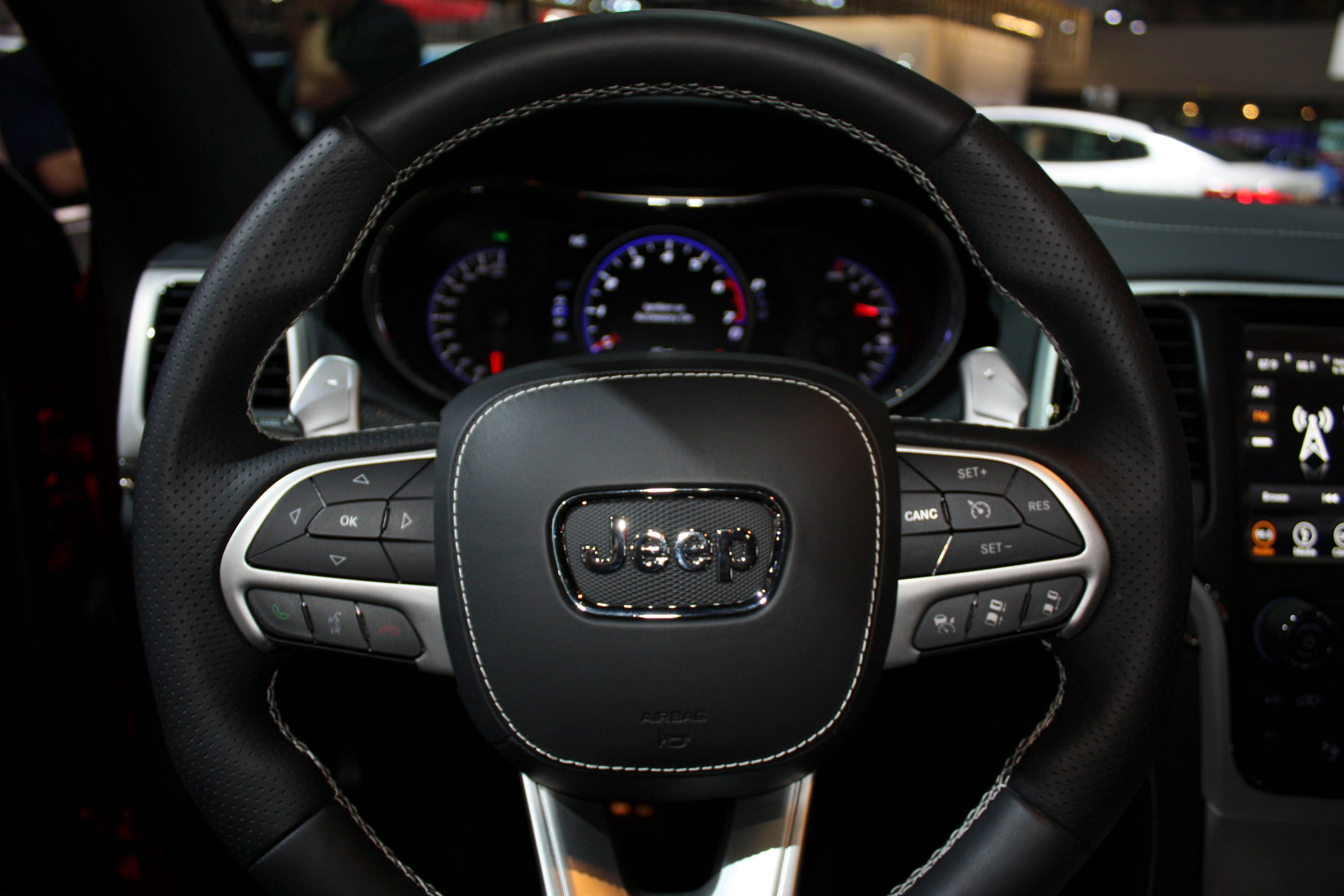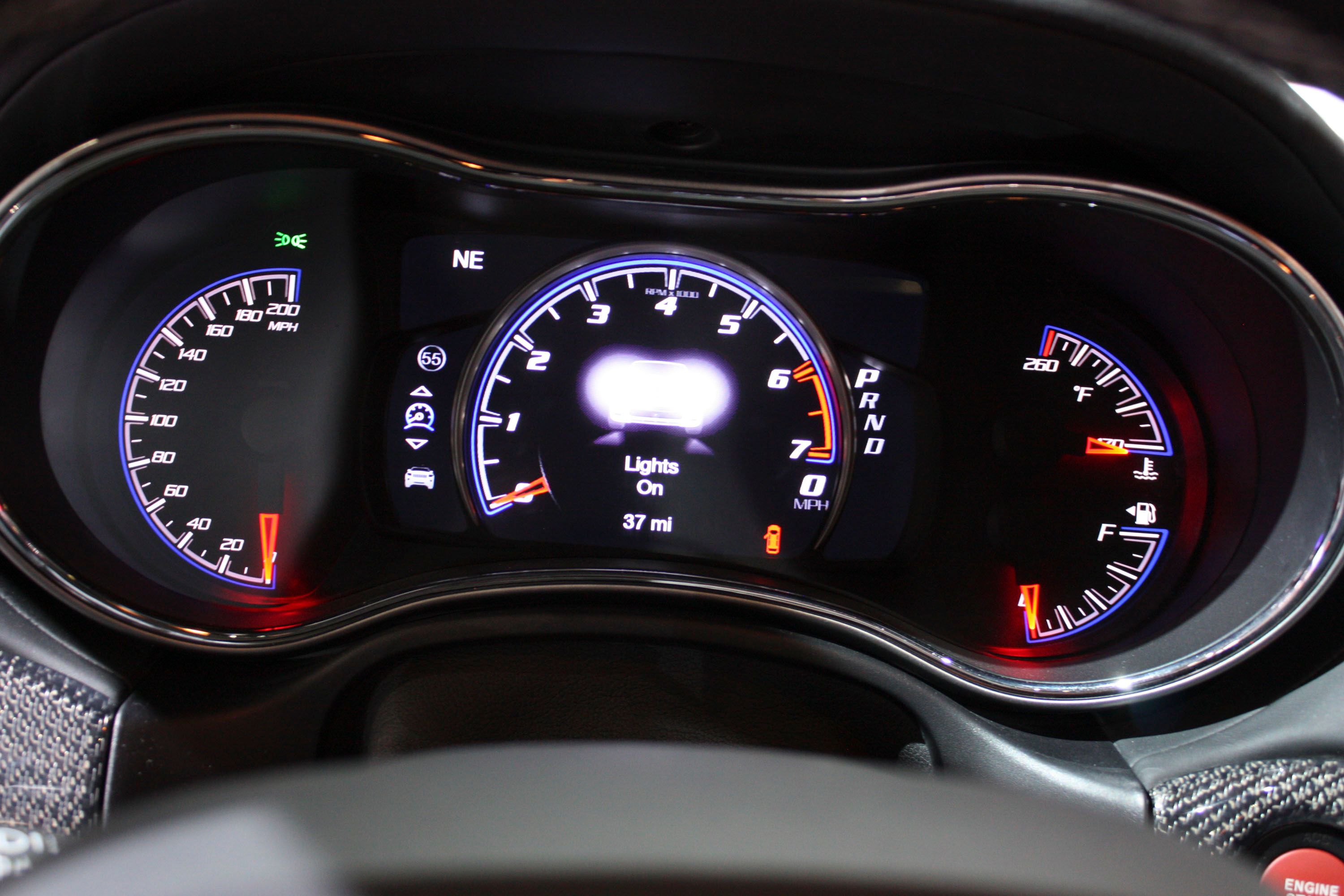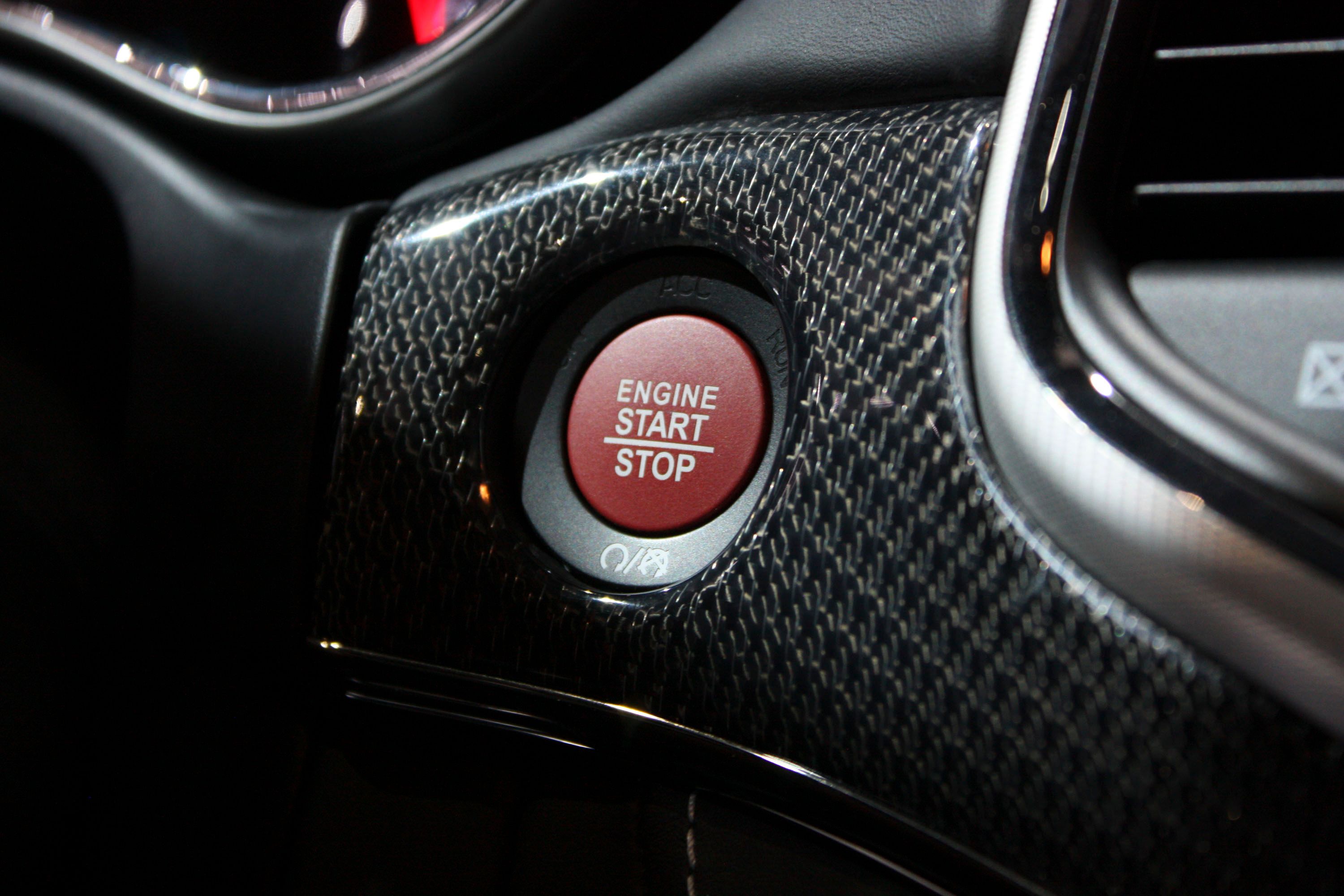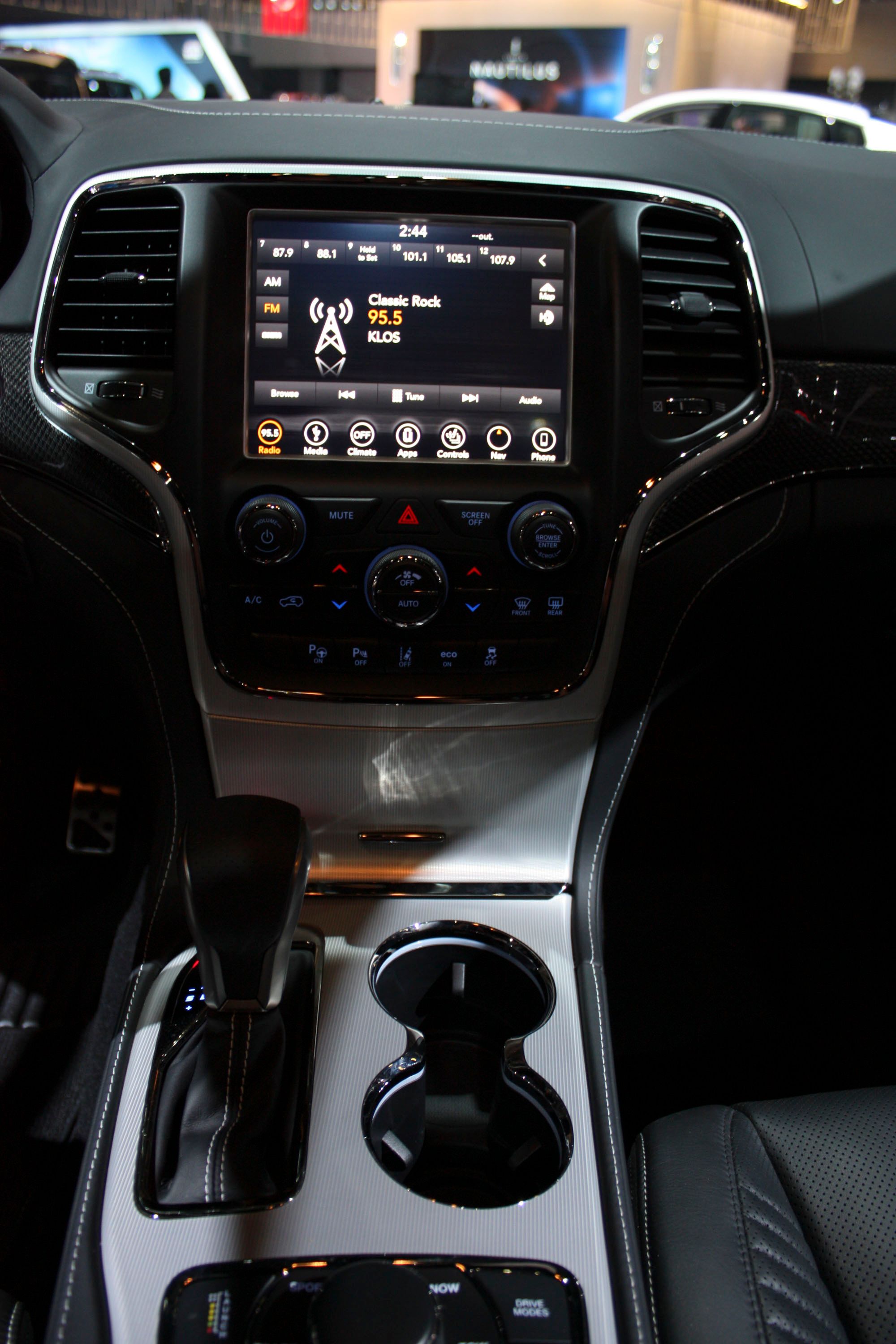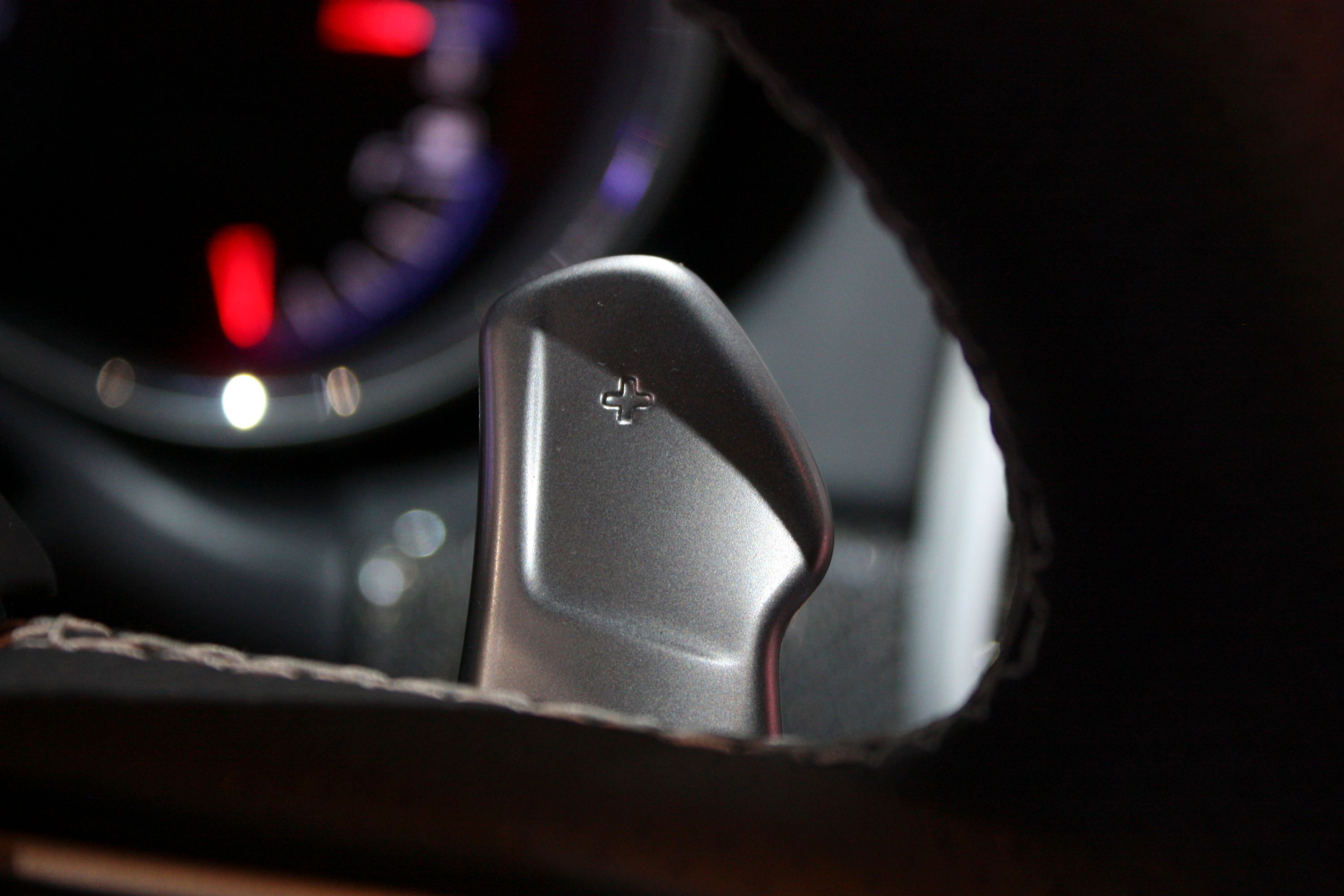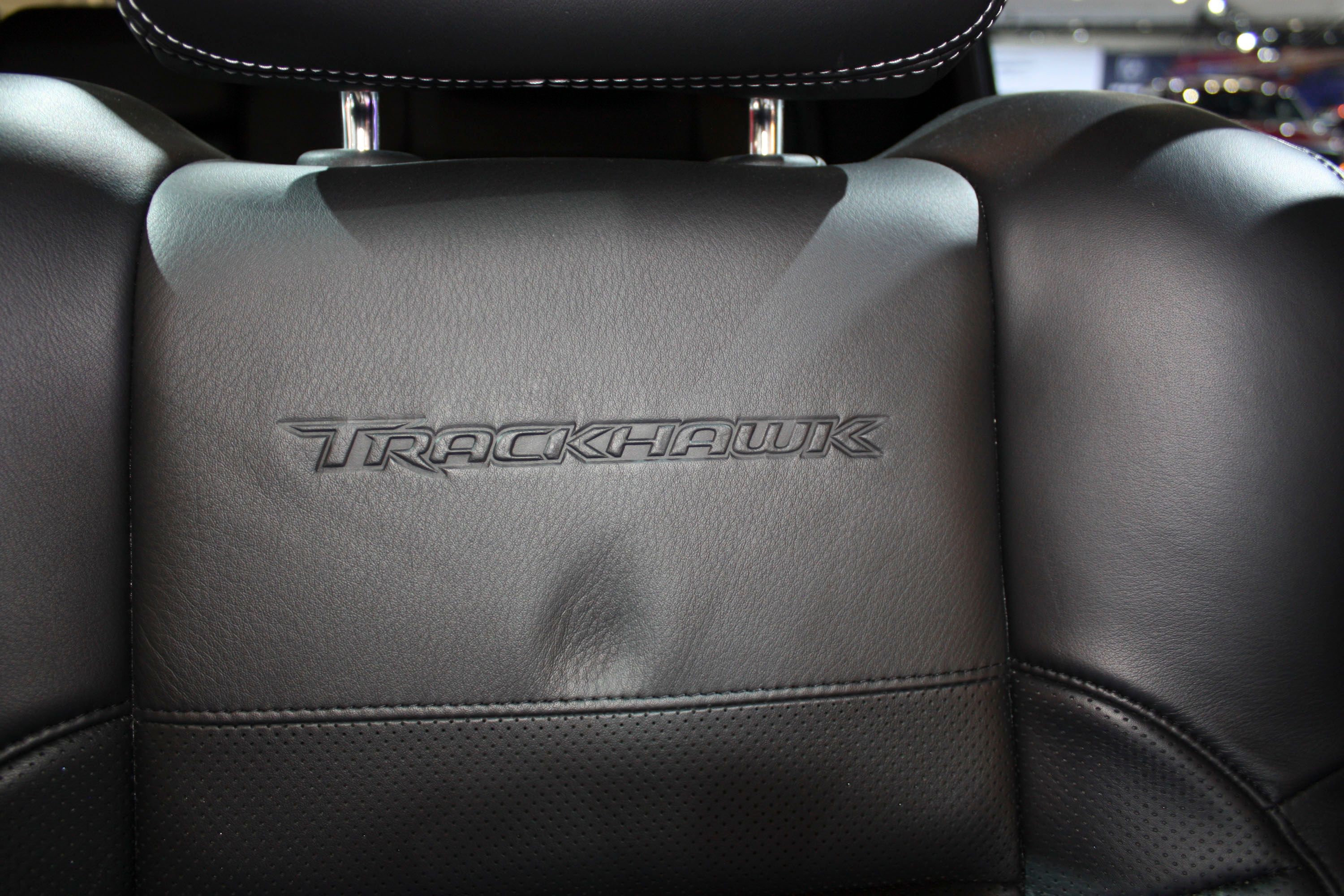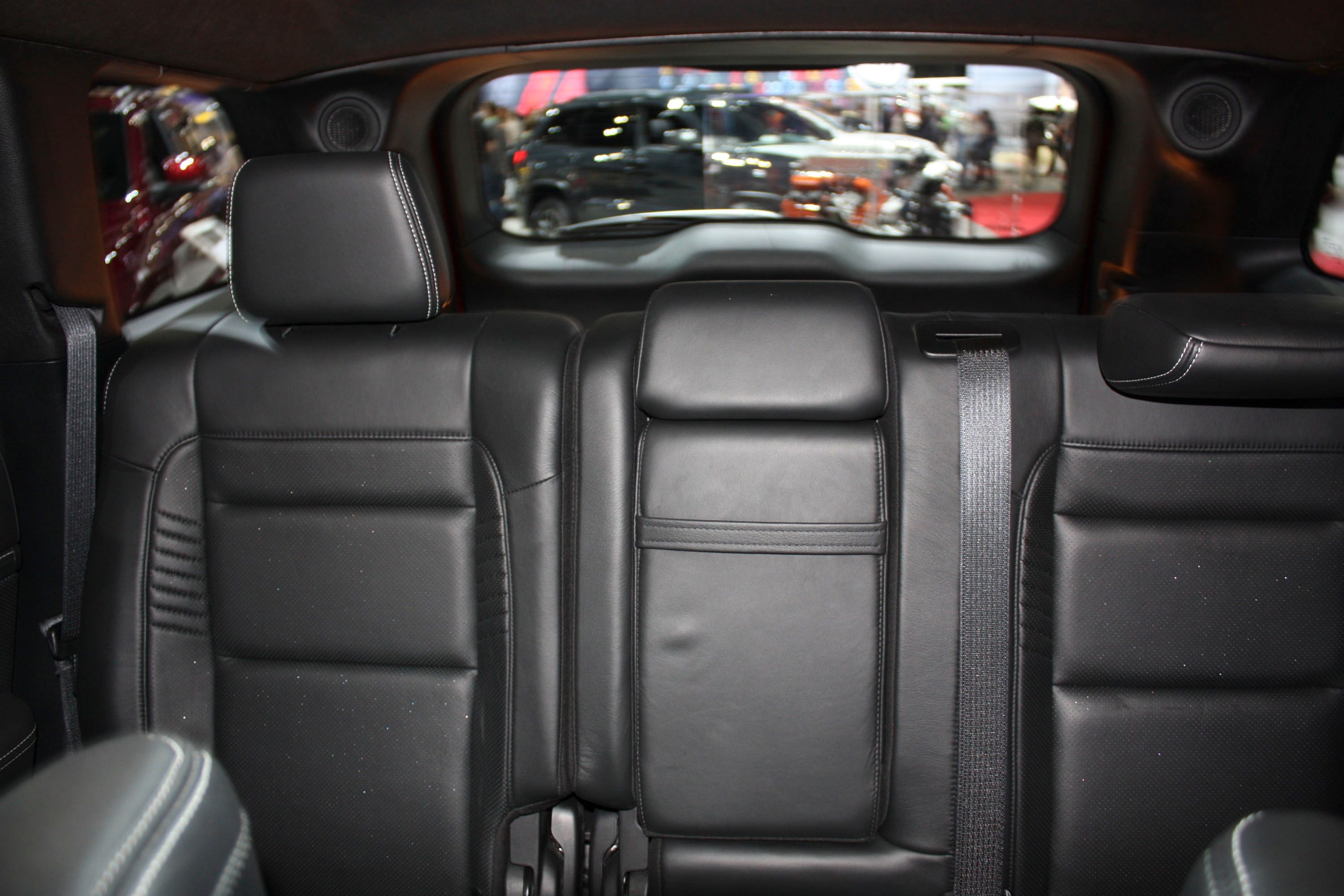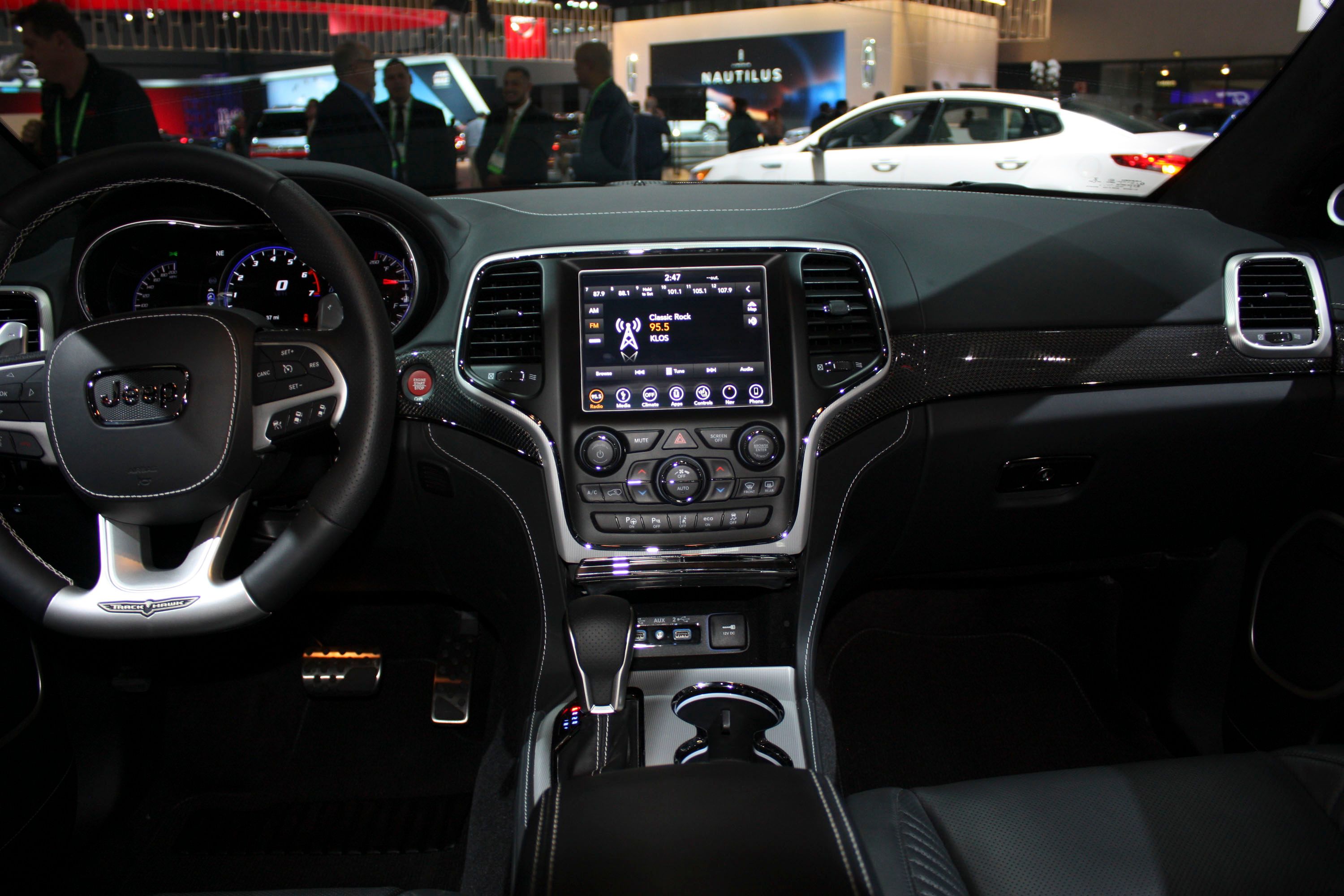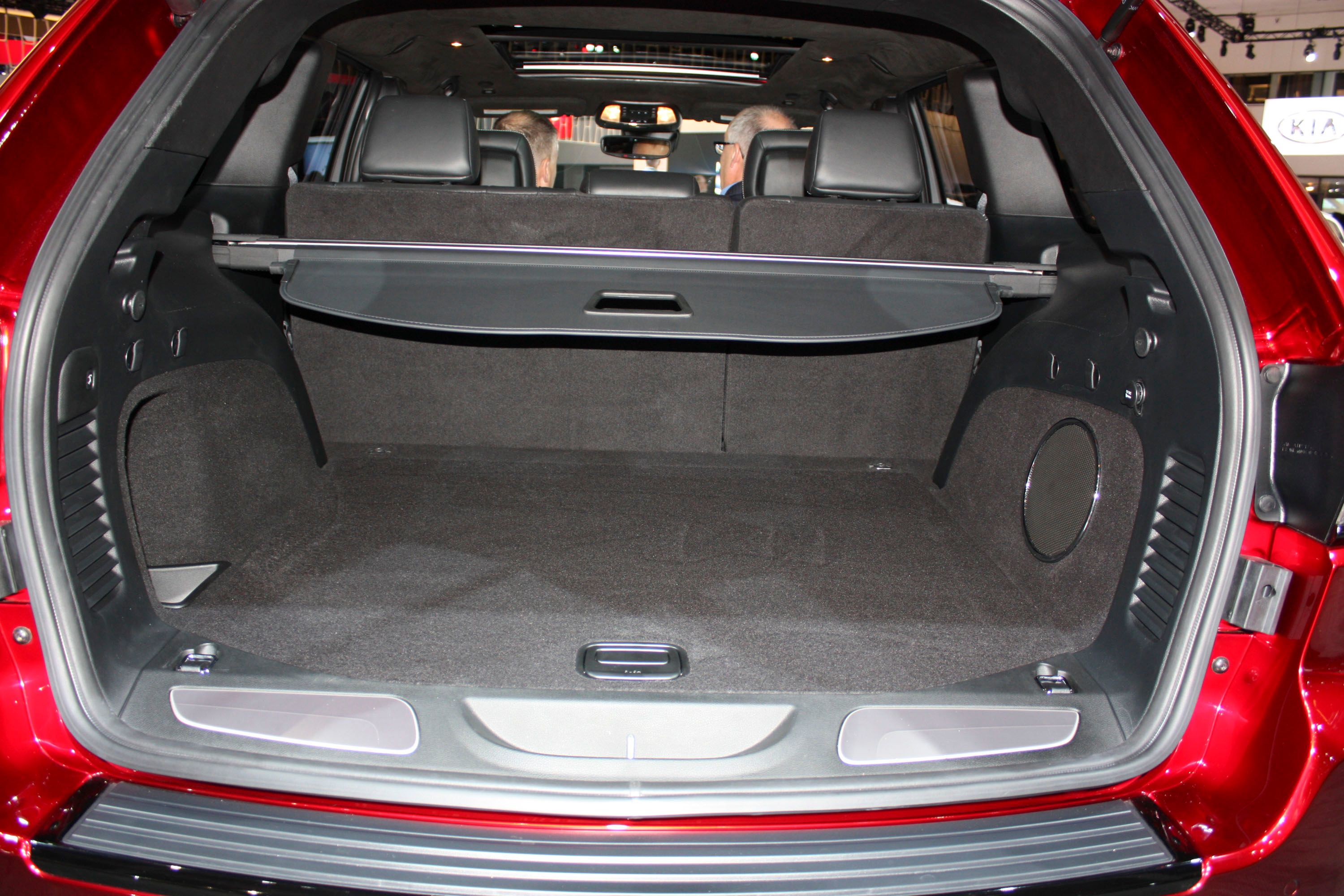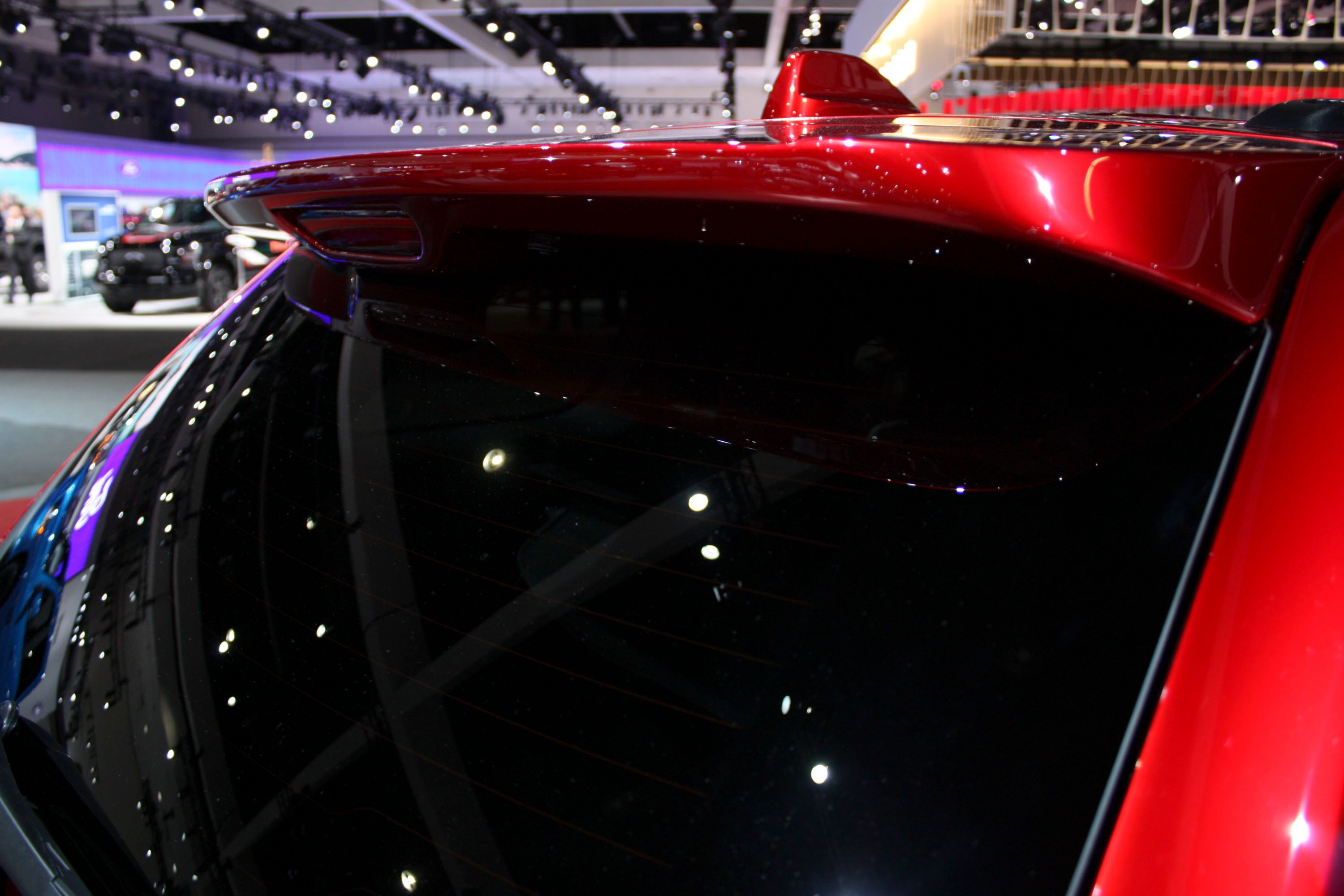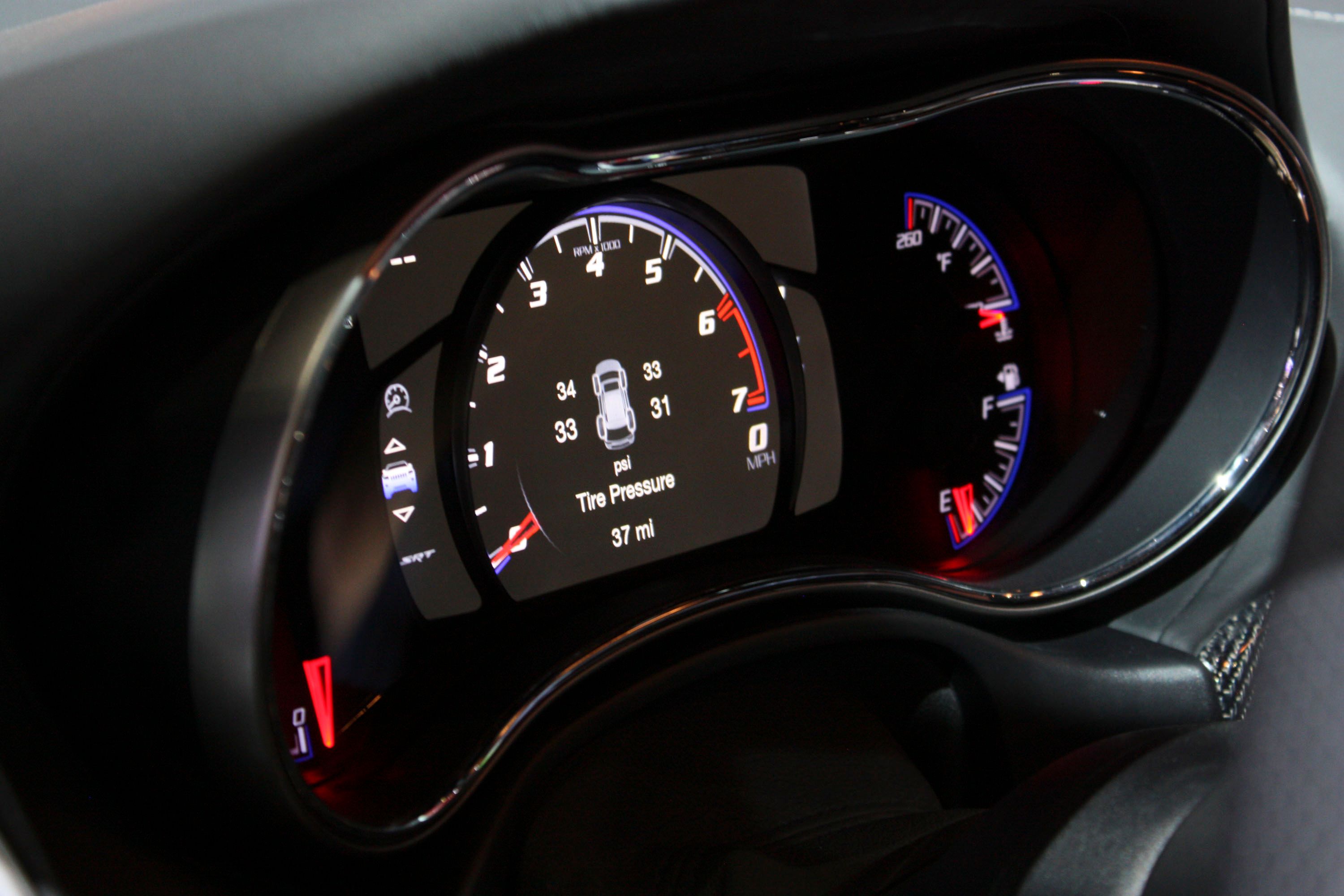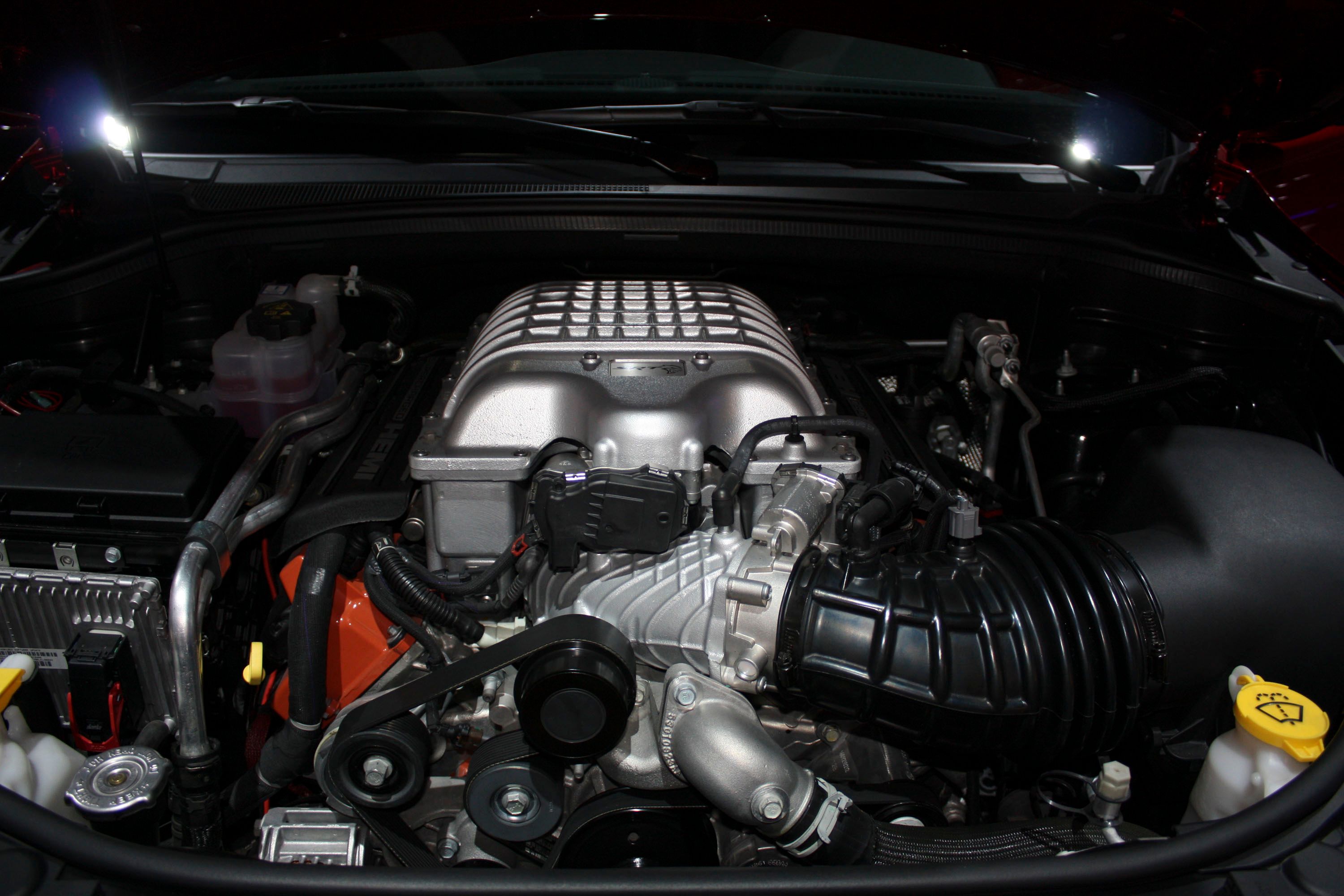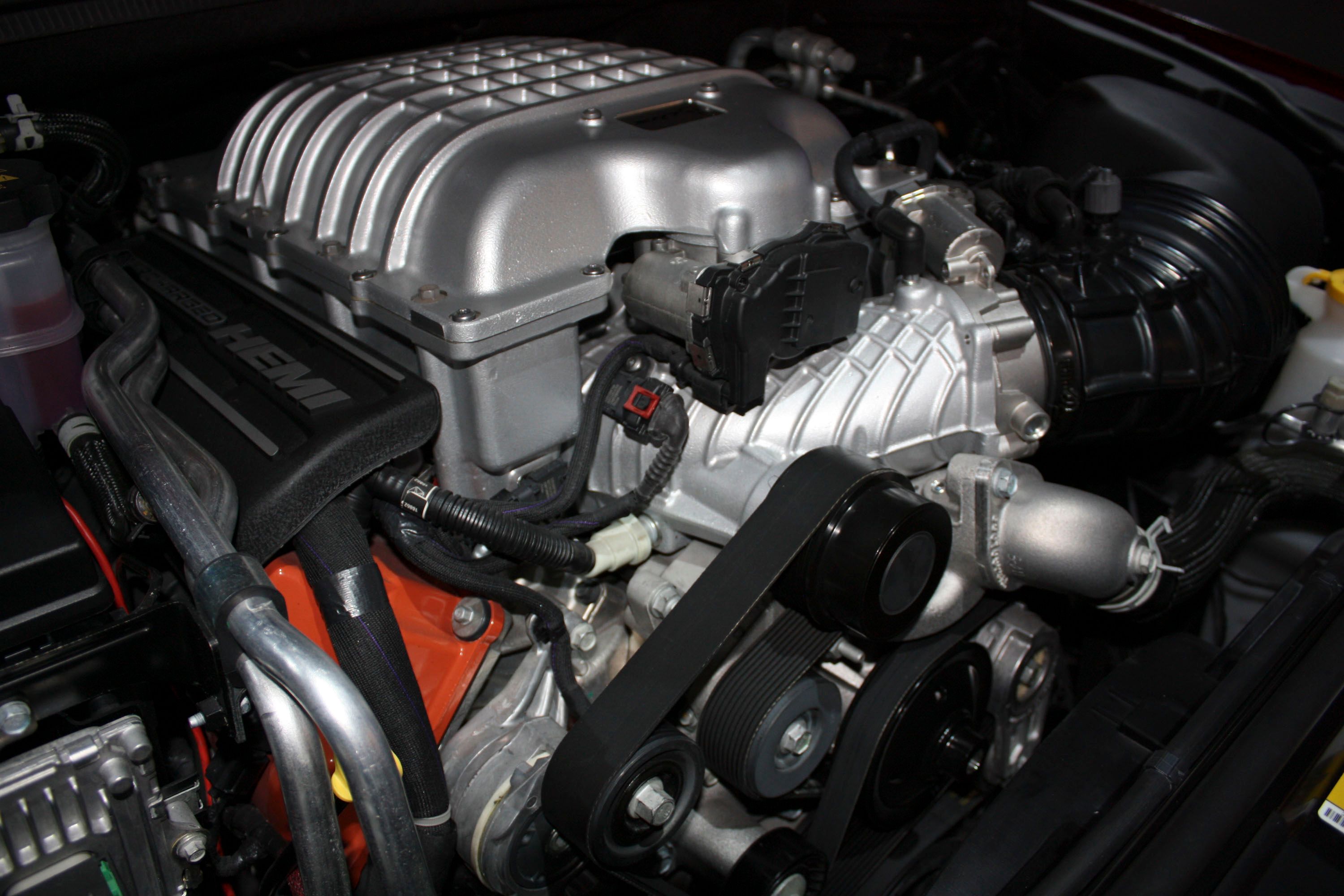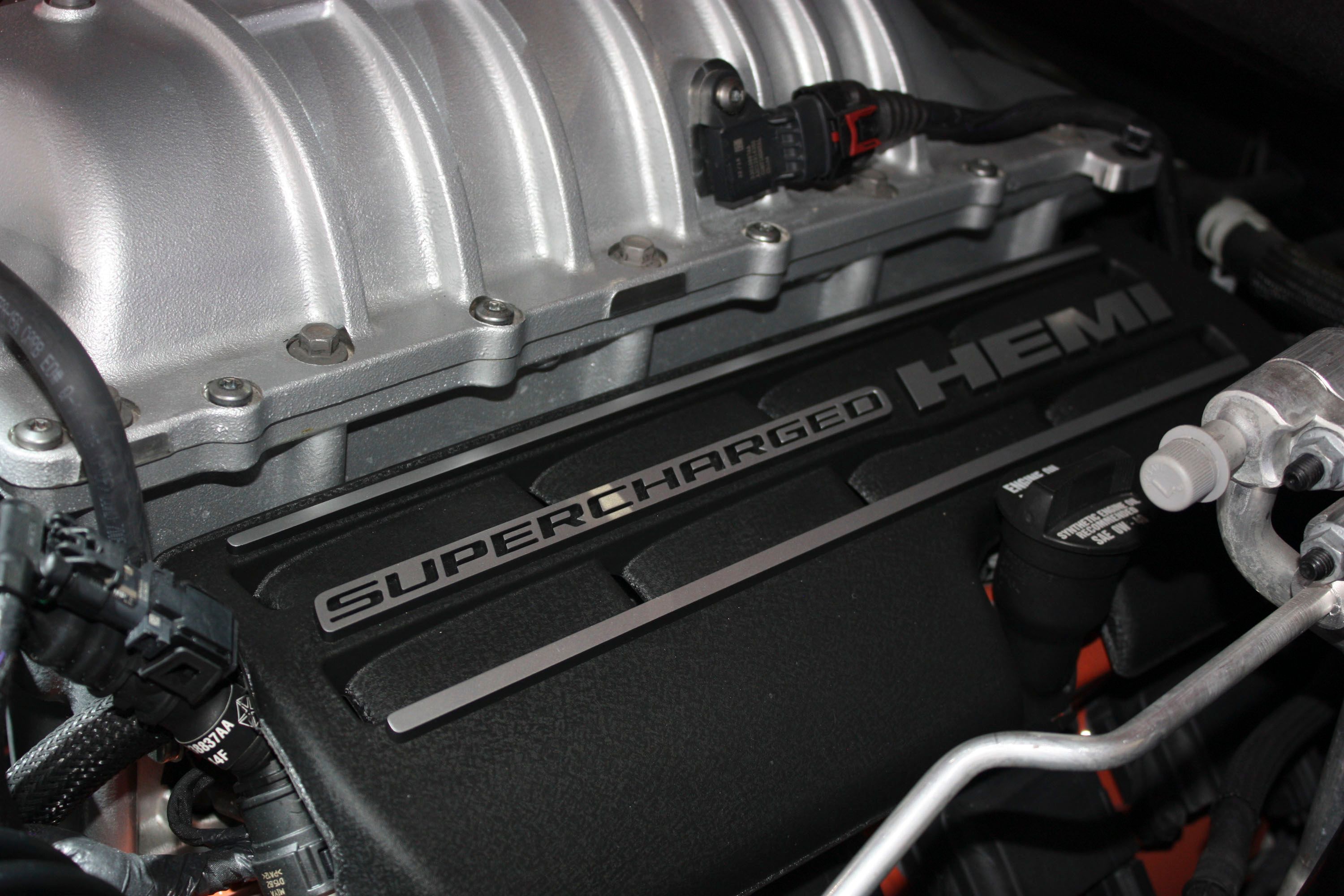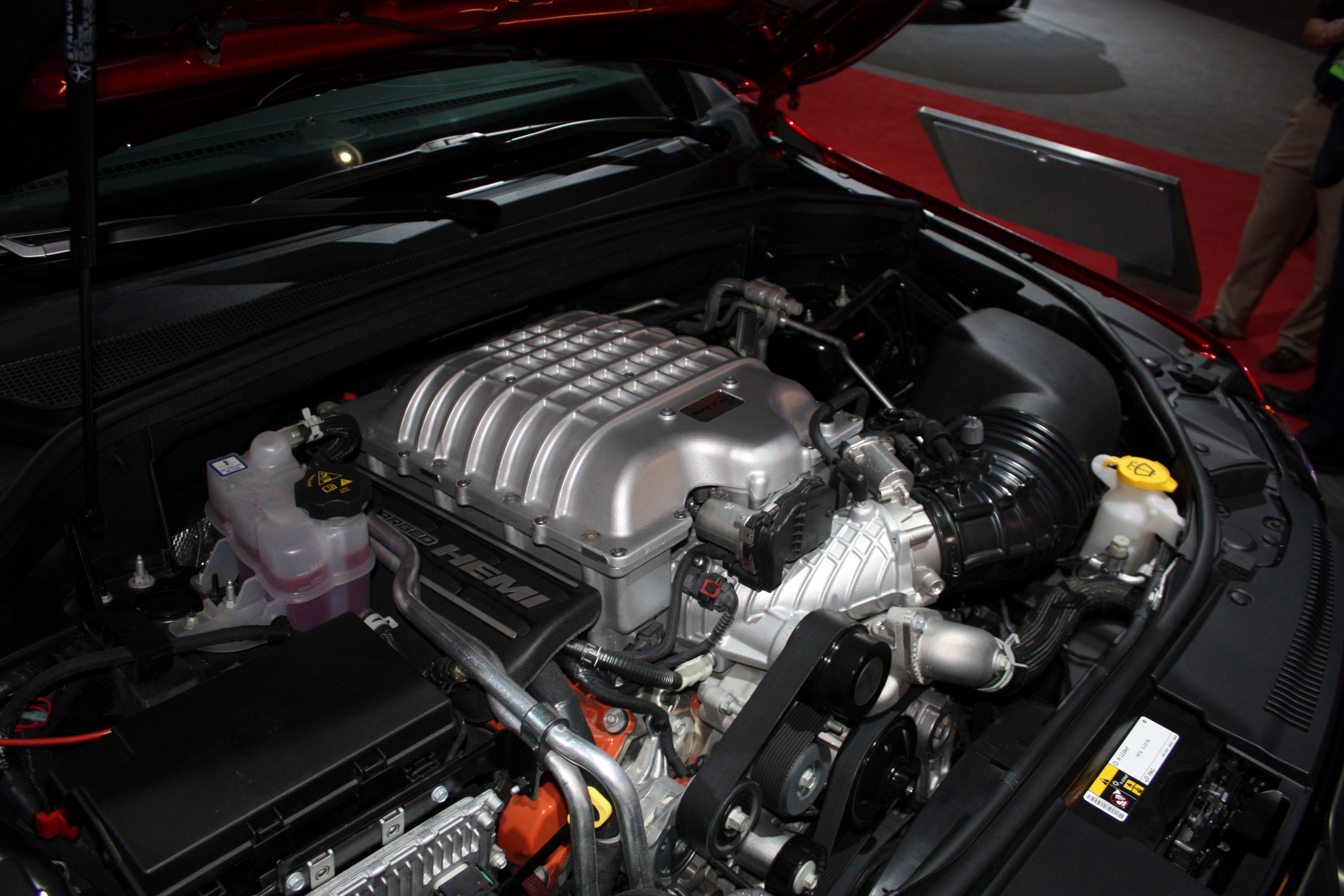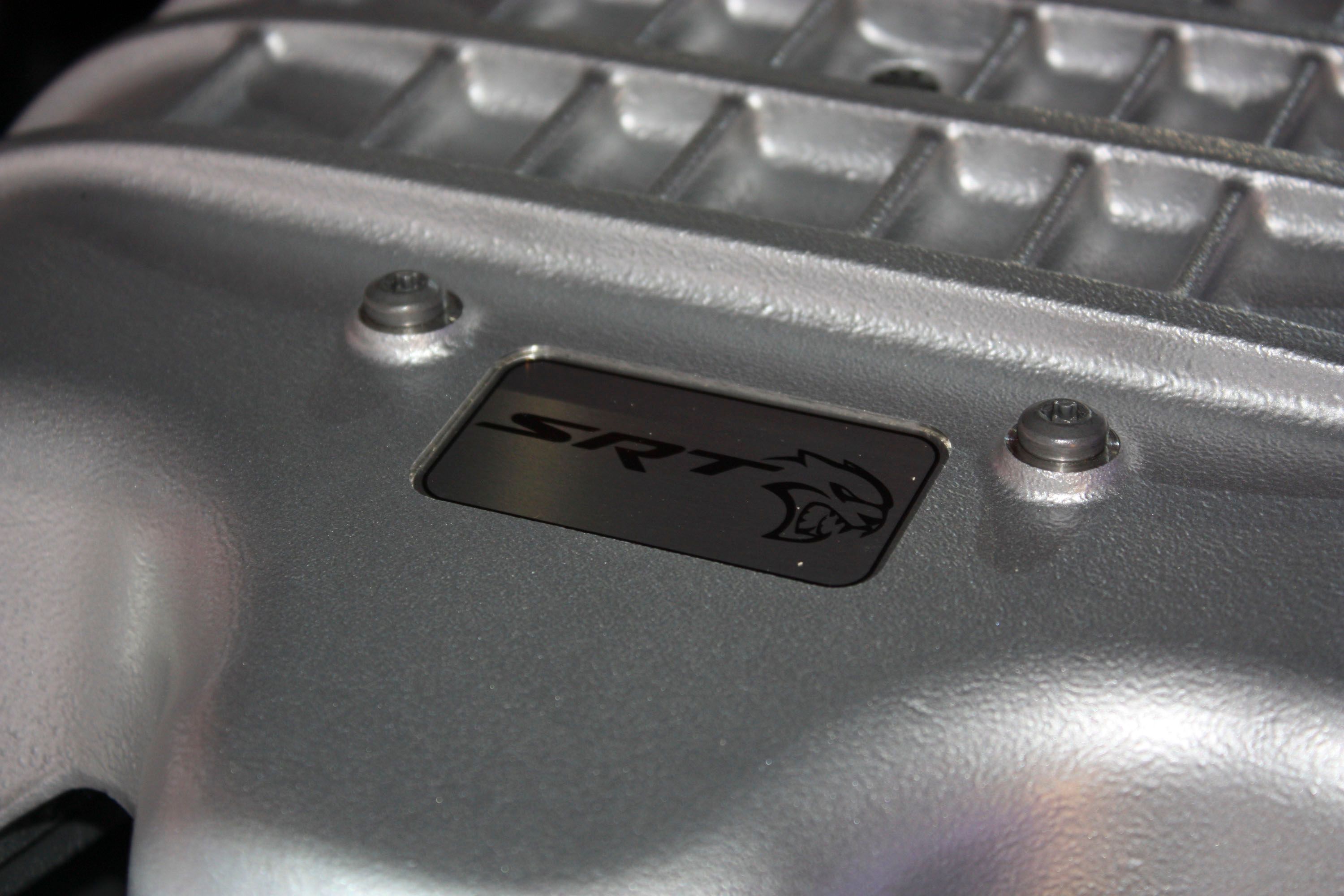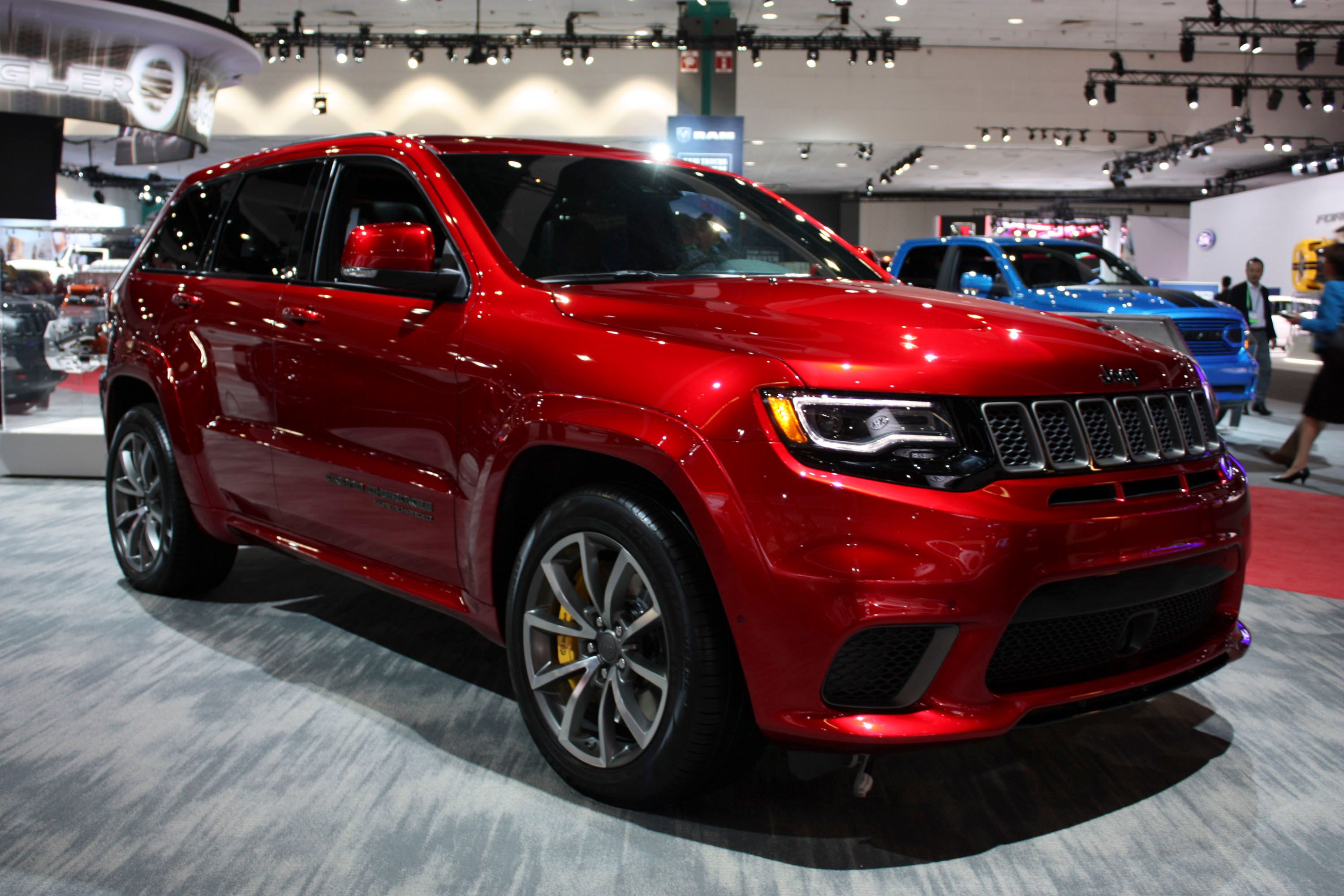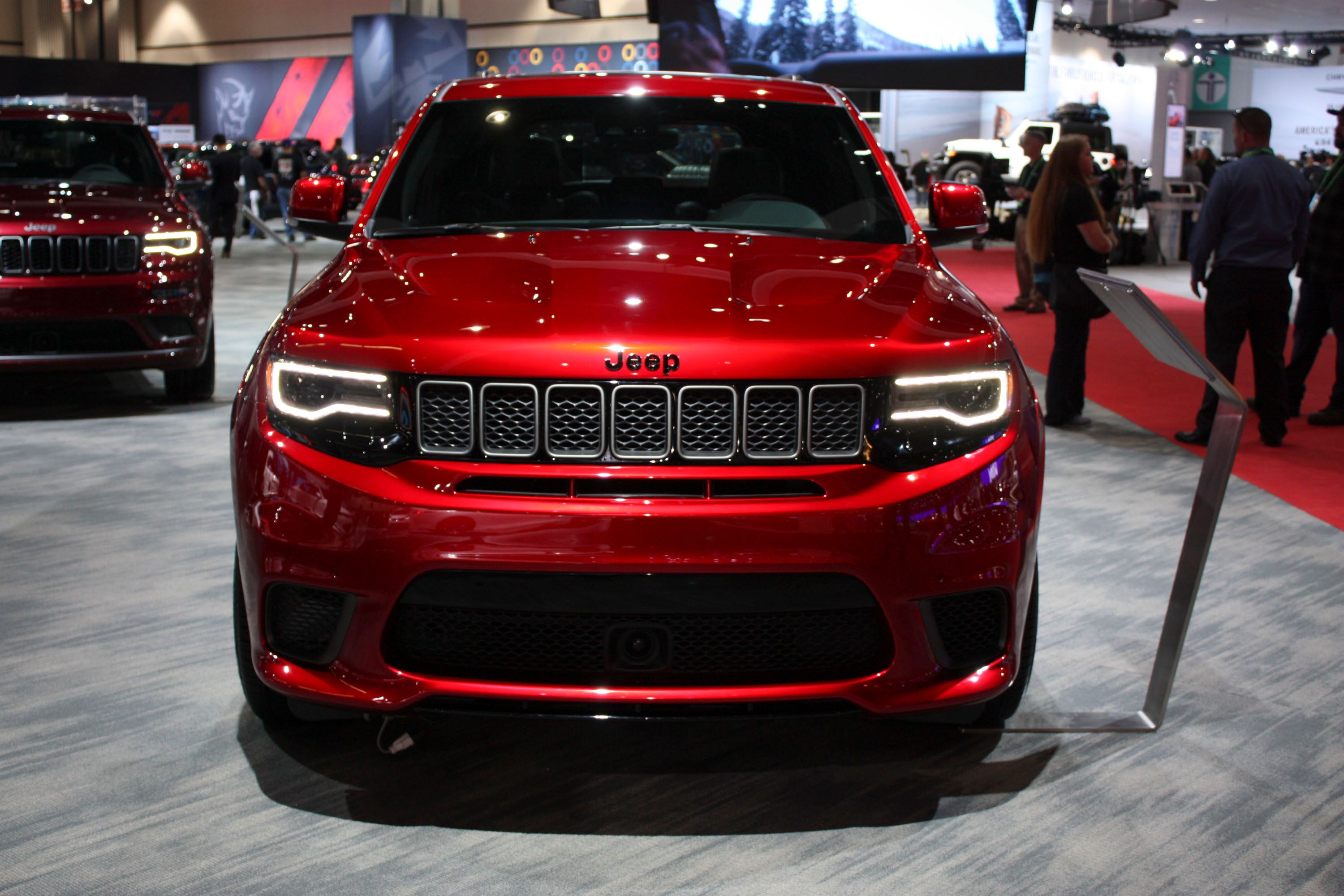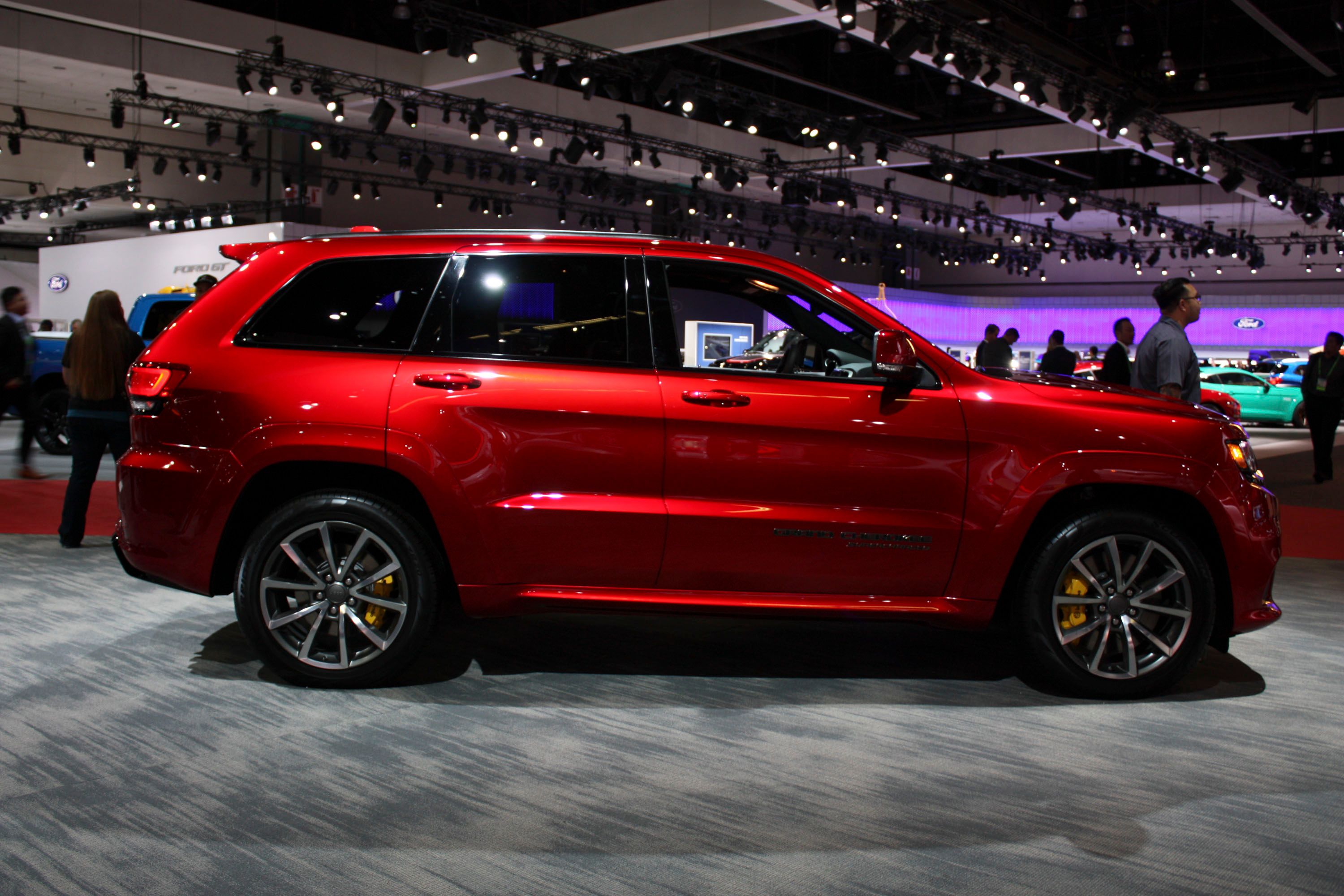The 840-horspower Dodge Challenger SRT Demon stole the show at the 2017 New York Auto Show, but the 2018 Jeep Grand Cherokee Trackhawk certainly garnered a ton of attention. The highly anticipated an long-rumored Grand Cherokee Trackhawk is everything we hoped for and more, including that 707-horspower 6.2-liter supercharged Hemi V-8, beefed-up TorqFlite eight-speed automatic transmission and reinforced full-time 4WD system. The Jeep even gets the Demon’s Torque Reserve system, helping launch five-passenger SUV to 60 mph in an astonishing 3.5 seconds!
Yeah, the 2018 Jeep Grand Cherokee Trackhawk isn’t the most practical vehicle debuting at New York this year, but it’s by far the most practical Hellcat ever produced. Sure, the Charger Hellcat is a usable sedan with little draw-backs, but the Grand Cherokee Trackhawk offers 68.3 cubic feet of cargo volume and a respectable 7,200 pounds of towing capacity. Not to mention, this Jeep will likely do well in wintertime conditions with a set of proper tires, especially since its drive modes include a setting for snow.
Jeep engineers didn’t just shoehorn a Hellcat V-8 under the hood of an ordinary Grand Cherokee, however. The Trackhawk is heavily modified, sharing nearly no common powertrain parts with the standard Grand Cherokees. Even the 6.4-liter V-8-powered Grand Cherokee SRT version comes with less whiz-bang engineering.
Update 08/08/2017: Jeep has announced pricing for the 2018 Grand Cherokee Trackhawk. It will start at $86,995, including the destination fee. Read more in the Pricing section below.
Continue reading for more in formation on the 2018 Jeep Grand Cherokee Trackhawk
2018 Jeep Grand Cherokee Trackhawk
- Make: Array
- Model: 2018 Jeep Grand Cherokee Trackhawk
- [do not use] Vehicle Model: Array
Exterior
Wow, what a mean looking beast. Jeep designers didn’t let the engineering team have all the fun. This 707-horse monster wears a unique hood with functional heat extractors styled after the Hellcat Charger and Challenger. The front bumper is also new, restyled in the name of aerodynamics and cooling. You’ll notice the fog lights are gone. That’s because the driver-side vent provides intake air for the supercharger. The lower grille and three-slot mid grille keep airflow moving through the radiator and intercooler.
Wider fender flares keep the 295/45-series Pirelli tires covered. Large 20-inch Titanium-finish wheels come standard, while optional lightweight 20-inch forged aluminum wheels shave a total of 12 pounds. Jeep gives its customers the option between Pirelli Scorpion All-Season rubber or Pirelli P Zero Three-Season rubber with an increased speed rating. Regardless of choice, yellow Brembo brake calipers lurk behind, clamping the largest rotors ever supplied on a Jeep product. The single piece iron rotors measure 15.75 inches up front and 13.78 inches out back. The fort calipers are six-piston units, while the rears are four-piston units. Jeep says the Grand Cherokee Trackhawk will top from 60 mph in a supercar short 114 feet.
Around back, the rear bumper is completely new. It features black trim around the new quad, chrome-tipped exhaust pipes and hidden trailer hitch receiver. A black plastic scuff guard keeps scratches from luggage off the bumper. LED taillights match the LED headlights up front, along with the LED daytime running lights. Trackhawk-specific badges include the “Supercharged” script on the front doors, along with the Trackhawk winged logo on the tailgate. Honestly, Jeep designers have kept the Trackhawk looking rather subtle – likely a good thing for its customer base.
The 2018 Grand Cherokee Trackhawk is offered in nine colors, along with two Trackhawk-only colors. These include Billet Silver, Granite Crystal, Diamond Black, Ivory Tri-coat, Bright White, Velvet Red, and True Blue. Rhino and Redline 2 are the two unique colors.
Exterior Dimensions
|
Wheelbase (Inches) |
114.7 |
|
Overall Length (Inches) |
189.8 |
|
Overall Width (Inches) |
84.8 |
|
Overall Height (Inches) |
67.9 |
|
Track, Front/Rear (Inches) |
65.7/64.8 |
|
Approach/Departure Angle (degrees) |
18/23.1 |
Interior
The designers didn’t just have fun with the Trackhawk’s exterior. In here, the Grand Cherokee is treated to several upgrades over the standard Grand Cherokee. Most obvious are the Ruby Red leather seats. These are exclusive to the Trackhawk model, but come at an extra cost. The standard seats are Nappa leather and suede and feature the Trackhawk emblem embroidered into the seatbacks. Optionally, a full leather package is available in either black or the aforementioned Ruby Red. Also optional are Ruby Red seatbelts and a dual-pane panoramic moonroof.
Other changes include an updated gauge cluster and infotainment system. The guage cluster now features a digital tachometer in the center TFT screen, moving the speedometer to the left as an analog gauge. Coolant temperature and fuel levels are shown on the right as analog gauges, too.
The standard 8.4-inch Uconnect system is upgraded with the latest SRT Performance Pages. These menu and display screens show vital drivetrain parameters like oil pressure and boost, along with driver-selectable settings for drive modes and horsepower settings. Yep, like the other Hellcats, the Grand Cherokee Trackhawk comes with a 500-horsepower black key fob and the 707-horsepower red key fog. For those wanting to stick to the red key, the engine can be dialed back to 500 horsepower by a simple menu setting.
Other unique changes include the semi-flat-bottom steering wheel with contrast stitching, perforated leather, paddle shifters, and the Trackhawk badge. The dash is accented by the new Premium Metal Package, which adds real metal pieces.
Comfort items include dual-zone climate controls, heated and cooled front seats, heated rear seats, Active Noise Cancellation, a premium headliner, an available dual-screen entertaiment package for the second row, and all the modern in-dash technology like Apple CarPlay and Android Auto. Two audio systems are available, with an 825-watt, 19-speaker Harman Kardon system as the premium choice.
Interior Dimensions
|
Headroom front/rear (Inches) |
39.9/39.2 |
|
Legroom front/rear (Inches) |
40.3/38.6 |
|
Shoulder Room front/rear (Inches) |
58.7/58.0 |
|
Hip Room front/rear (Inches) |
57.0/56.2 |
|
Cargo volume seats down/folded (cu. ft.) |
36.3/68.3 |
|
Passenger plus Cargo Volume (cu. ft) |
140.5 |
Powertrain
Of course, the biggest news is what lies under the hood. Jeep engineers borrowed the 6.2-liter Hellcat Hemi V-8 from the Dodge Charger and Challenger, leaving it mostly unchanged. The exhaust system is unique to the Jeep due to packaging issues and the 2.4-liter Roots-style supercharger borrows the Torque Reserve system developed for the Dodge Challenger SRT Demon. The Jeep still produces 707 horsepower, but its torque rating is down five pound-feet to 645 thanks to a slighty more restrictive exhaust system – again, due to packaging issues. You won’t miss those five pound-feet though, as the engine gets the Grand Cherokee Trackhawk moving to 60 mph in a staggering 3.5 seconds on its way through the quarter-mile in only 11.6 seconds at 116 mph.
For reference, the 2017 Chevrolet Camaro ZL1 with its 10-speed automatic hits 60 mph in the same 3.5 seconds and runs the quarter-mile in 11.4 seconds at 127 mph. Oh, and it brakes from 60 mph to a stop in 107 feet. These numbers aren’t far off – 0.2 seconds over 1,320 feet is arguably negligible, while the Jeep is only 11 mph slower. And braking – the track-tuned, high-performance ZL1 with a curb weight of roughly 3,800 pounds only stops seven feet shorter than the Jeep Grand Cherokee Trackhawk. We don’t even know how much it weights, but the standard version can weight between 4,500 and 5,100 pounds. Plus, everyone knows the iron-block Hellcat engine is heavier than the 6.4-liter and 5.7-liter V-8s, not to mention the extra weight of the upgraded full-time 4WD system. Needless to say, the Grand Cherokee Trackhawk is no joke.
So how did Jeep engineers manage this? Science!
Well, really it was simple engineering and a green light from the corporate bean counters. It’s like this: beefier parts withstand more abuse. Therefore, the Grand Cherokee’s mechanicals had to undergo gym time to deal with 707 horsepower and 645 pound-feet of torque without grenadine onto the pavement.
The ZF-sourced, TorqFlite eight-speed automatic is upgraded for Hellcat duty, much like the Charger and Challenger Hellcats. Its computer-controlled shift schedules are new, set to accommodate engine torque gradients, kick-down events, grade changes, and longitudinal and lateral acceleration.
Mated behind the TorqFlite is a heavily modified Quadra-Trac 4WD system. This on-demand 4WD system is a single-speed transfer case that sends a pre-determined percentage of power to the front wheels when extra traction is needed. There’s no driver intervention needed, no big levers to pull, or manual wheel hubs to lock. For Hellcat duty, the transfer case was given larger forged steel chain sprockets with a wider chain.
Out back, the rear differential is upgraded with a limited slip clutch pack. The housing design itself is new, along with the drive shaft, and ring-and-pinion tooth geometry. A new four-point mount holds the differential in place, while stronger axle half-shafts send power to the wheels. The shafts are made from ultra-high-strength 300M low-alloy vacuum melted steel and have upgraded eight-ball outboard CV joints.
The Grand Cherokee Trackhawk’s suspension is also calibrated for more abusive driving. The front suspension uses short and long arms with coil springs and adaptive Bilstein dampers. Both control arms are aluminum, along with the knuckle and clevis. The stabilizer bar, though strong, is hollow. Out back, the Jeep uses a multi-link design with coil springs. Those adaptive Bilstein dampers control the ride to the driver’s liking, while aluminum control arms, independent upper links and a separate toe link keep the wheels in place. A hollow anti-roll bar is used here, as well.
Drivetrain Specifications
|
Engine |
6.2-LITER SUPERCHARGED V-8 |
|
Power |
707 HP @ 6,000 RPM |
|
Torque |
645 LB-FT @ 4,800 RPM |
|
Max. Engine Speed |
6,200 RPM |
|
Transmission |
eight-speed automatic |
Drive Modes
Like most modern performance vehicles, the Grand Cherokee Trackhawk uses electronics to tailor the driving experience. In addition to the Command-Trac transfer case, the Jeep uses a performance version of its Selec-Track system. This gives the driver control over the drivetrain’s behavior, along with the suspension, traction control, and stability control.
The Selec-Track system offers five modes: Auto, Sport, Track, Tow, and Snow. These modes change a number of parameters, making the Trackhawk adapt to its surrounding and the driver’s preferences. There’s also a Custom mode that lets the driver dial in the various components to his liking.
- Auto mode adapts to any condition, splitting power between the front and rear in a 40/60 split.
- Sport mode quickens the transmission shifts by 50 percent over Auto mode, the stability control, steering, suspension, are set for more aggressive driving Torque is split 35/65.
- Track mode brings the most performance by reducing shift times by 68 percent over Auto mode, setting the stability control, 4WD system, steering, and suspension for all-out driving. Torque split is 30/70.
- Tow mode is obviously meant to assist in towing up to 7,200 pounds. It changes the torque delivery for better off-the-line starts and adjusts the suspension to fight trailer sway and suspension bounce. Torque split is oddly set at 60/40, with more power going to the front wheels.
- Snow mode helps get the most traction in low-traction environments. Traction and stability control are heightened, while the transfer case splits torque 50/50 between the front and rear axles.
Pricing
Jeep clearly has a lot to be proud of with the 2018 Grand Cherokee Trackhawk. However, Jeep has translated that pride right into the bottom line, making this 707-horsepower more expensive than the 2018 Dodge Challenger SRT Demon! Yes, the Trackhawk is expensive with a starting price of $85,900 plus a $1,095 destination fee. The Demon starts $2,000 less.
Jeep boss Mike Manley, said, “As the most powerful and quickest SUV, there is nothing else like the Grand Cherokee Trackhawk in the market, and with its starting price of $85,900, there is no better value for a high-performance SUV.” Manley does have a point – the Jeep is far less expensive than its competition. And anyone buying a performance-oriented SUV with 500+ horsepower (much less 707!) probably isn’t worried about how much monthly payment are.
Jeep is still quiet of options and extra features for the Grand Cherokee Trackhawk, so its price could potentially grow even higher. But for those undaunted by the price, Jeep dealerships will begin taking orders on August 10, 2017 and deliveries should begin towards the end of the year.
Competition
Range Rover Sport SVR
The Land Rover Range Rover Sport SVR is a terribly impressive machine that’s actually better suited for daily life and a smidgen of off-roading than the Grand Cherokee Trackhawk. It starts with the Range Rover Sport, the model between the full-size Range Rover and the Evoque. JLR engineers then tweaked nearly every aspect about the SVR’s suspension and drivetrain to make it the fasted Land Rover to date.
Power comes from the familiar and venerable 5.0-liter supercharged V-8. It generates 550 horsepower and 502 pound-feet of torque that’s sent through a similar ZF eight-speed automatic transmission and onto a full-time 4WD system. The Sport SVR hits 60 in 4.6 seconds and through the quarter-mile in 13.0 seconds at 109 mph. That’s well behind the Jeep. Still, for those wanting a more high-brow ride with oodles of class, the Range Rover is the proper choice.
Prices start around $113,000 and crest around $150,000 for a full-loaded model.
Learn more about the Range Rover Sport SVR here.
Mercedes-AMG GLE63 S 4Matic
Far more on the crossover side of the equation, the Mercedes-AMG GLE is the replaced the ML Class, offering more comfort and tons of high-tech features. The mack-daddy performance version wears an AMG badge and packs a 5.5-liter twin-turbo V-8 making 577 horsepower and 561 pound-feet of torque when fitted with the S package. The DOHC, all-aluminum V-8 uses direct fuel injection and is mated to a seven-speed automatic with a full-time AWD system. The German powertrain sends this Merc to 60 mph in just 3.8 seconds and through the quarter-mile in 12.2 seconds at 115 mph. Impressive numbers.
Prices for the Mercedes-AMG GLE63 S 4Matic start at $108,185 and can reach well into the mid $120,000s. For those who want the German clout that goes along with your high horsepower, the GLE is the proper choice.
Find out more about the Mercedes-AMG GLE63 S 4Matic here.
Conclusion
Wow, it’s hard to believe the times. We’ve got autonomous vehicles thinking for themselves and a Jeep SUV that runs toe-to-toe with the baddest Camaro that Chevy currently builds. How crazy is that? The folks at FCA certainly deserve applause for the hard work, engineering expertise, and outright balls it takes to build products like the Challenger Demon and Grand Cherokee Trackhawk. The late 1960s don’t have anything on 2017.
It’s downright amazing how well this Jeep performs. Not only does it go fast, but it stops well, hauls five people and their stuff in comfort, and can tow 7,200 pounds. Nobody in their right mind can justify the Grand Cherokee Trackhawk as a purely practical purchase, but its benefits absolutely make it a wonderfully well-rounded machine capable of many things. Yeah, the old saying about being the jack of all trades and the master of none applies, but dadgummit, it’s hard not to be impressed.
Nicely done, Jeep.
References
Read our full review on the Dodge Challenger SRT Demon.
Read our full speculative review on the 2018 Jeep Grand Cherokee.
Read our speculative review on the 2018 Jeep Grand Wagoneer.
Rread our speculative review on the 2018 RAM 1500 SRT Hellcat.


